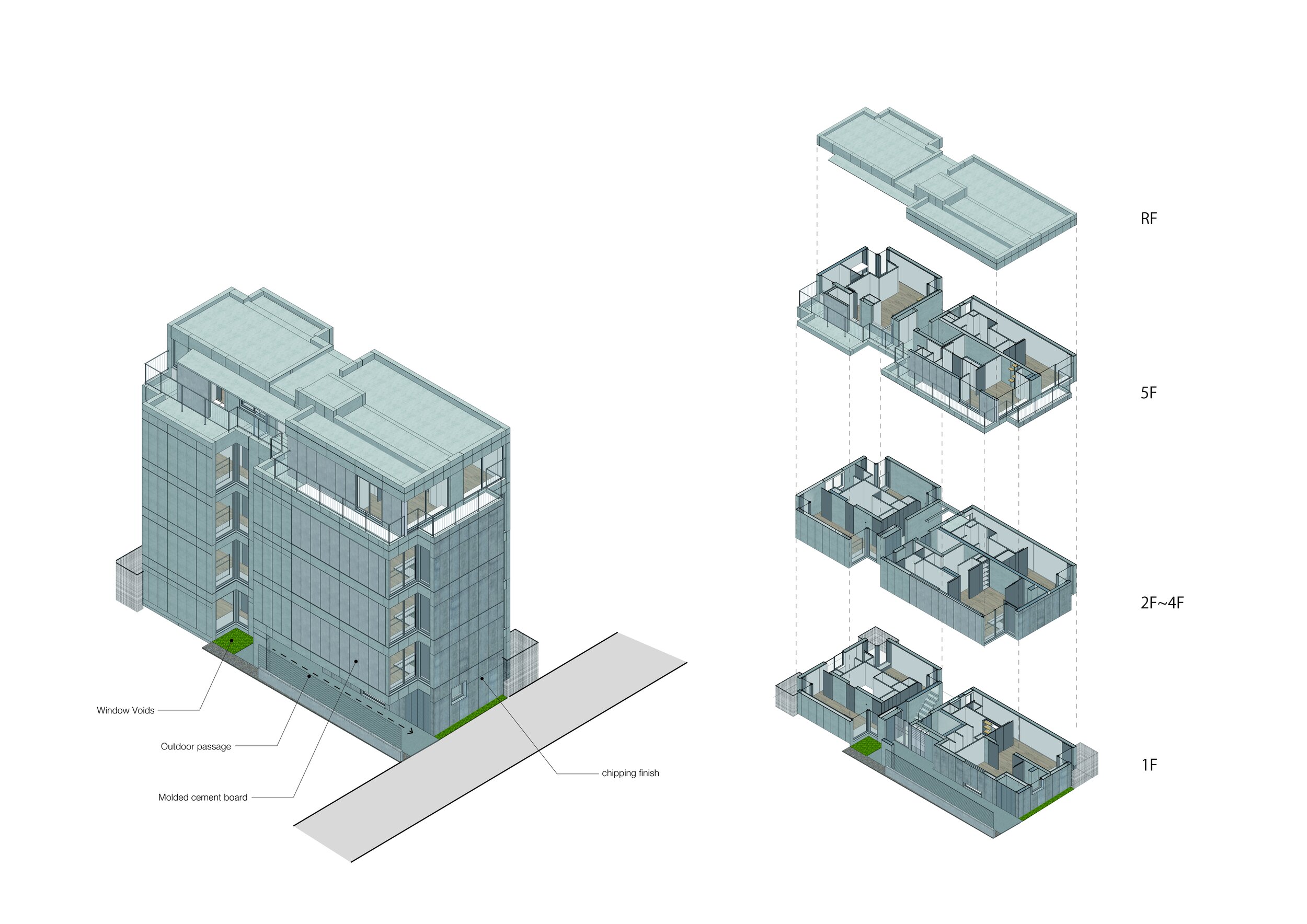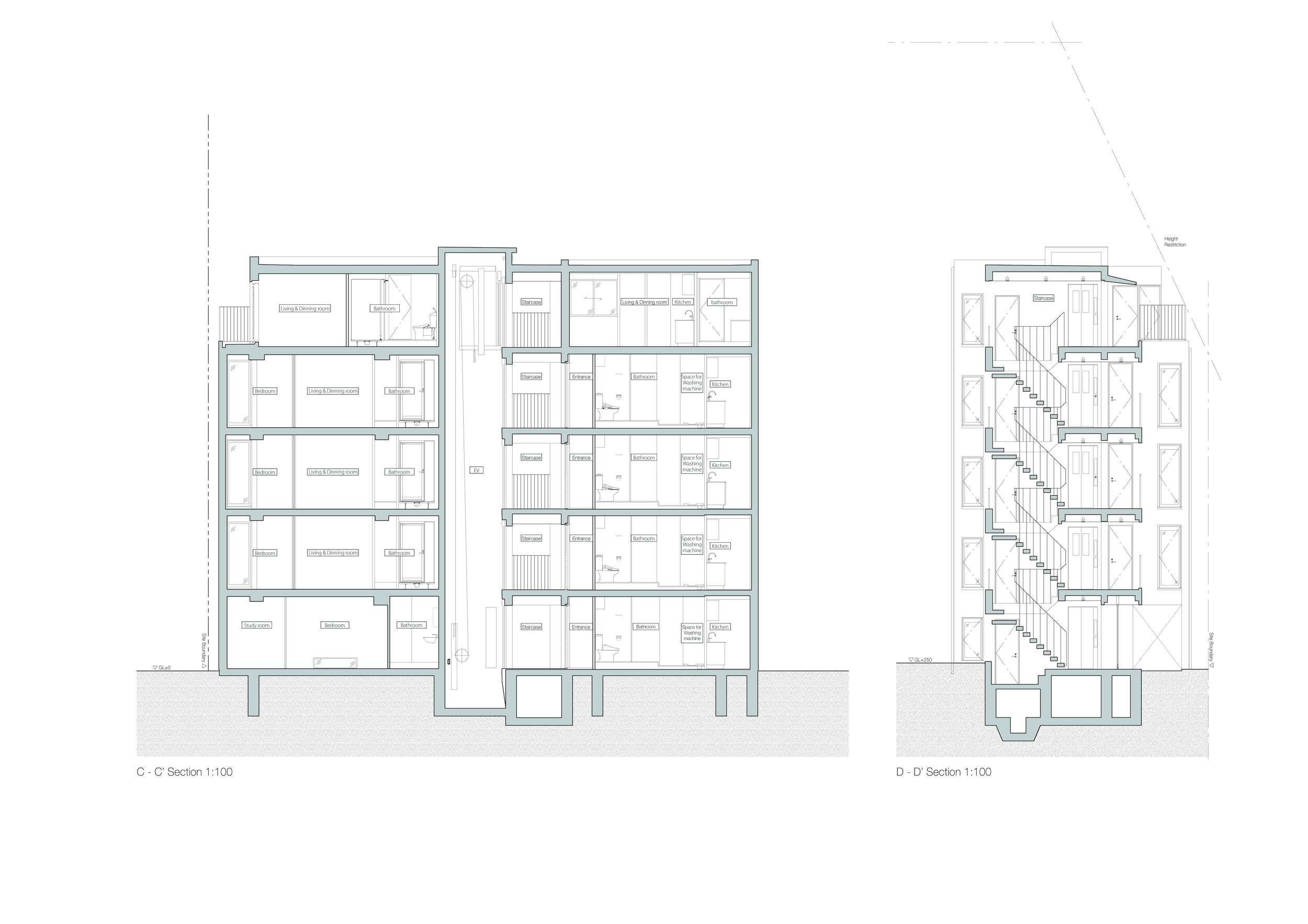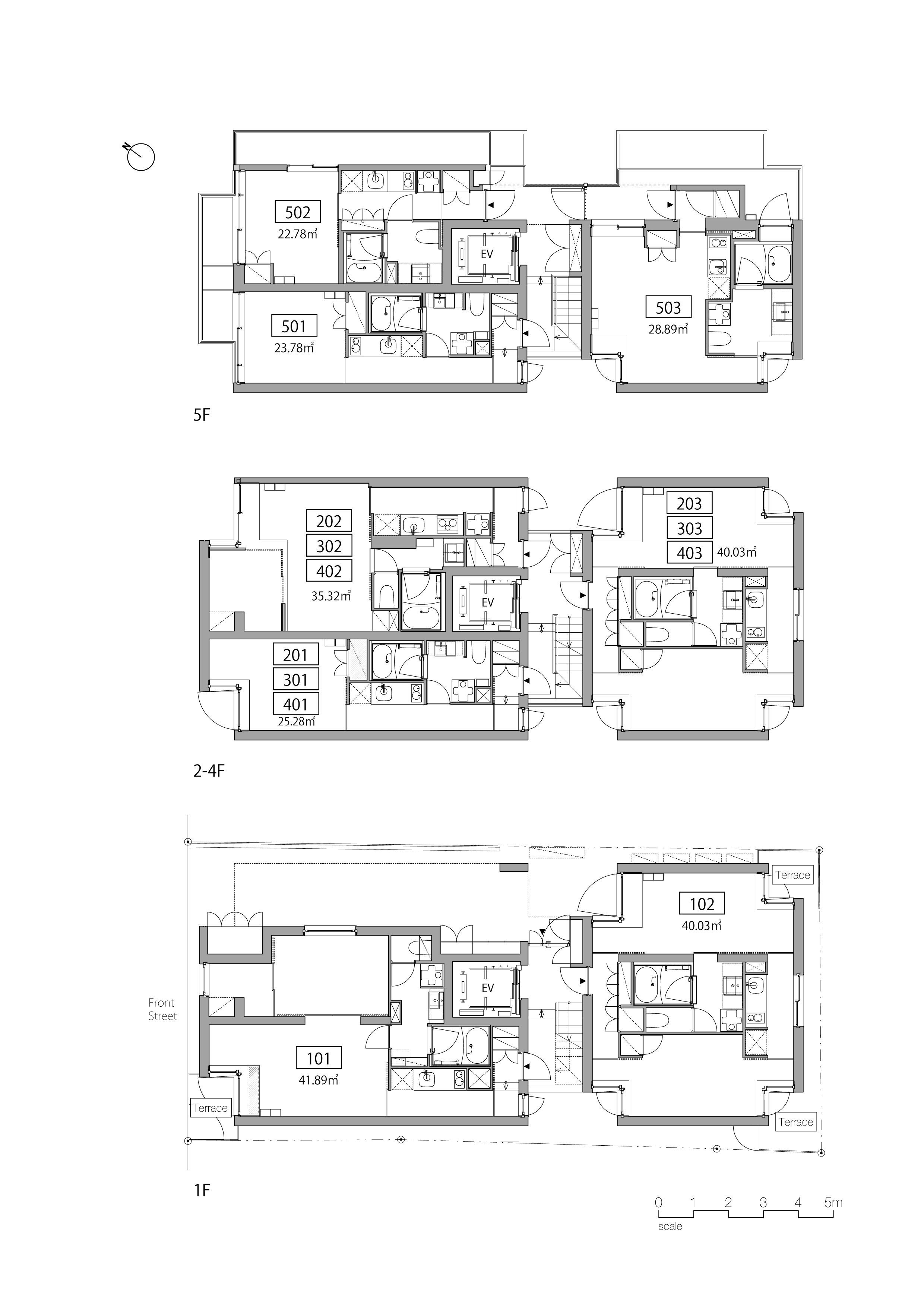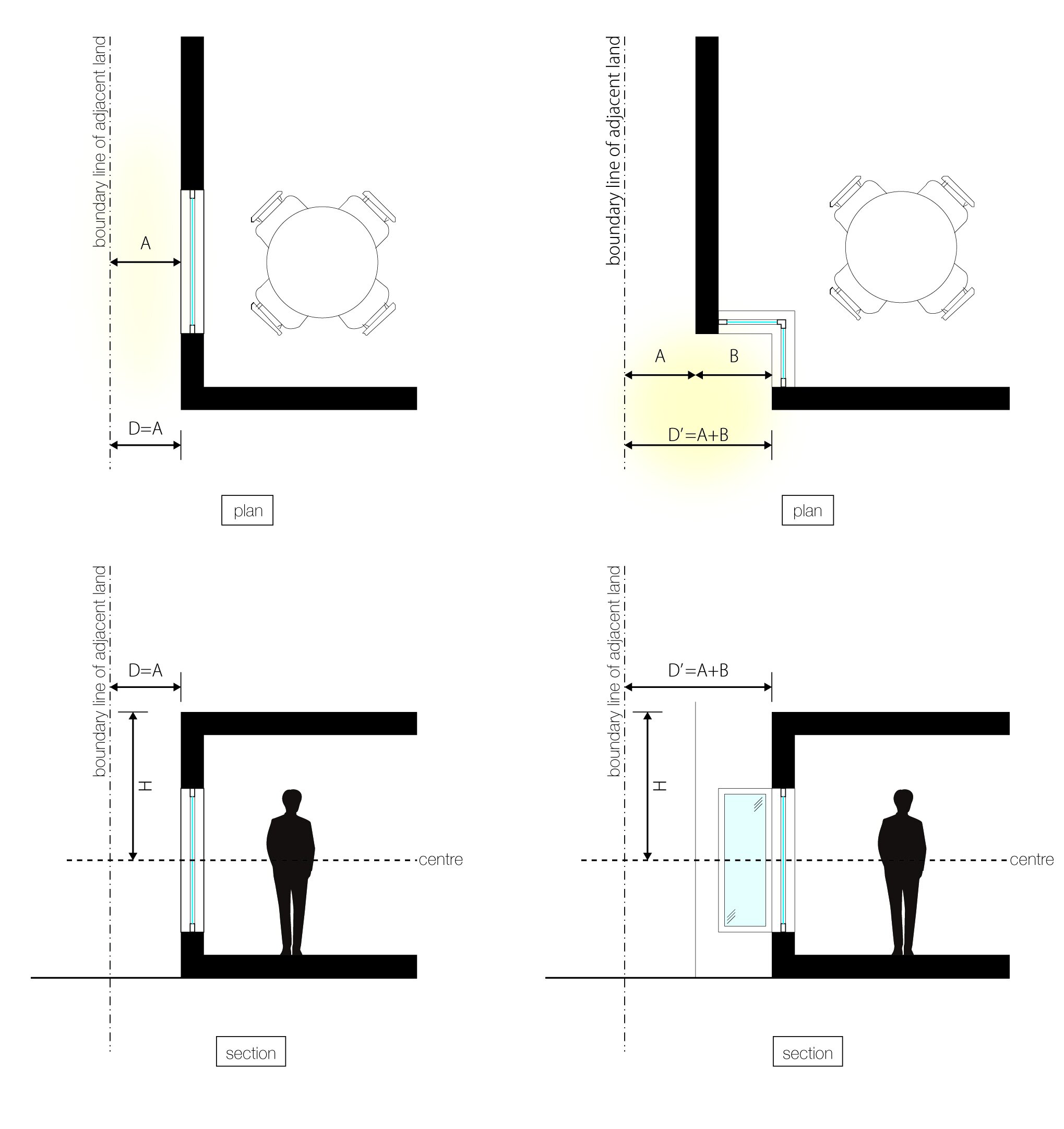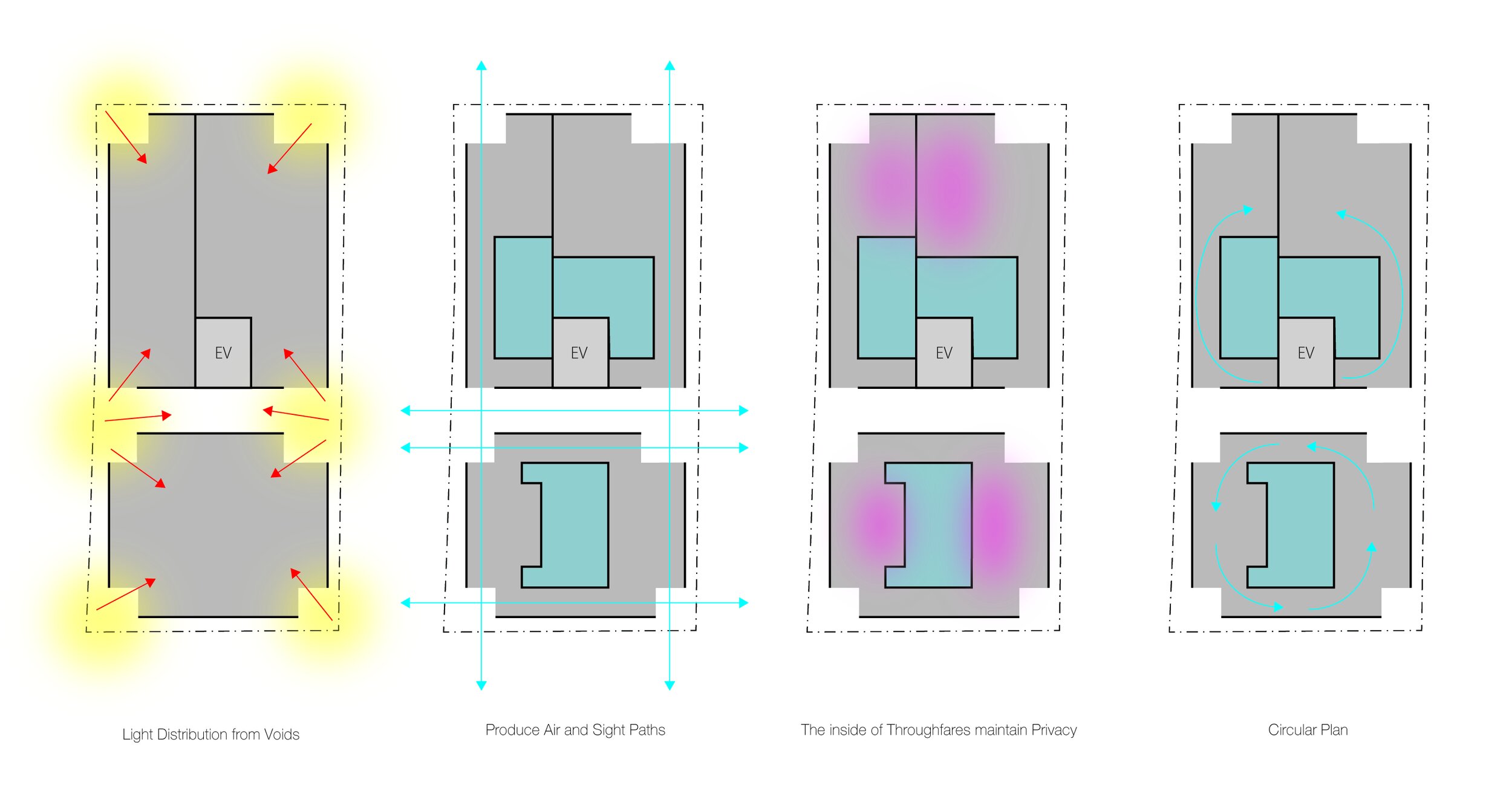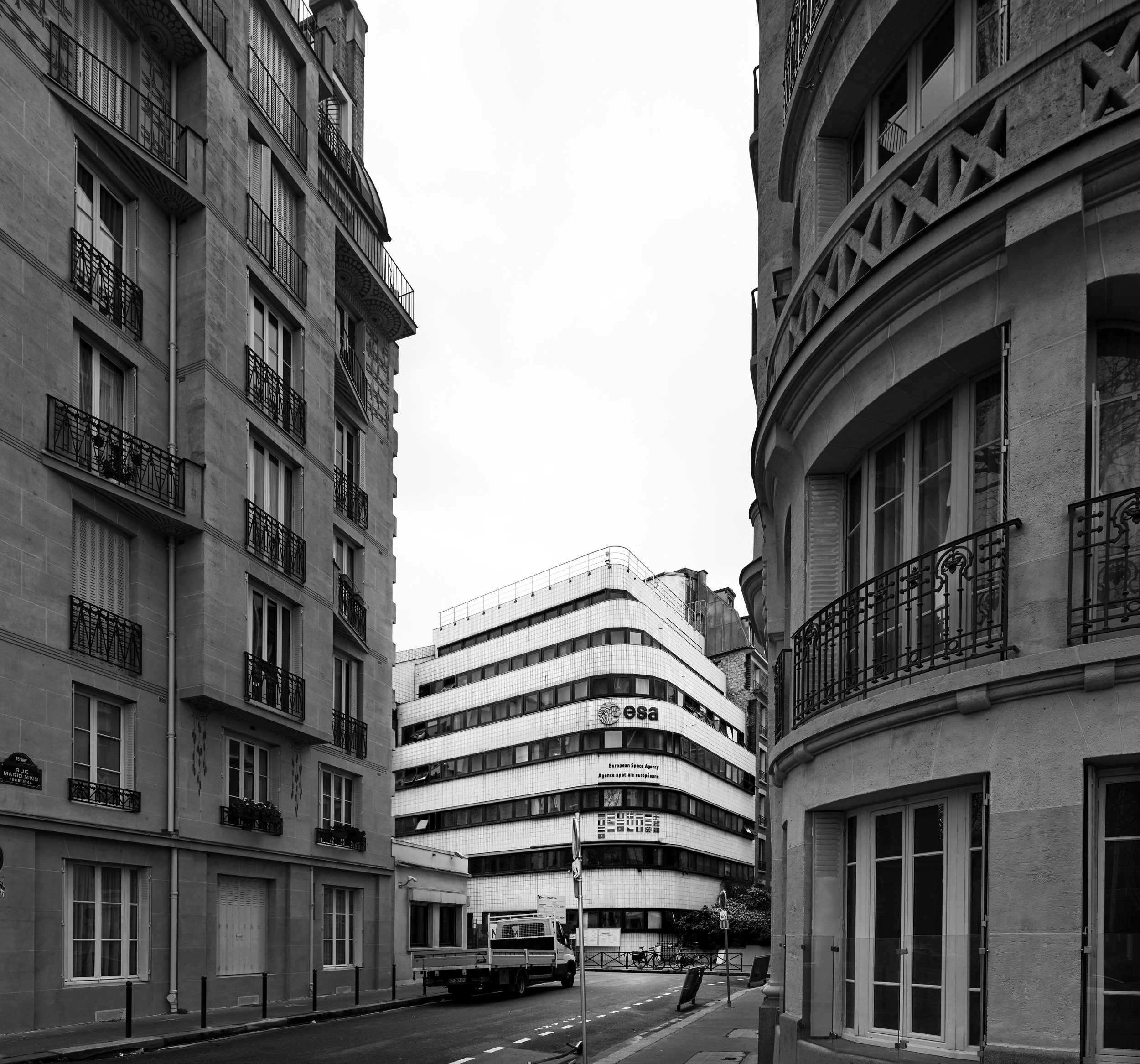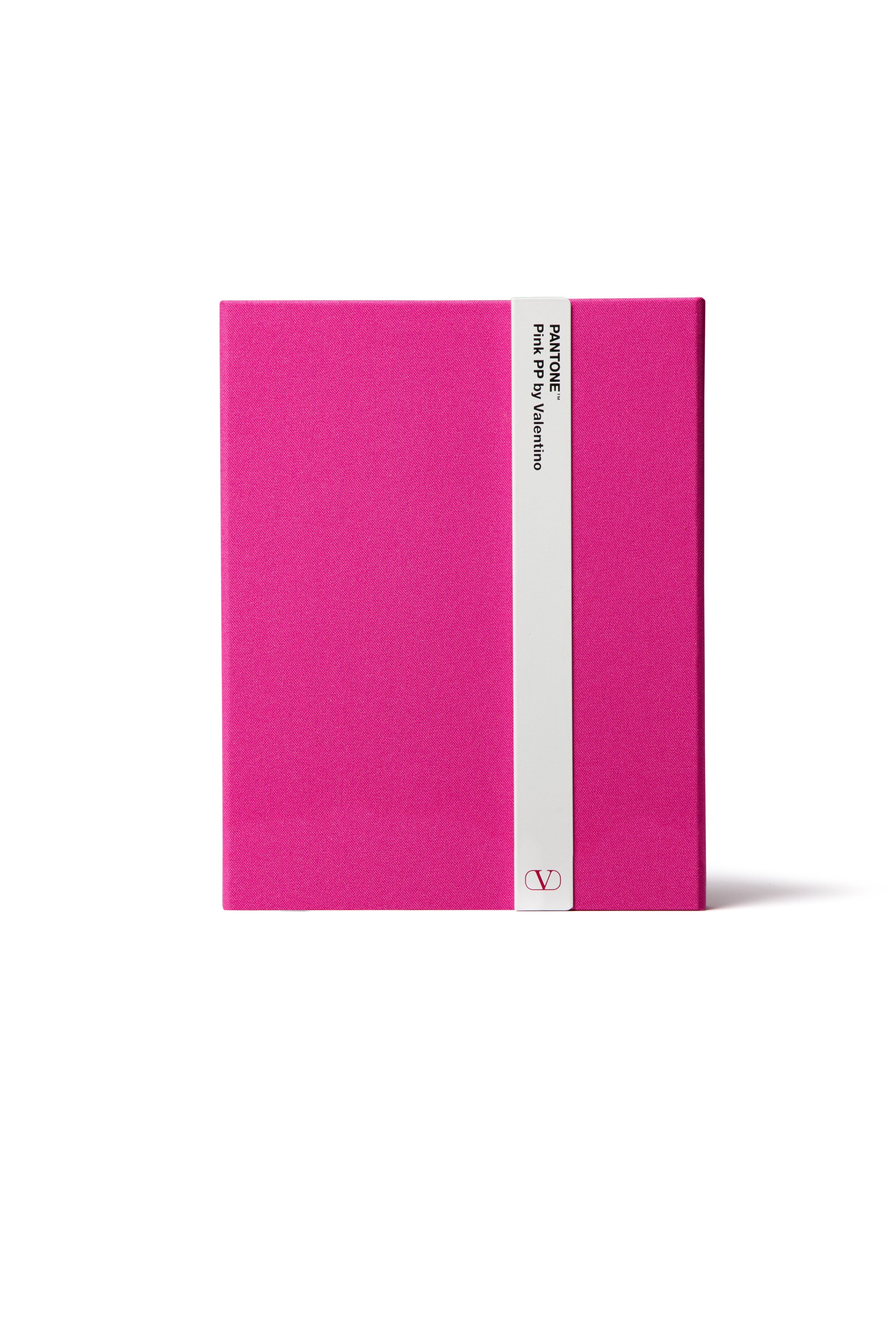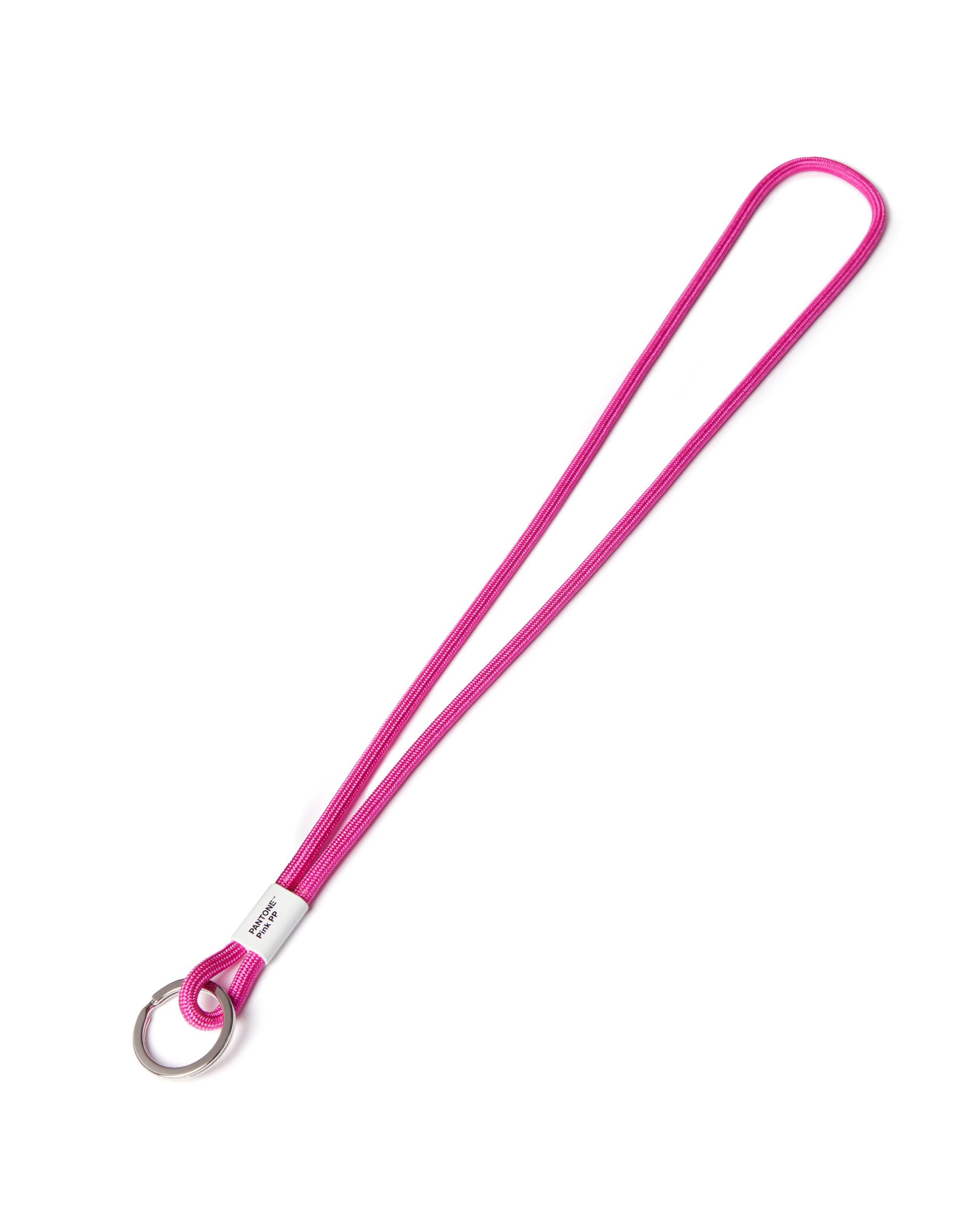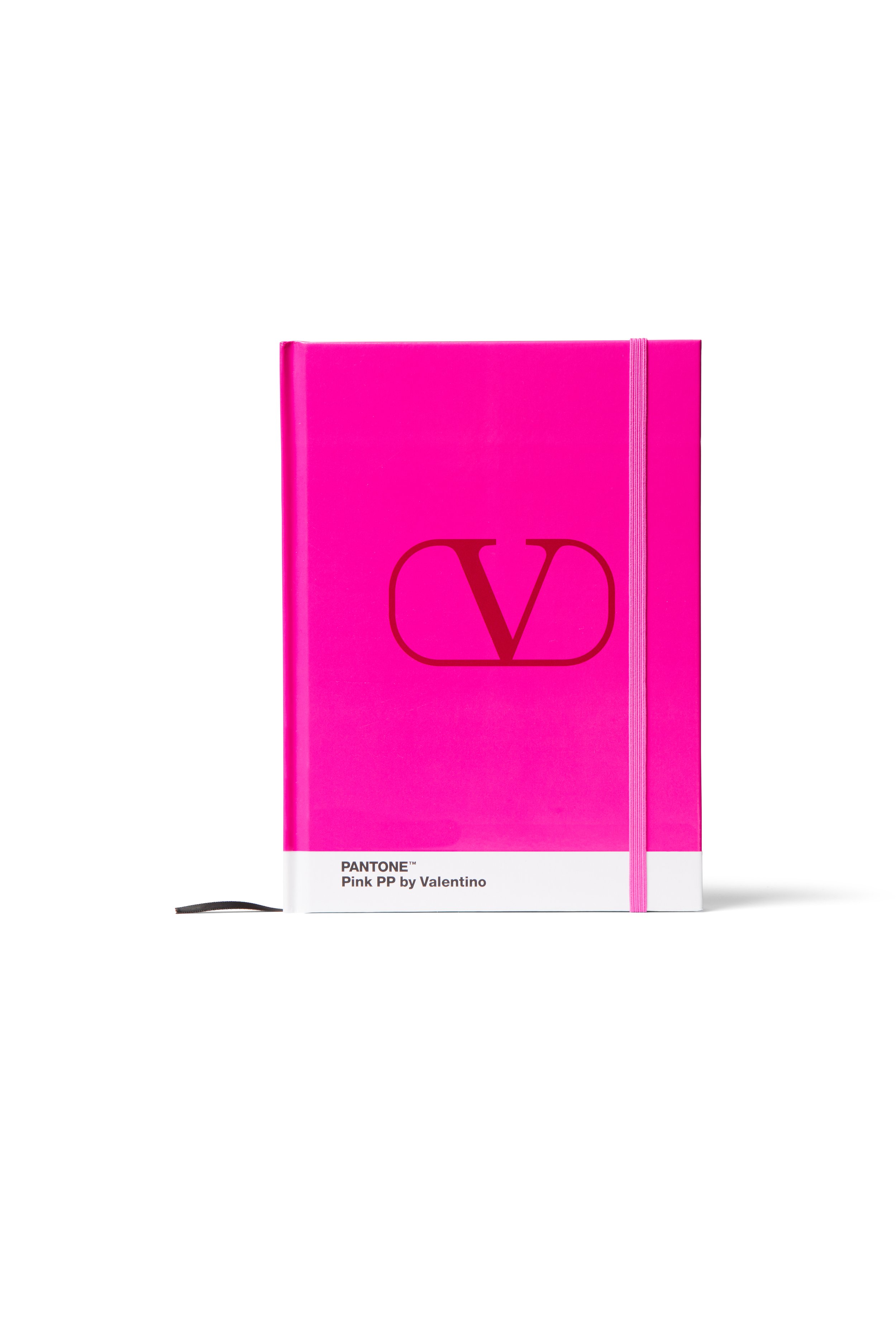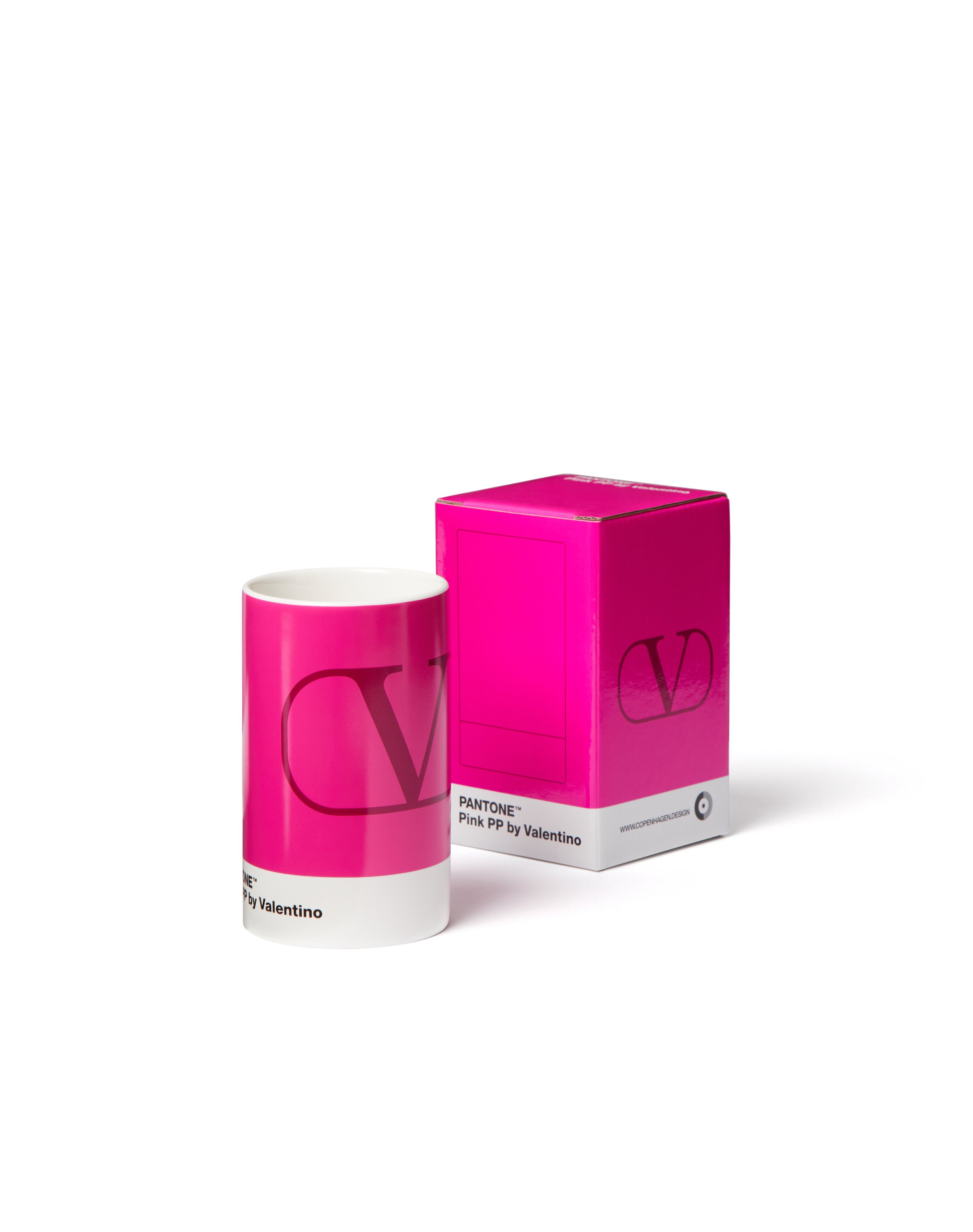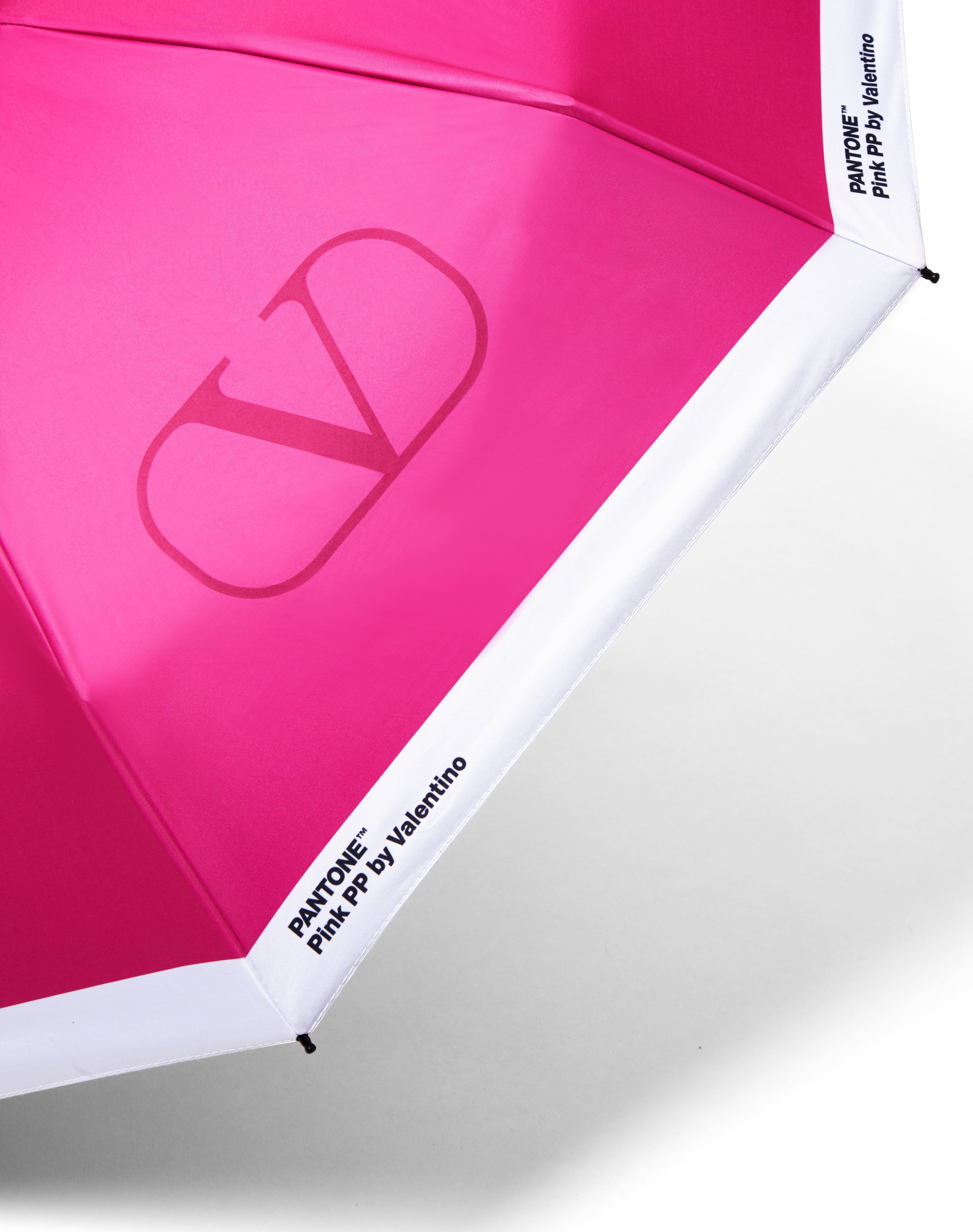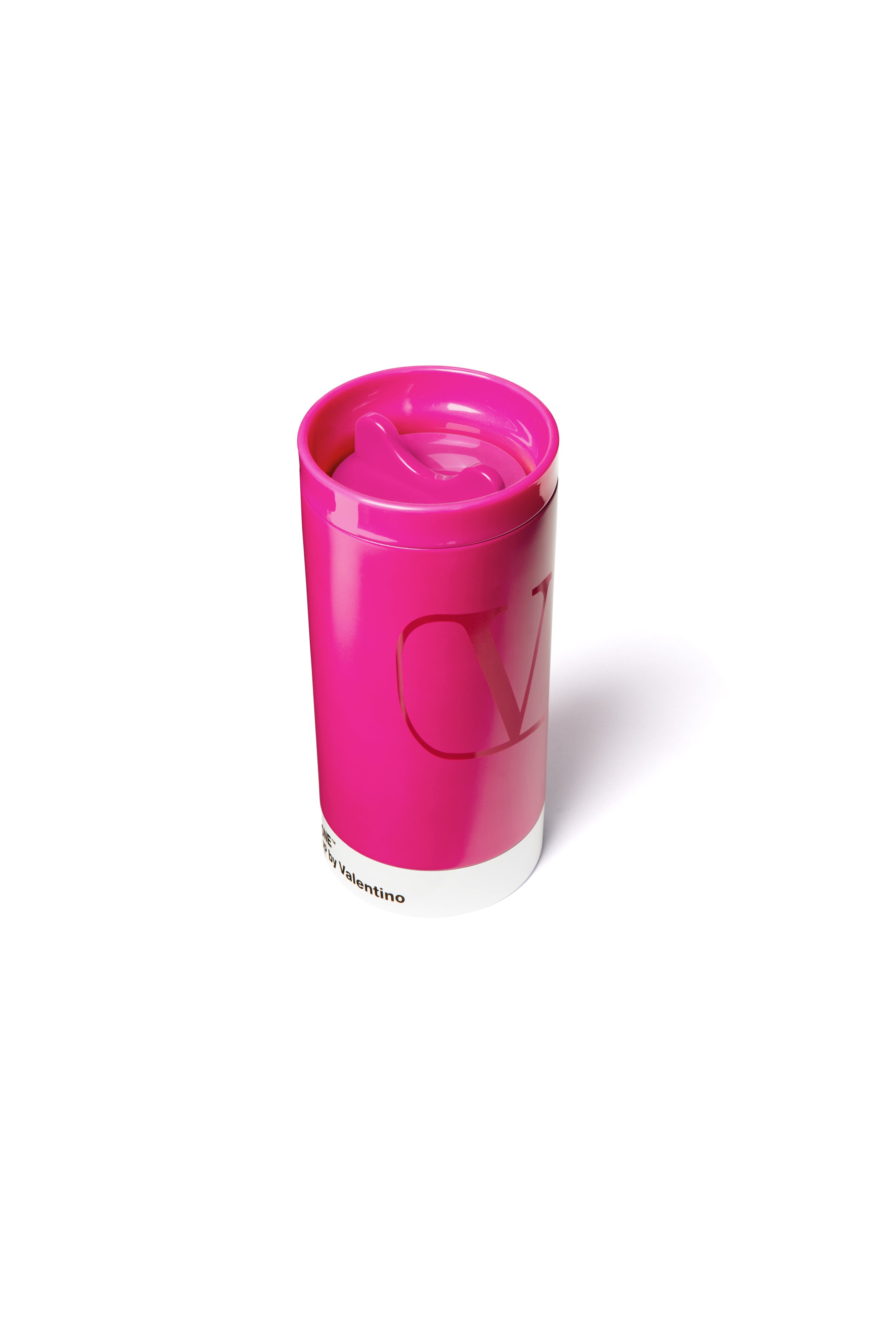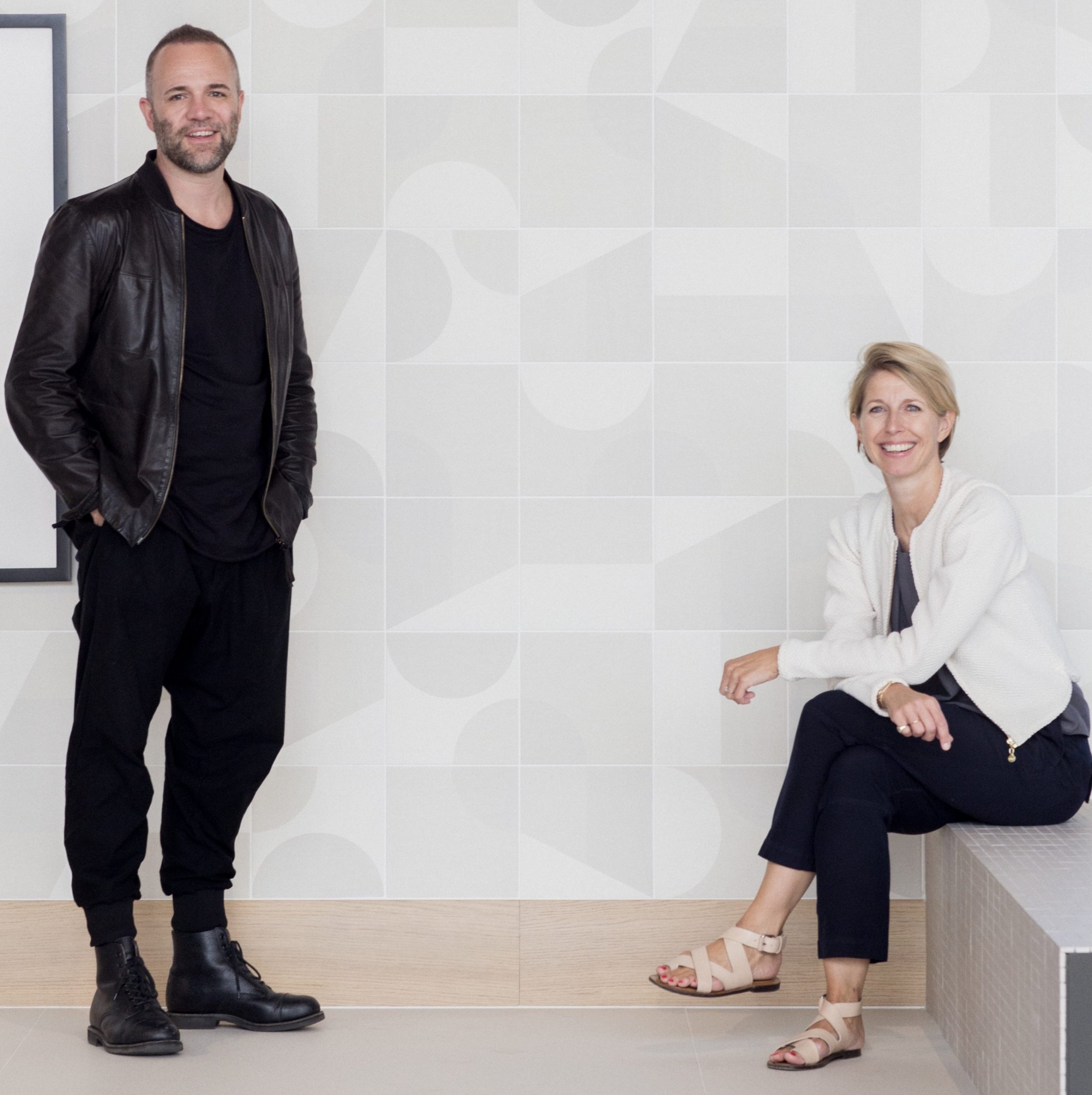Global Design Talent Sought for Helsinki's New Museum of Architecture and Design: International Open Competition Launched
The Foundation for the Finnish Museum of Architecture and Design, Real Estate Company ADM, the City of Helsinki and SAFA the Finnish Association of Architects have launched an international, open design competition to find a design team for a new 10,050 sq m (GFA) museum building in Helsinki’s South Harbour.
International open competition launched to find a design team for the new museum of architecture and design in Helsinki, Finland
Photographer: Sami Saastamoinen / Foundation for the Finnish Museum of Architecture and Design
The Foundation for the Finnish Museum of Architecture and Design, Real Estate Company ADM, the City of Helsinki and SAFA the Finnish Association of Architects have launched an international, open design competition to find a design team for a new 10,050 sq m (GFA) museum building in Helsinki’s South Harbour.
The new museum of architecture and design in Helsinki, Finland, is planned to open in 2030 and will combine the Museum of Finnish Architecture and Design Museum Helsinki. These institutions were successfully merged in January 2024, and the new museum will retain and grow the staff of both its predecessors.
The central mission of the new museum will be “democratising the tools of design”, drawing on the history and present of Finnish and Nordic architecture and design to guide a programme of public activities that will look at how design thinking and skills are relevant to the challenges we face as individuals and societies in a rapidly changing world.
The newly-formed collection, focussed on Finnish architecture and design, will contain over 900,000 artefacts, including objects, correspondence, models and photographs documenting the work of internationally-famed practitioners such as Aino and Alvar Aalto, Eero Aarnio, Maija Isola, Eliel and Eero Saarinen, Paavo Tynell, and design brands such as Marimekko, Nokia and Fiskars.
The new museum is made possible through significant public and private funding. In February 2024, The Foundation for the Finnish Museum of Architecture and Design announced that it had secured €120 million in public funding, half from the City of Helsinki and half from the State of Finland, to bring this new building project forward. This is supplemented by €30 million to be raised from private donors, with a €20 million donation secured from the Jane and Aatos Erkko Foundation.
Photographer: Sami Saastamoinen / Foundation for the Finnish Museum of Architecture and Design
The competition is organized by the Real Estate Company ADM, owned by the City of Helsinki and the State of Finland and the Foundation for the Finnish Museum of Architecture and Design, in collaboration with the City of Helsinki and the Finnish Association of Architects (SAFA). Strategic partners for the museum project are DVDL Cultural Planners (New York) and Haahtela Group.
An online seminar, open to all interested participants, will be held on 24 April 2024. Details and instruction on joining the seminar can be found at the competition website, alongside the competition brief: https://www.admuseo.fi/competition
The Competition Jury:
Photographer: Foundation for the Finnish Museum of Architecture and Design
Chair: Mikko Aho, Architect SAFA, Vice Chair of Real Estate Company ADM
Vice Chair: Juha Lemström, Architect SAFA, Chair of Real Estate Company ADM
Gus Casely-Hayford, Director, V&A East
Beatrice Galilee, Architect, Executive Director, The World Around
Kaarina Gould, CEO, Foundation for the Finnish Museum of Architecture and Design
Salla Hoppu, Architect SAFA, Leading Architect, City of Helsinki
Beate Hølmebakk, Architect, Professor, Partner, Manthey Kula Architects
Riitta Kaivosoja, Director General, Ministry of Education and Culture, Department for Art and Cultural Policy
Matti Kuittinen, Architect, Associate Professor, Aalto University
Miklu Silvanto, Designer, AD Museum Ltd. (Member of the Board)
Anni Sinnemäki, Deputy Mayor for Urban Environment, City of Helsinki
Sari Nieminen, Architect SAFA, Architectural Office Sari Nieminen
Hannu Tikka, Architect SAFA, Professor, APRT Architects
Eligibility Requirements in Stage 1 of the competition
Stage 1 of the competition (April 15–August 29, 2024) is open to individuals and design teams with the following eligibility criteria:
The lead designer must present the following personal qualifications:
A completed university level master’s degree in architecture
Confirm that they have the right to practise as an architect in their country of residence.
The person must be a resident of European Union countries or a resident of countries that are parties to The WTO Agreement on Government Procurement (GPA 2012). You may check: https://www.wto.org/english/tratop_e/gproc_e/memobs_e.htm
The design teams may also welcome members from countries that do not fall under the scope of the European Union and its procurement legislation.
Kaarina Gould, CEO of The Foundation for the Finnish Museum of Architecture and Design, said:
“Finland has a rich and fascinating history of design that is deeply embedded in both our national identity and our living culture. That culture is expressed fully in Helsinki – a former World Design Capital, where public policy and private enterprise have worked together to build a knowledge economy based upon high-value, innovative activities that have design thinking at their heart. “
“We want to democratise the tools of design. The new museum of architecture and design will engage the public in activities and experiences that broaden the understanding of design as a tool that empowers people to participate actively as citizen designers. Successful designs for the museum will need to embrace and advance the model of the museum as a site for active engagement with ideas and practice, as much as for the display and interpretation of artefacts.”
Mikko Aho, Chair of the competition Jury and Vice Chair of Real Estate Company ADM, said:
“Helsinki has an international reputation for architecture and design that reflects the strong belief in good design as a means for living well that is present in all Nordic societies. We’re delighted to launch this international open competition to find an architect for the new museum of architecture and design. The open competition is a strong component of the tradition of architecture in Finland that opens the commission up to exciting concepts from designers at any stage in their career – from undiscovered talent to established names.
“This new museum will enhance Helsinki’s global profile as a capital of design by placing the subject at the heart of the urban renewal of the South Harbour, one of the city’s most significant waterfront sites. We’re delighted to bring this project forward to create social benefits, provide new employment, attract international visitors and generate commerce in Helsinki.”
#Internationaldesigncompetition #new #museum #designcompetition #Helsinki #Finland #FinnishMuseum #Architecture #Design #MuseumHelsinki #ADM #CityofHelsinki #Architect #SAFA #mercimagazine
City of Helsinki Announces Funding for New Museum of Architecture and Design - – Design Competition to Commence in April
An international, two-stage design competition will be held to select the design of the new museum building. The competition aims to deliver a design that is architecturally unique, providing the framework for world-class museum operations and creating new, vibrant urban spaces in Helsinki’s rejuvenating South Harbour area.
The competition programme will be published on April 11, 2024, and the results will be announced in August 2025. The open, anonymous competition will be conducted in English. More details can be found on the competition website at admuseo.fi.
The competition is organised by Real Estate Company ADM – an entity owned by the City of Helsinki and the Finnish state – together with the Foundation for the Finnish Museum of Architecture and Design, and in cooperation with the Finnish Association of Architects SAFA and the City of Helsinki.
Helsinki City Council has voted to provide a capital donation of 60 million euros to the foundation responsible for establishing the new national museum of architecture and design. The Finnish state will match this funding, with an additional 30 million euros to be raised from private donations. With these commitments in place, an international design competition for the new museum building will be launched in April. The new museum will sit at the heart of a new pedestrian-friendly district in Helsinki's South Harbour.
On 14 February, Helsinki City Council approved a total capital donation of 60 million euros that will enable the Foundation for the Finnish Museum of Architecture and Design to realise its ambition of delivering a new museum of architecture and design. The Finnish state confirmed its commitment to offering equivalent funding in December 2023. The foundation will additionally raise at least 30 million euros from private sources, creating a robust private funding base for the museum project.
These decisions are significant milestones in the path towards realising the long-planned new national museum of architecture and design. The museum project will now continue to advance in line with the implementation plan published by the Foundation for the Finnish Museum of Architecture and Design in January 2024. According to the target schedule, the museum could open its doors in Helsinki's South Harbour in 2030. The museum will be operated by an entity that has been established through a merger of the Museum of Finnish Architecture and the Design Museum Helsinki.
“This new museum is set to both enhance Helsinki's global profile and provide a new, meaningful incentive to visit Helsinki. The museum will provide a cultural heart for the rapidly developing South Harbour area and a new, inviting urban space in Helsinki’s prime maritime location. It also represents a sustainable investment that will create jobs, generate commerce, and attract tourists to Helsinki. The museum represents an investment in the future, it is exciting to see the plans now coming to fruition,” commented the Mayor of Helsinki, Juhana Vartiainen.
Design competition to launch on April 11, 2024
An international, two-stage design competition will be held to select the design of the new museum building. The competition aims to deliver a design that is architecturally unique, providing the framework for world-class museum operations and creating new, vibrant urban spaces in Helsinki’s rejuvenating South Harbour area.
The competition programme will be published on April 11, 2024, and the results will be announced in August 2025. The open, anonymous competition will be conducted in English. More details can be found on the competition website at admuseo.fi.
The competition is organised by Real Estate Company ADM – an entity owned by the City of Helsinki and the Finnish state – together with the Foundation for the Finnish Museum of Architecture and Design, and in cooperation with the Finnish Association of Architects SAFA and the City of Helsinki.
For more information, visit the website of the New Museum of Architecture and Design.
Helsinki uses design to create good everyday life - Children’s Design Week
Design is an essential cornerstone of Helsinki, the capital of the world’s happiest nation and a UNESCO City of Design, where design plays a fundamental role in maintaining the quality of life and building a sustainable future. This September, design can be seen and felt in the city even more than usually, as the 18th Helsinki Design Week and Habitare, Finland’s largest furniture, design and decoration event, take place. Design thinking starts already in school. The City of Helsinki together with Helsinki Design Week will be presenting their second Helsinki Design Award to Arabia Comprehensive School where design and architecture educations starts from the first grade.
Children’s Design Week, photo: Aleksi Poutanen, Helsinki Design Week
Design is an essential cornerstone of Helsinki, the capital of the world’s happiest nation and a UNESCO City of Design, where design plays a fundamental role in maintaining the quality of life and building a sustainable future. This September, design can be seen and felt in the city even more than usually, as the 18th Helsinki Design Week and Habitare, Finland’s largest furniture, design and decoration event, take place. Design thinking starts already in school. The City of Helsinki together with Helsinki Design Week will be presenting their second Helsinki Design Award to Arabia Comprehensive School where design and architecture educations starts from the first grade.
Helsinki Design Week – Good everyday life
The festival theme for 2023, Once upon a time, marks the start of a three-year festival period that will culminate in the 20th anniversary of Helsinki Design Week in 2025. The world situation has been uncertain for a long time and requires more planning and stability than before. The main exhibition explores the recent changes in our lives caused by distant working, which challenges our relationship with places – when private becomes public and home turns into an office.
Good everyday life is the theme of the main exhibition and the foundation of everything for the curator Ulla Koskinen, the founder and editor-in-chief of Asun magazine. “Good everyday life means balance, fluency, security, rest and charging my batteries; work and other aspects of life in balance. The importance of home, the workplace and our daily routes is highlighted – they need to be functional, beautiful and pleasant,” she states.
Helsinki Design Week takes place 8-17 September 2023 with over 130 events in different parts of Helsinki, from open studios to talks and exhibitions.
Photo: Riku Pihlanto, City of Helsinki
Helsinki Design Award for architecture and design education
The Helsinki Design Award is recognition of the deeds and creators that make this city a better place to live. This year, the award focuses on architecture and design education, a field in which internationally acclaimed, multidisciplinary development work has been carried out in Finland for a long time.
At Arabia Comprehensive School in Helsinki, design thinking has been the backbone of the school’s activities and curriculum since 2016. Design thinking is one of the future skills that help the children to face challenges when growing up. School’s own Armu's A is a design process model that provides an easy five step view of the design process.
“Architecture and design education offer children and young people the keys to exploring and appreciating their surroundings as a learning environment, whether it’s a school, a neighbourhood or a city,” says Hanna Harris, Chief Design Officer at the City of Helsinki. “As a city, we can make see to it that, as part of the curriculum, architecture and design education support the wellbeing of children and young people, as well as their opportunities to be active and influence their own living environment.”
Photo: Habitare
Habitare – Together is more
Habitare’s 2023 theme, Together, explores the contrasts of our time. The new themed exhibition highlights this theme from different perspectives, including those related to people’s ways of being together and to objects. Designed by Studio Plenty, the exhibition brings monumentality and the small details of everyday life into the dialogue. The exhibition includes a section that changes daily in which objects that brighten up everyday life but often go unnoticed are highlighted and change hands.
Habitare features international industry influencers, such as Anders Byriel, CEO of the Danish textile company Kvardat, who’s the International Friend of the fair. Visitors can look forward to five days of inspiration, beauty, tips, discussions, current phenomena – and encounters that will create new stories. Finland’s largest furniture, design and interior decoration fair takes place at the Helsinki Expo and Convention Centre 13-17 September 2023 with over 400 exhibitors.
The New Headquarters of the European Space Agency (ESA) - A Celestial Design Odyssey
The world-renowned architectural firm Atelier du Pont collaborated with the European Space Agency and the visionary developer Sogelym Dixence to create a space that pays homage to the limitless horizons of space exploration.
A testament to architectural innovation and cosmic aspirations, the European Space Agency (ESA) has unveiled its magnificent new headquarters in the heart of Paris. Now ESA's dedicated cadre and esteemed representatives from its 22 Member States will be able to benefit from this monumental undertaking, a synthesis of visionary design and meticulous planning. A dynamic nexus of European space collaboration, this architectural masterpiece seamlessly integrates with the urban fabric of the city, forging a harmonious link between the terrestrial and the celestial realms.
The world-renowned architectural firm Atelier du Pont collaborated with the European Space Agency and the visionary developer Sogelym Dixence to create a space that pays homage to the limitless horizons of space exploration. In this architectural marvel, imagination melds with vast reservoirs of knowledge, reflecting not only the enigmatic tapestry of matter but also the captivating landscapes of the Milky Way.
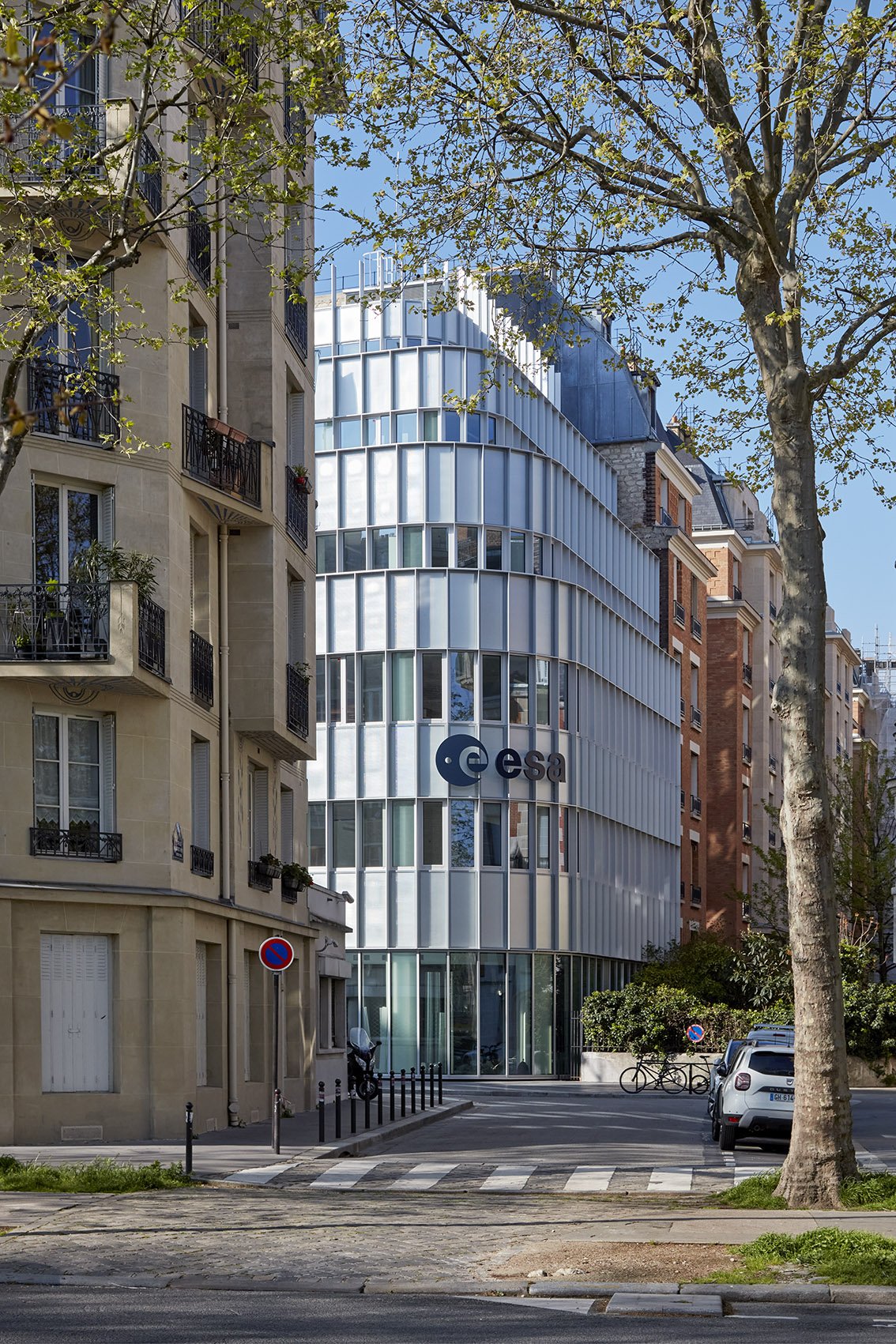
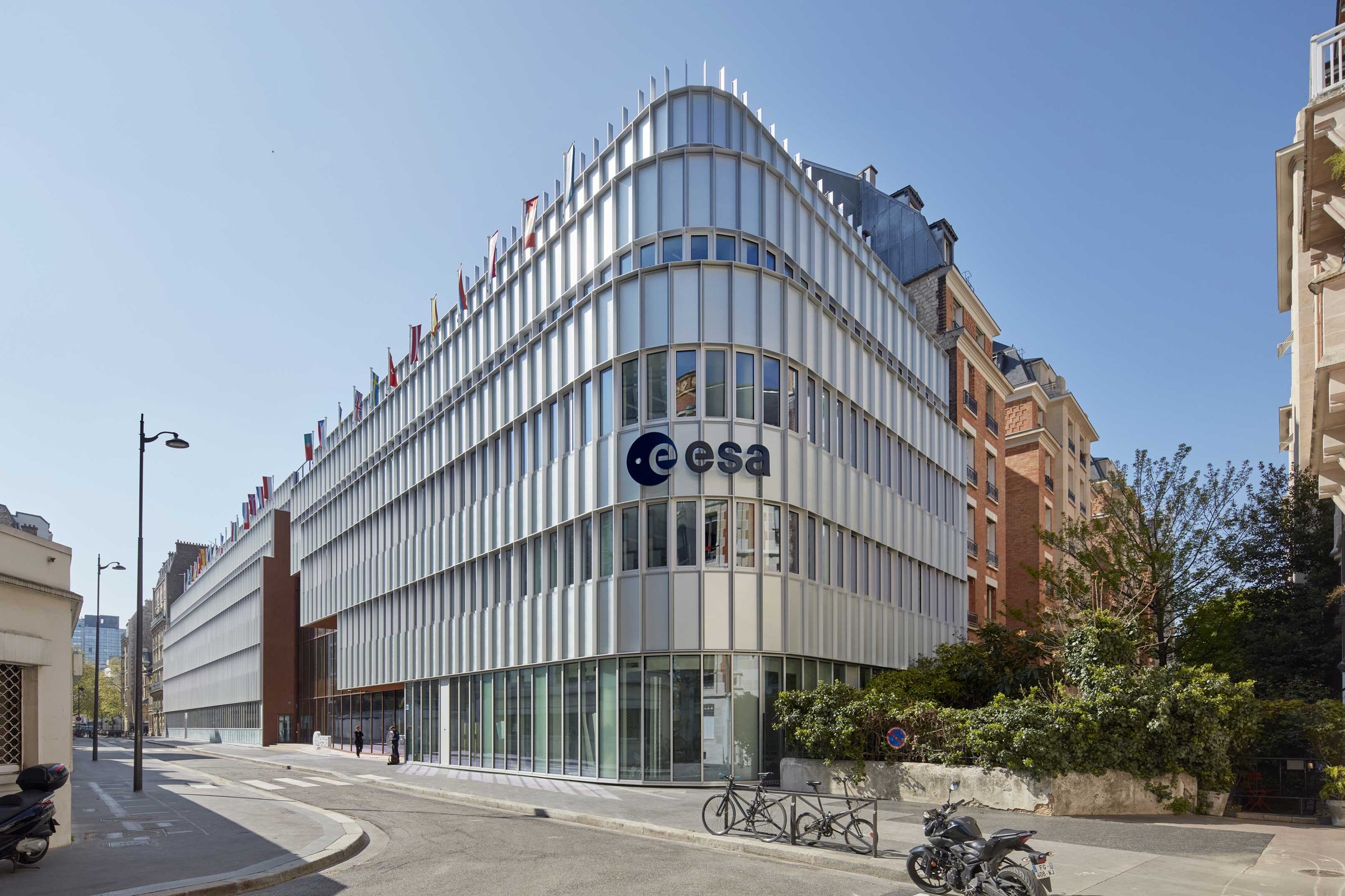
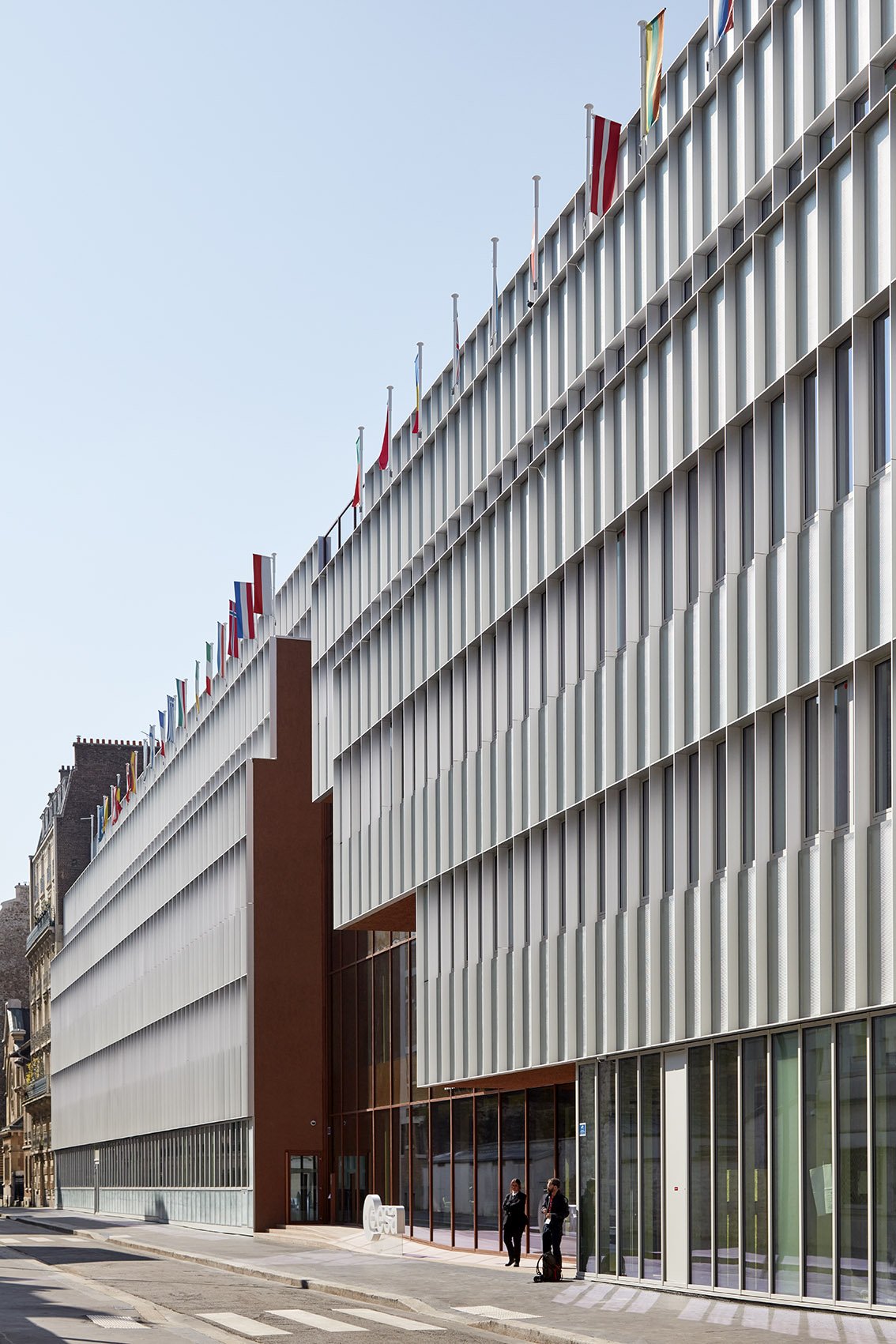
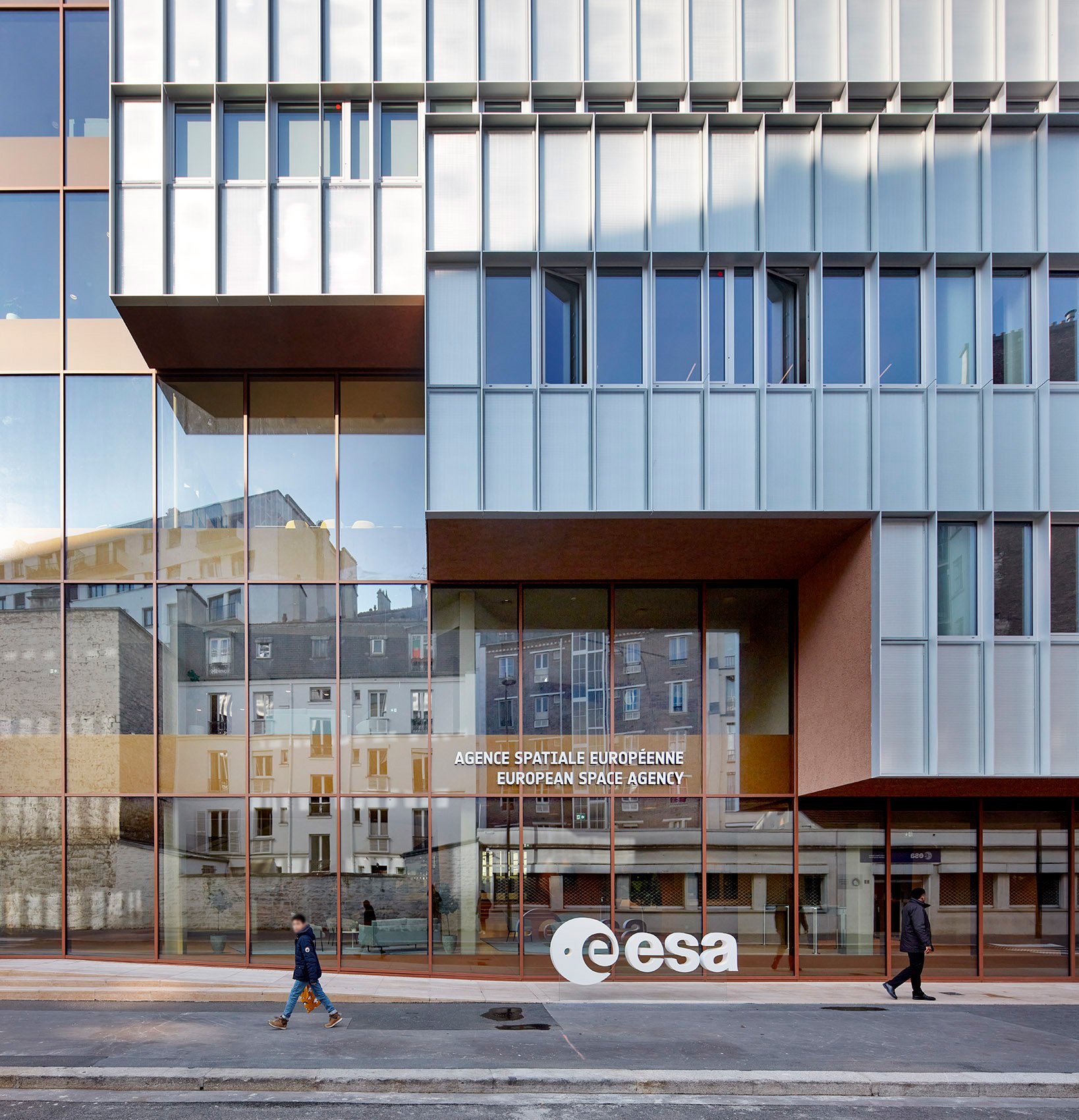
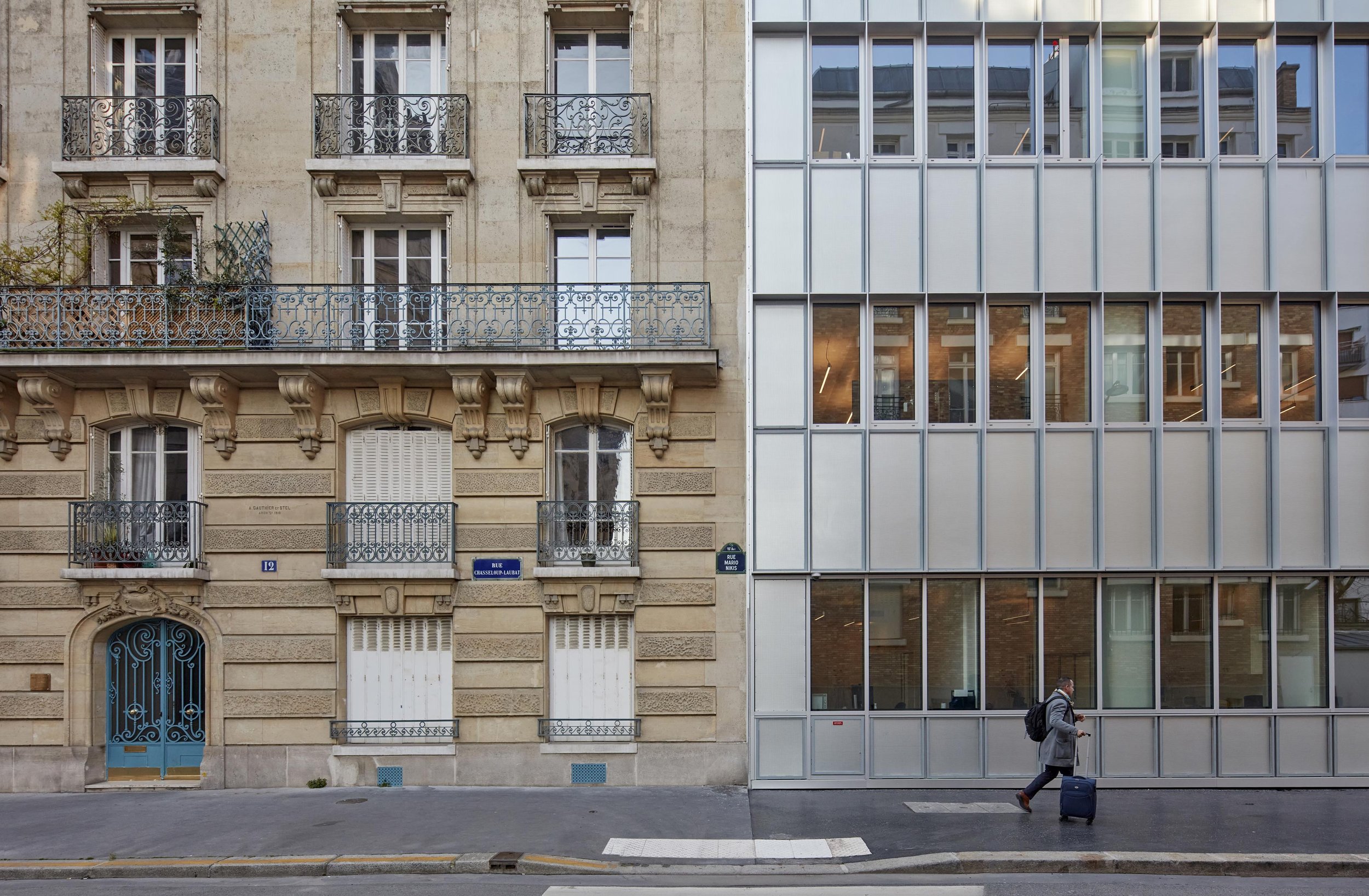
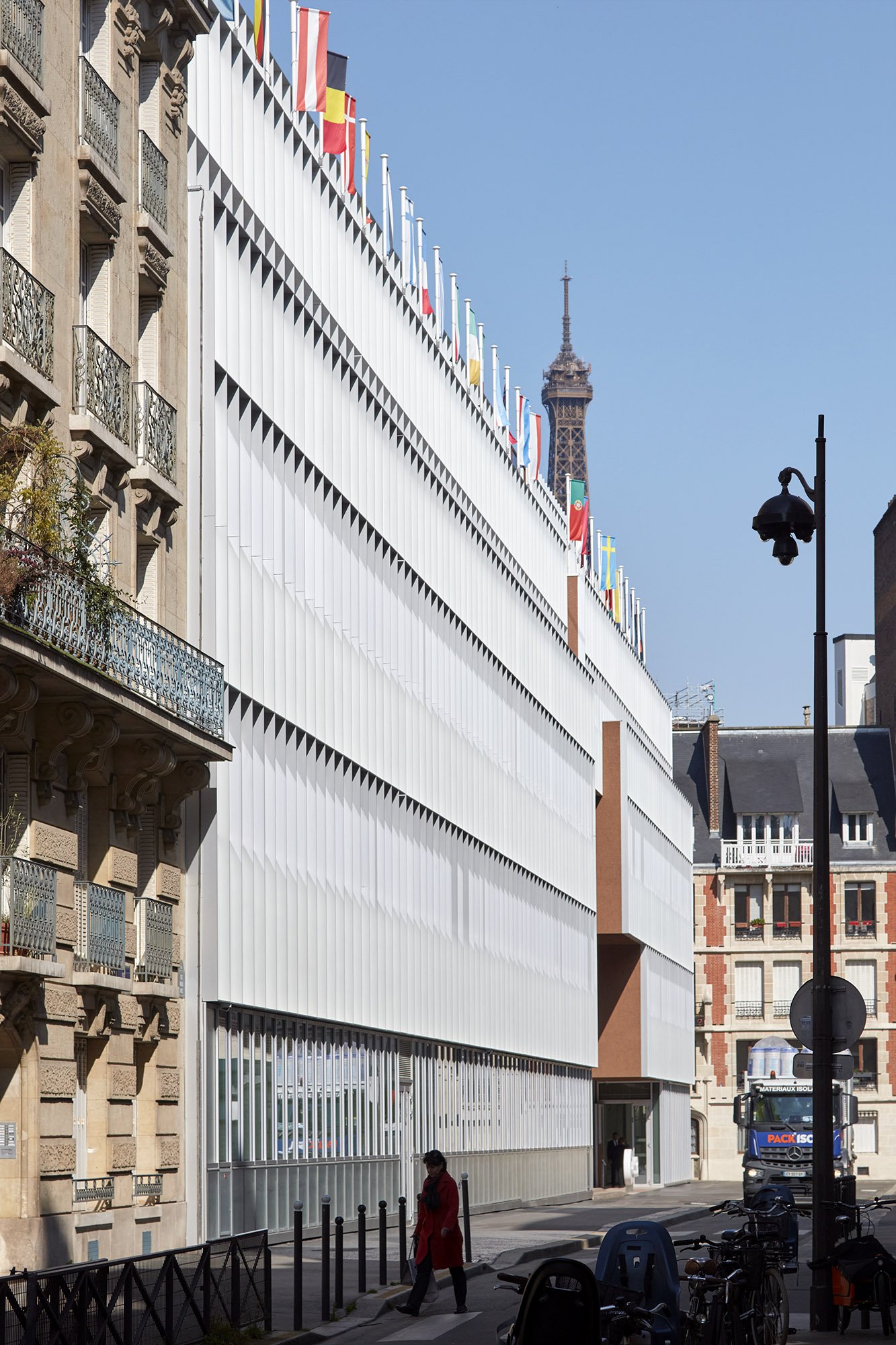
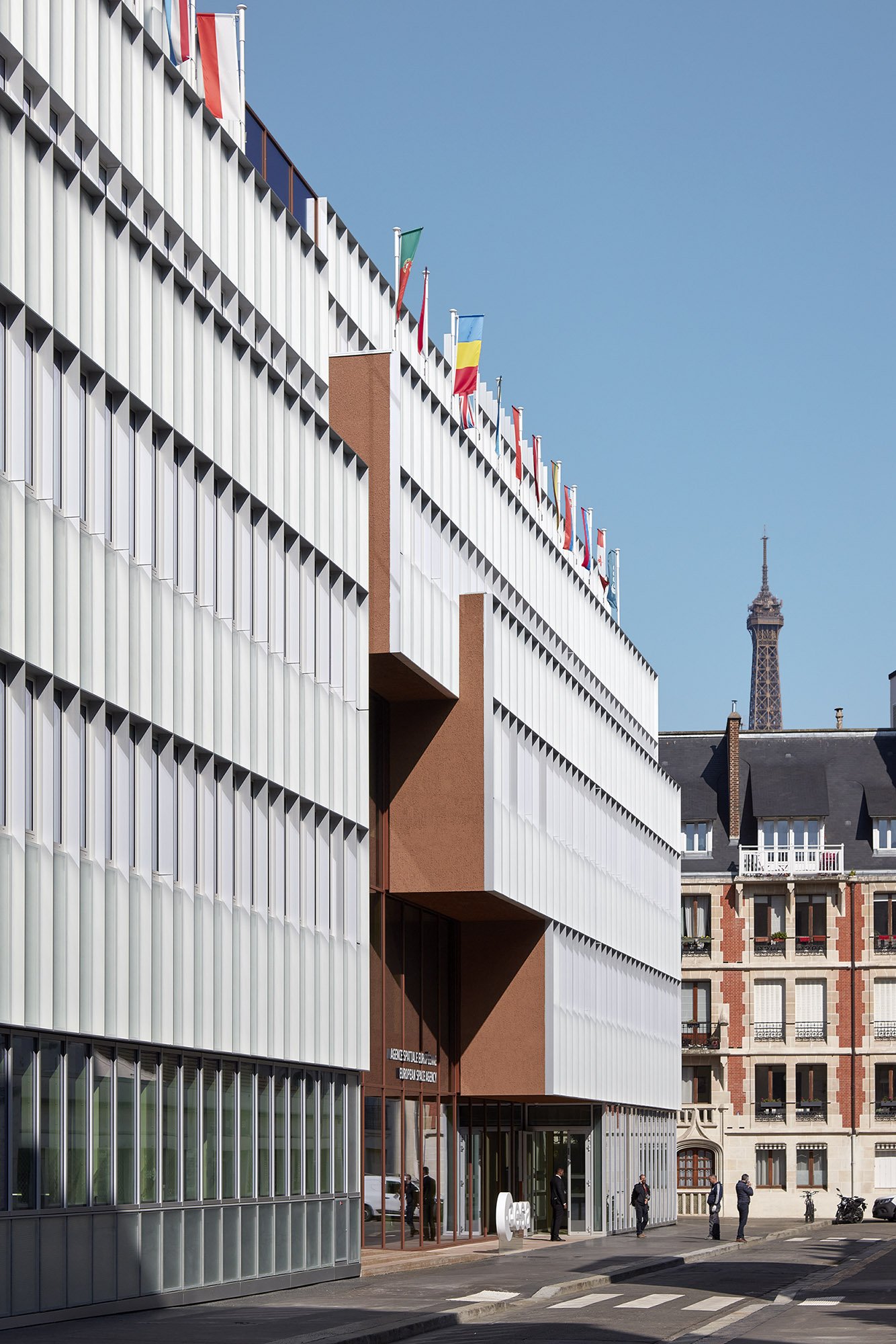
In redefining workplace paradigms for its occupants and partners, the newly inaugurated ESA headquarters is a symbol of innovation and collaboration. ESA's continually evolving and unwavering commitment to pushing the frontiers of exploration to new heights underscores not only its dedication to scientific excellence, but also its integration of advanced technologies born from the space sector.
Refurbishment in Paris' Heart
Historically, ESA has been located at the former Thomson factory on rue Mario Nikis since 1976. In 2017, ESA's 22 member states united unanimously behind a visionary proposal to breathe new life into this storied edifice, motivated by two pivotal objectives: the urgent need for an extension capable of hosting up to 30 international delegations and the meticulous elimination of asbestos from the aging fabric of the structure. The project, dubbed 'Thomson', was approved and is currently under construction. The new wing is projected to be completed in 2021 and will serve as the new center of the ESA's operations.
After several years of planning and preparation, ESA's dedicated staff temporarily relocated to nearby premises in 2018 to facilitate extensive renovations. As a result of this monumental refurbishment project, not only were spatial dynamics redesigned, but environmental performance was also enhanced, aligned with contemporary sustainability standards. A harmonious blend of history and innovation has transformed the once-familiar confines of the Thomson factory. The refurbished building now stands as a symbol of progress and innovation, embodying the spirit of collaboration that ESA champions. The project was a success, and the building is now ready to be enjoyed by ESA staff and visitors alike.
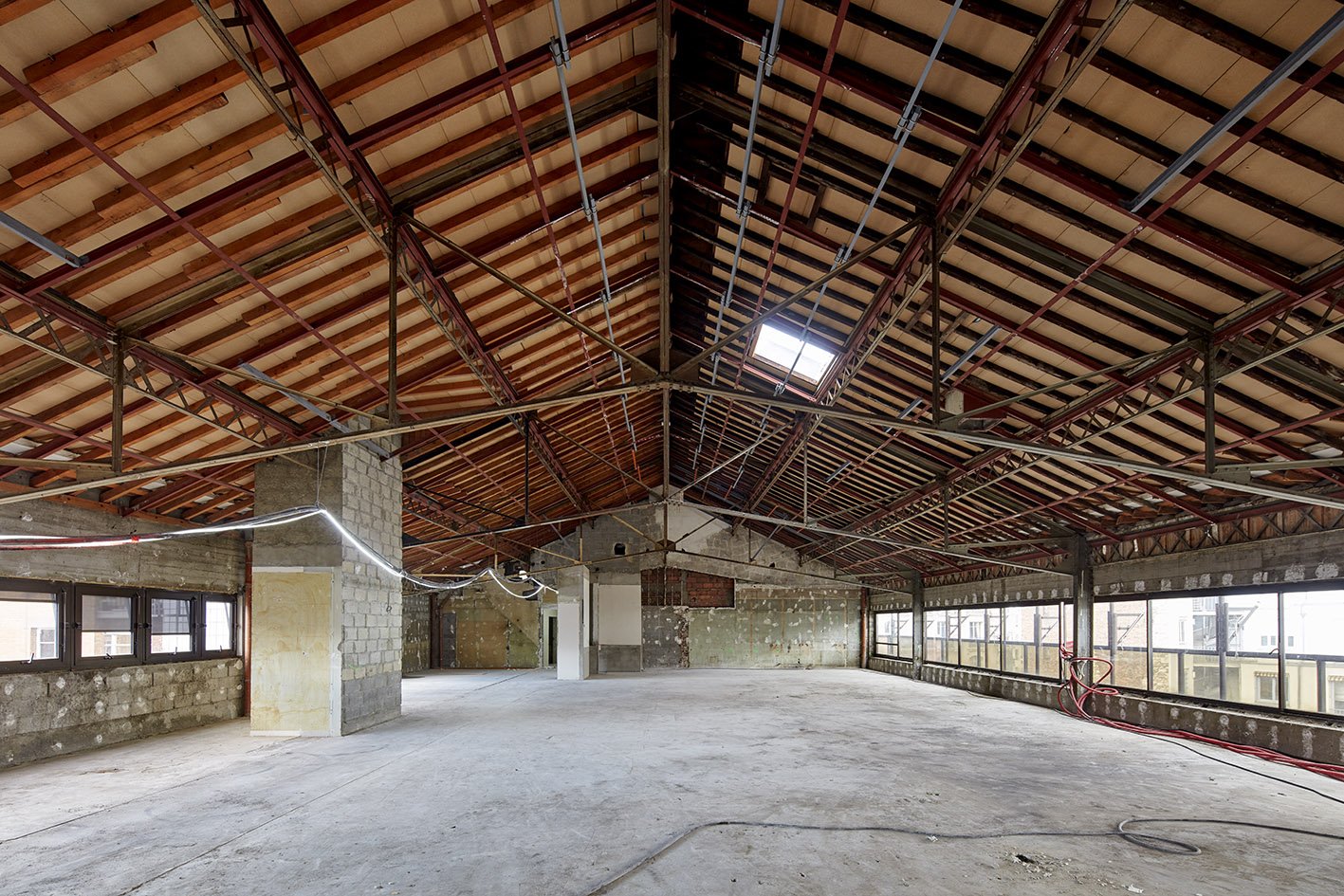
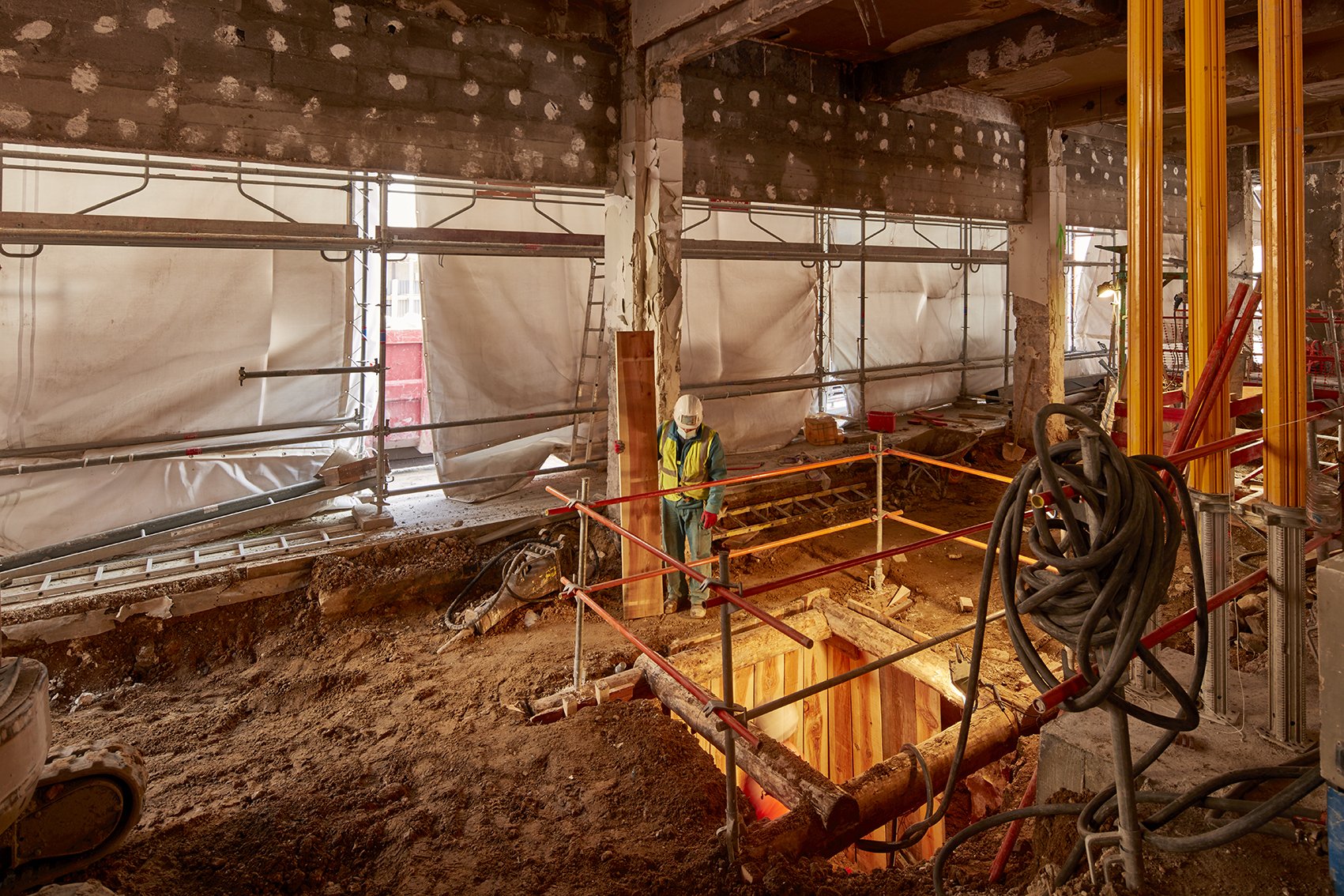
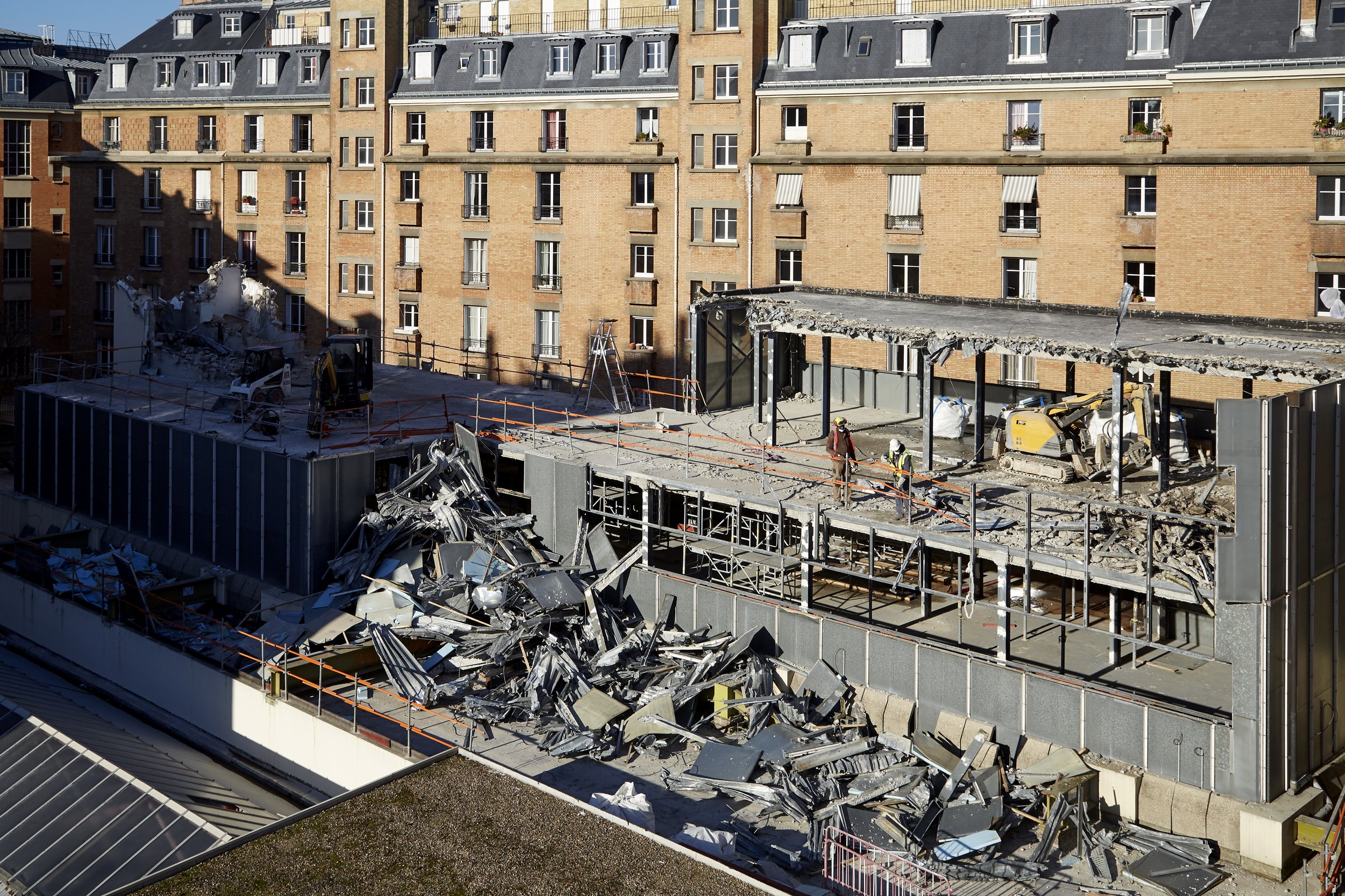
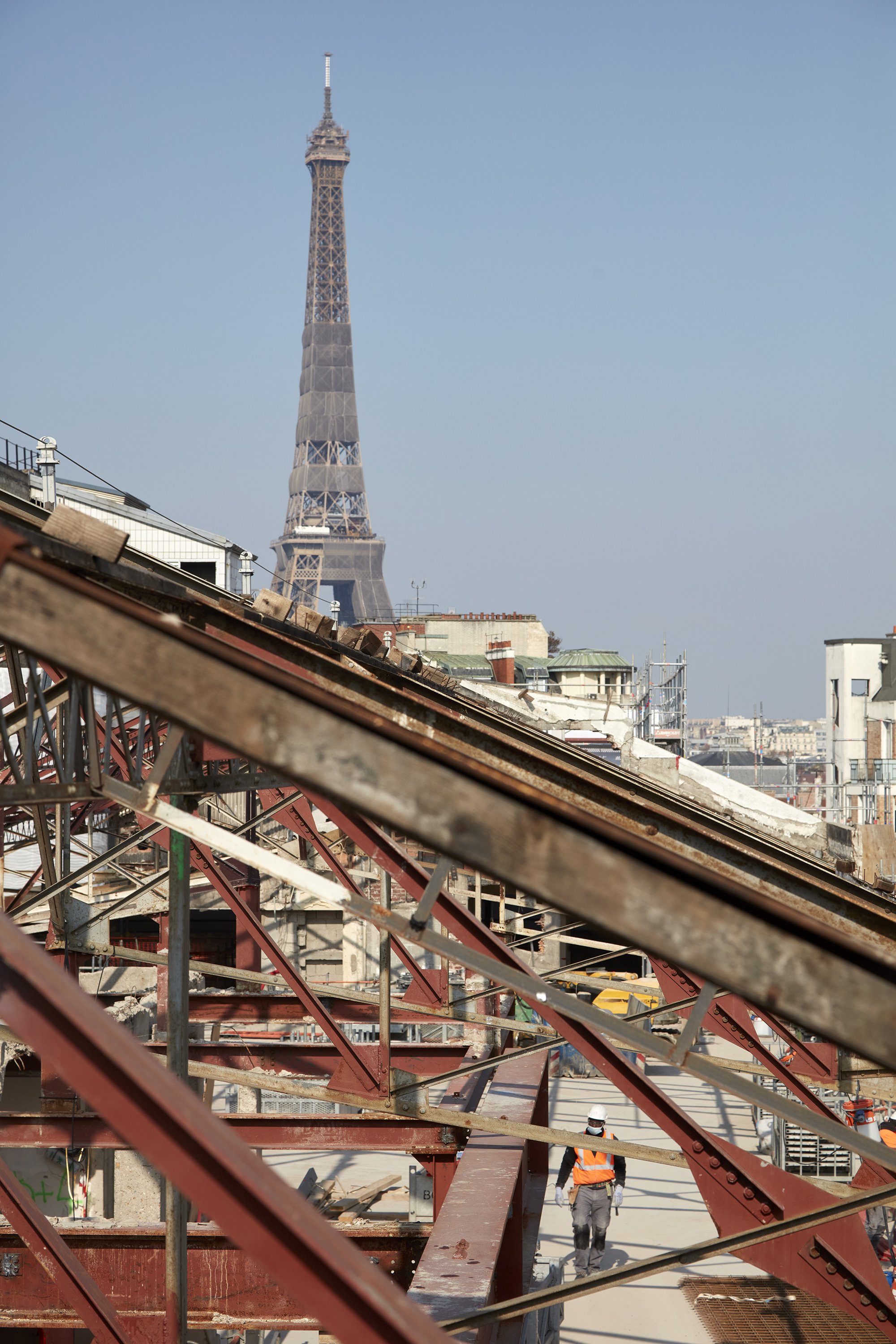
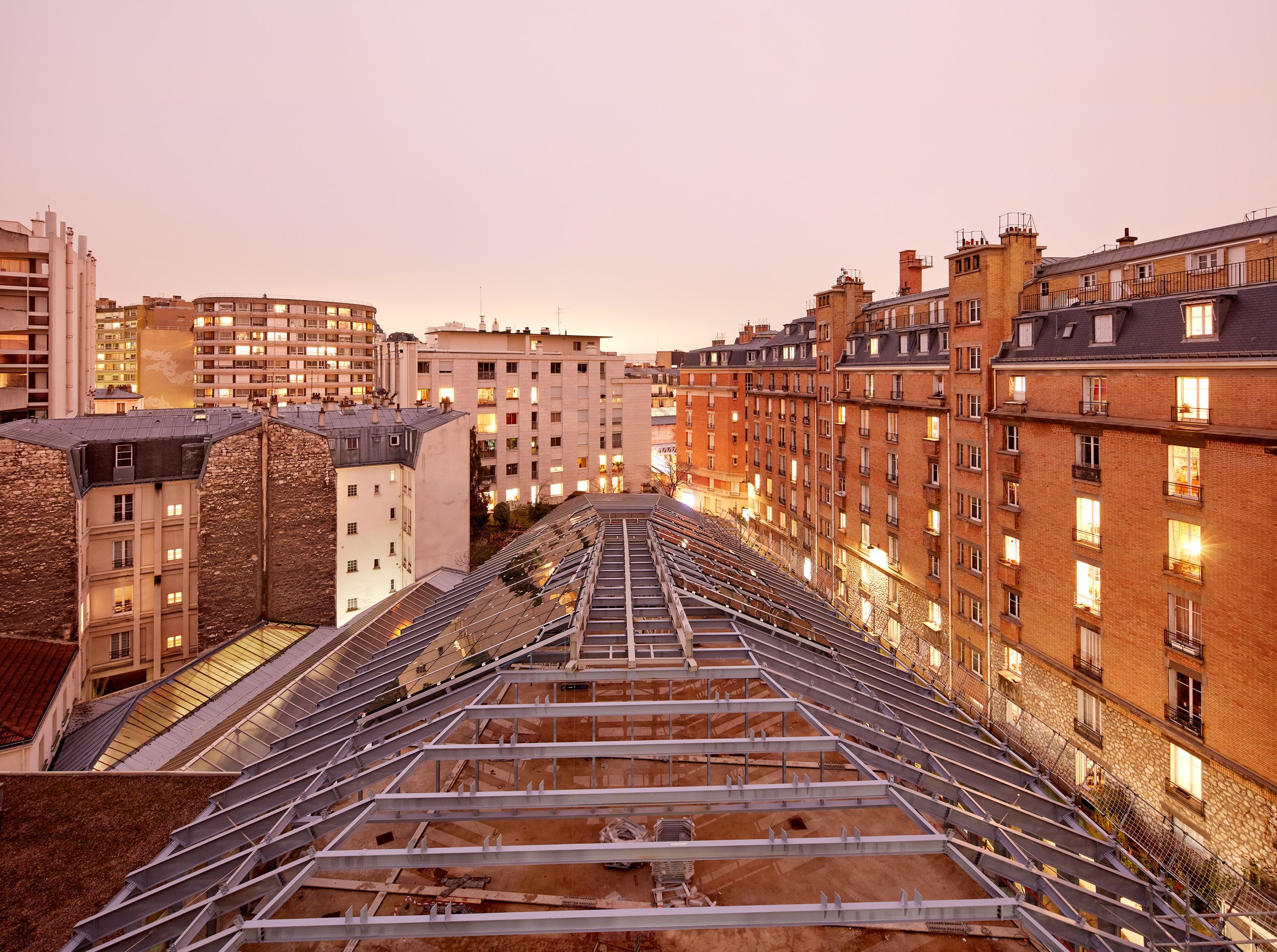
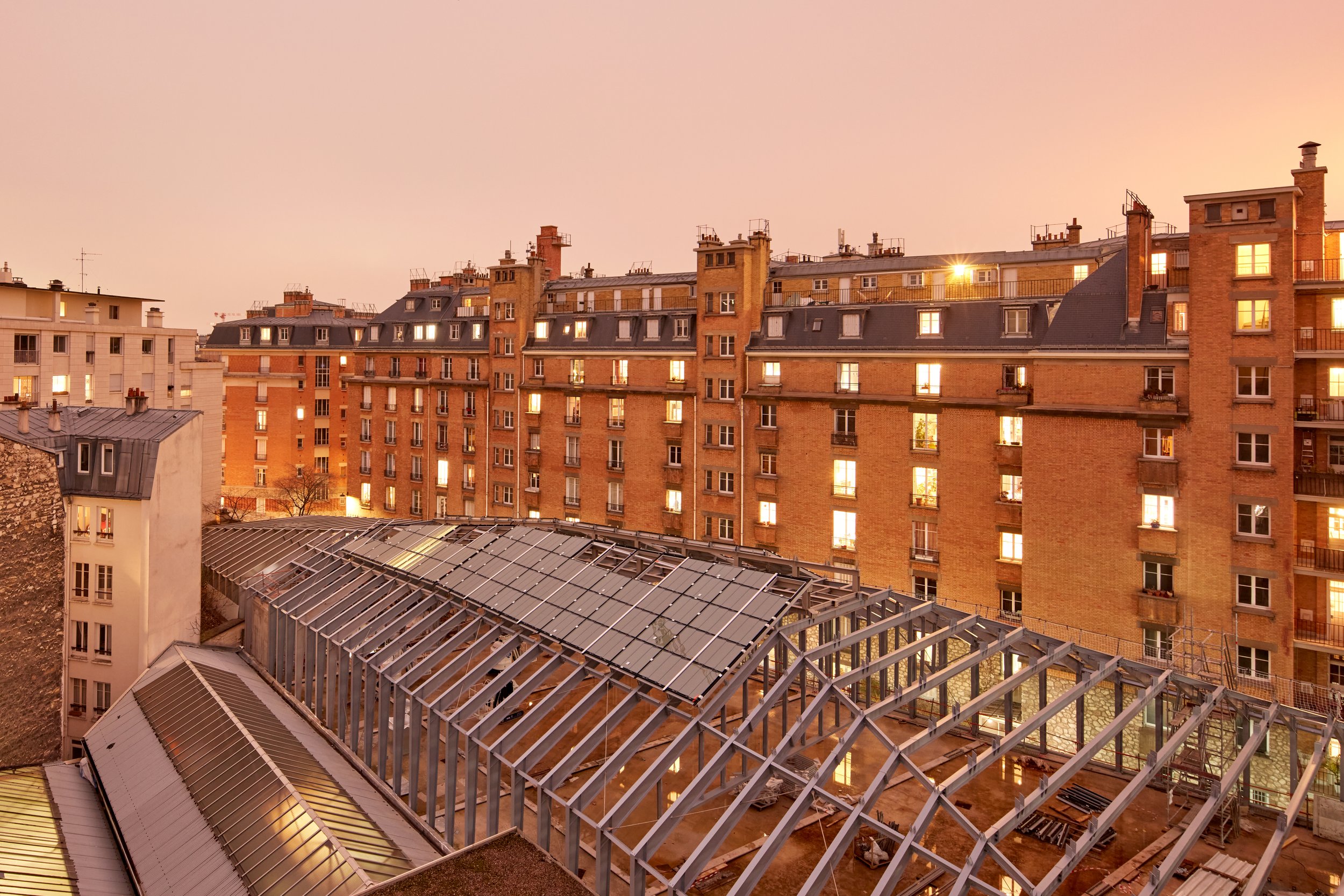
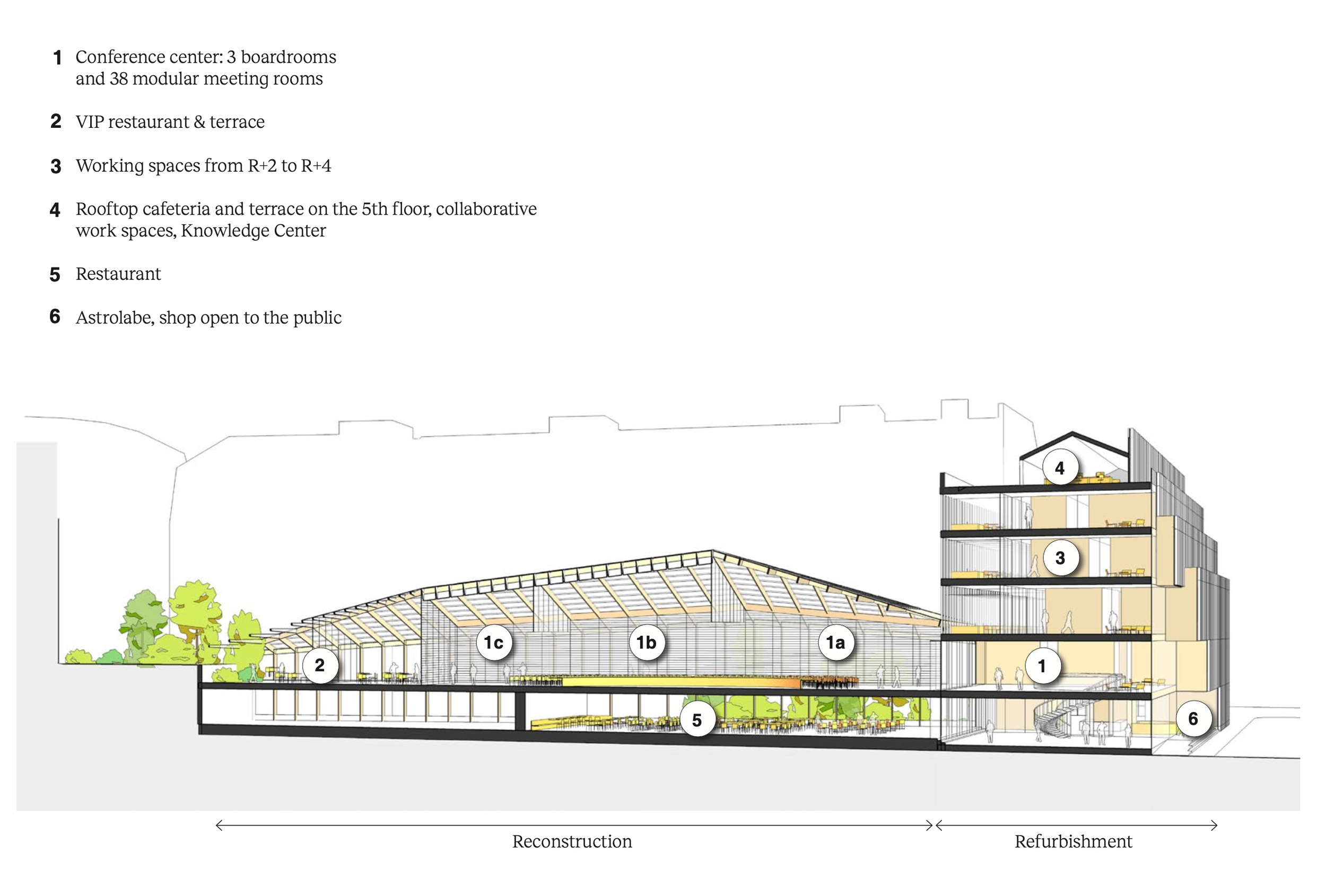
An exemplar of excellence in design: The New Conference Center
An awe-inspiring conference center rises majestically above pre-existing parking levels to take center stage at the heart of this magnificent complex. In all its splendor, architectural innovation is on display here. An impressive 15cm-wide welded portal frame, meticulously set on a 1.30m grid, greets visitors as they approach the grand entrance. An architectural masterpiece in its own right, the glazed roof boasts ethereal glass panels and aluminum slats, an exquisite blend that welcomes natural light while jealously guarding its sanctity. The result is a modern, yet timeless monument to engineering and design. Its structure is a true testament to the skill of the workers who meticulously constructed this masterpiece. It stands as a reminder of the boundless possibilities of modern architectural innovation.
Embracing the vibrant tapestry of Paris, the new headquarters of the European Space Agency beckons all to join in the celestial adventure of cosmic exploration. This architectural triumph seamlessly fuses imagination, innovation, and science on a transcendent scale, reaffirming Paris as the global epicenter of architectural and scientific excellence. A celestial design odyssey, ESA's new headquarters connects the terrestrial with the cosmic, inviting us all to reach new heights. Its marvels extend beyond the walls, beckoning us to explore the cosmos with the same curiosity and enthusiasm as our ESA team of experts. We invite you to join us on this voyage of discovery, and take part in the greatest adventure of our lifetime.
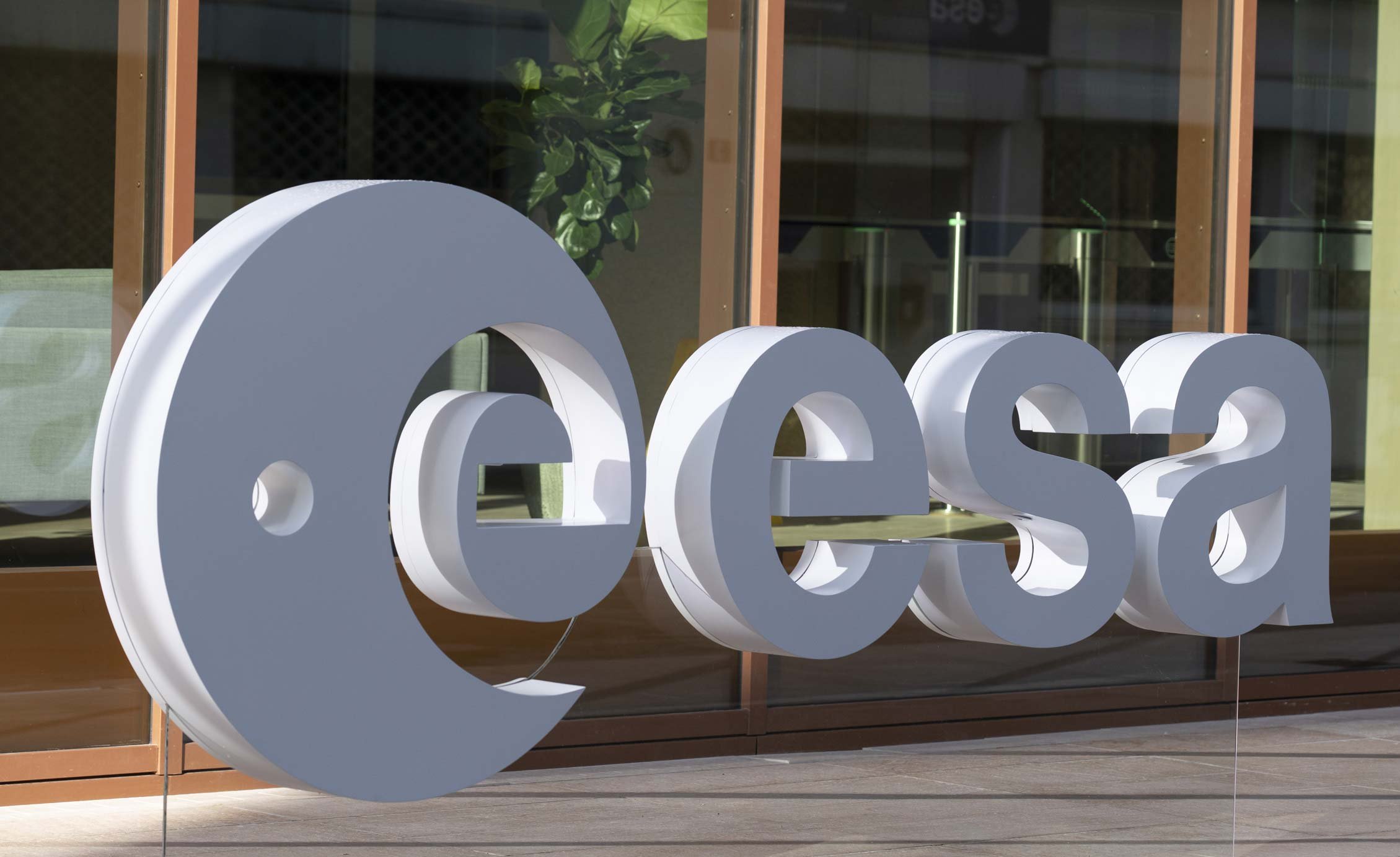
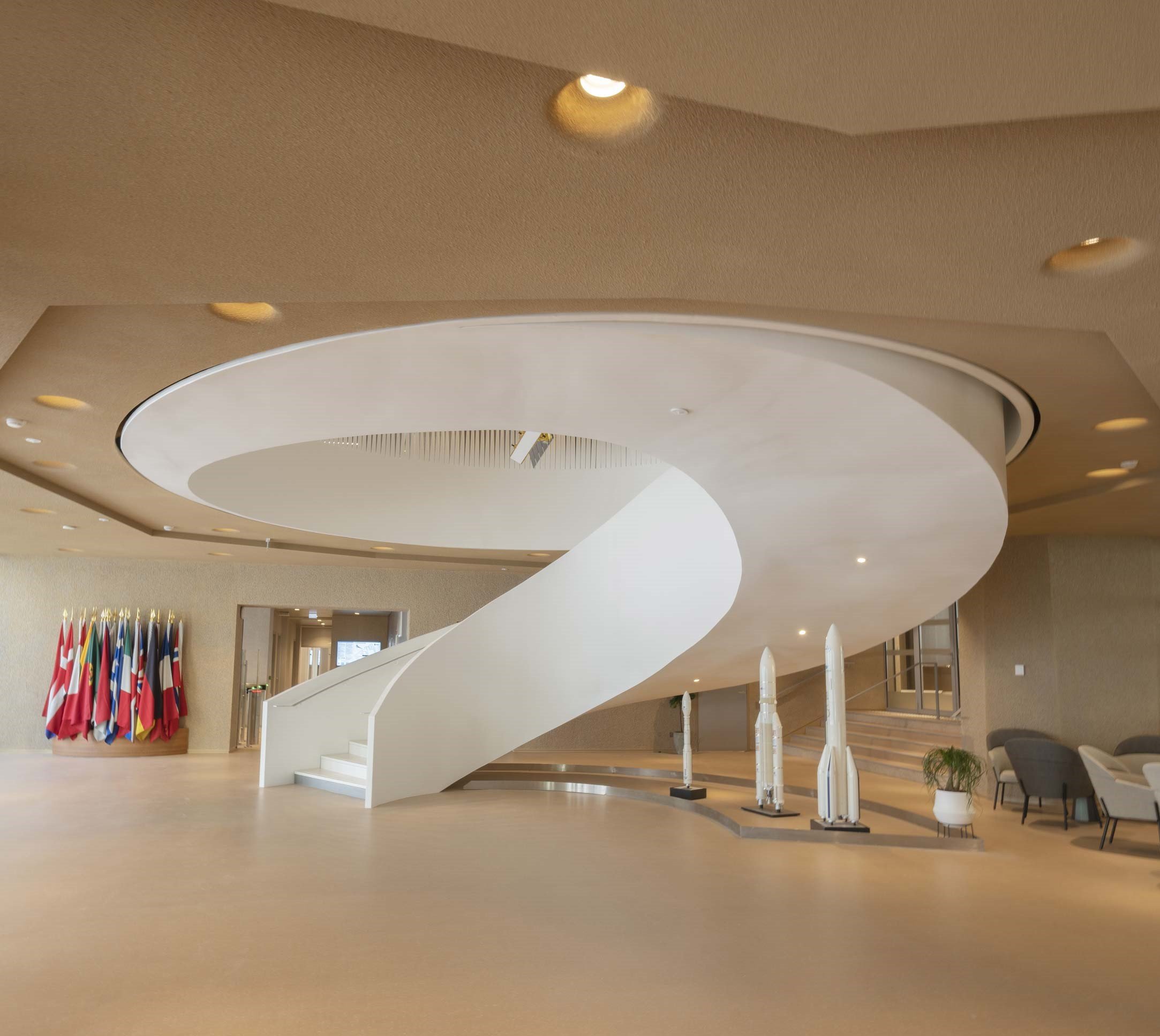
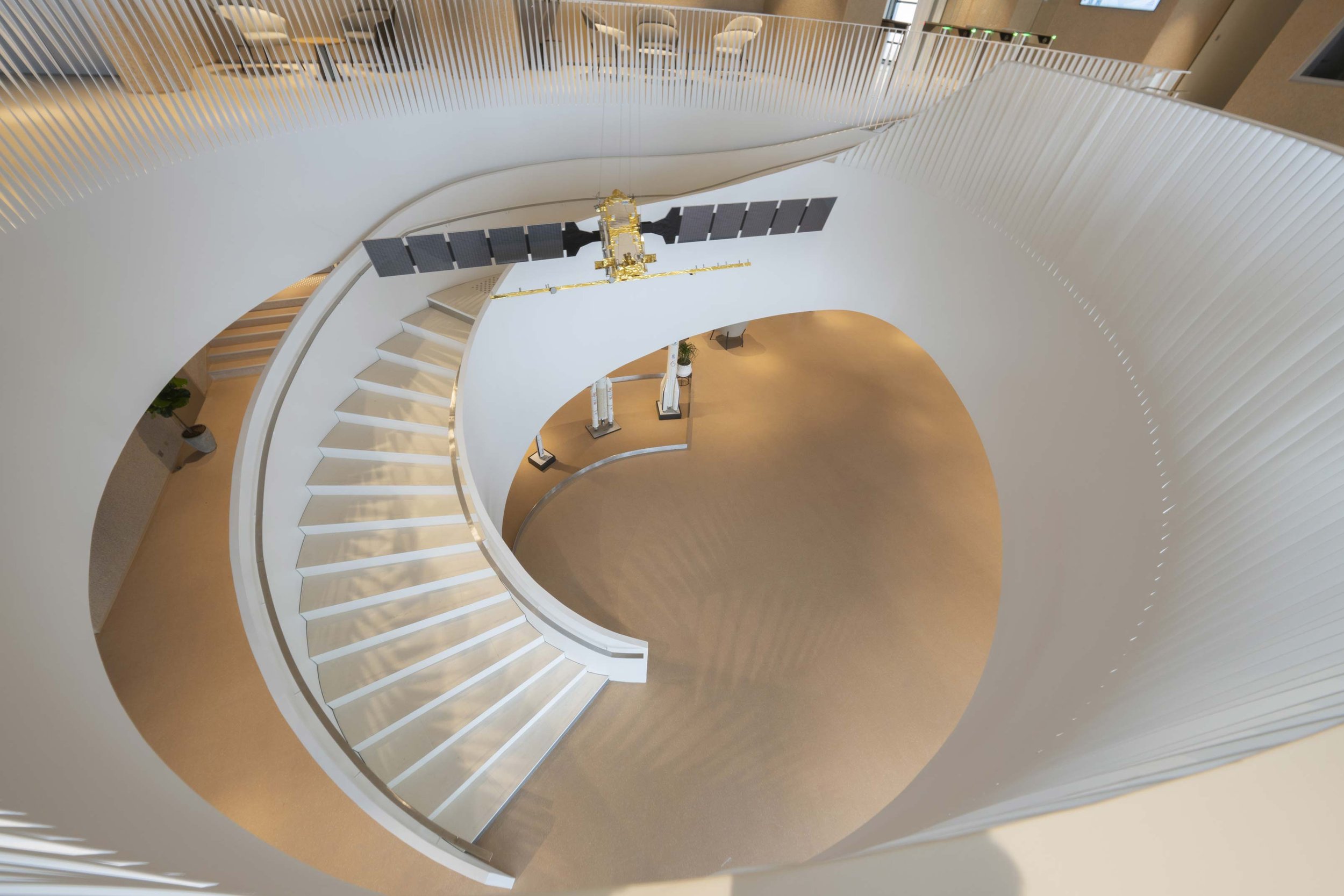
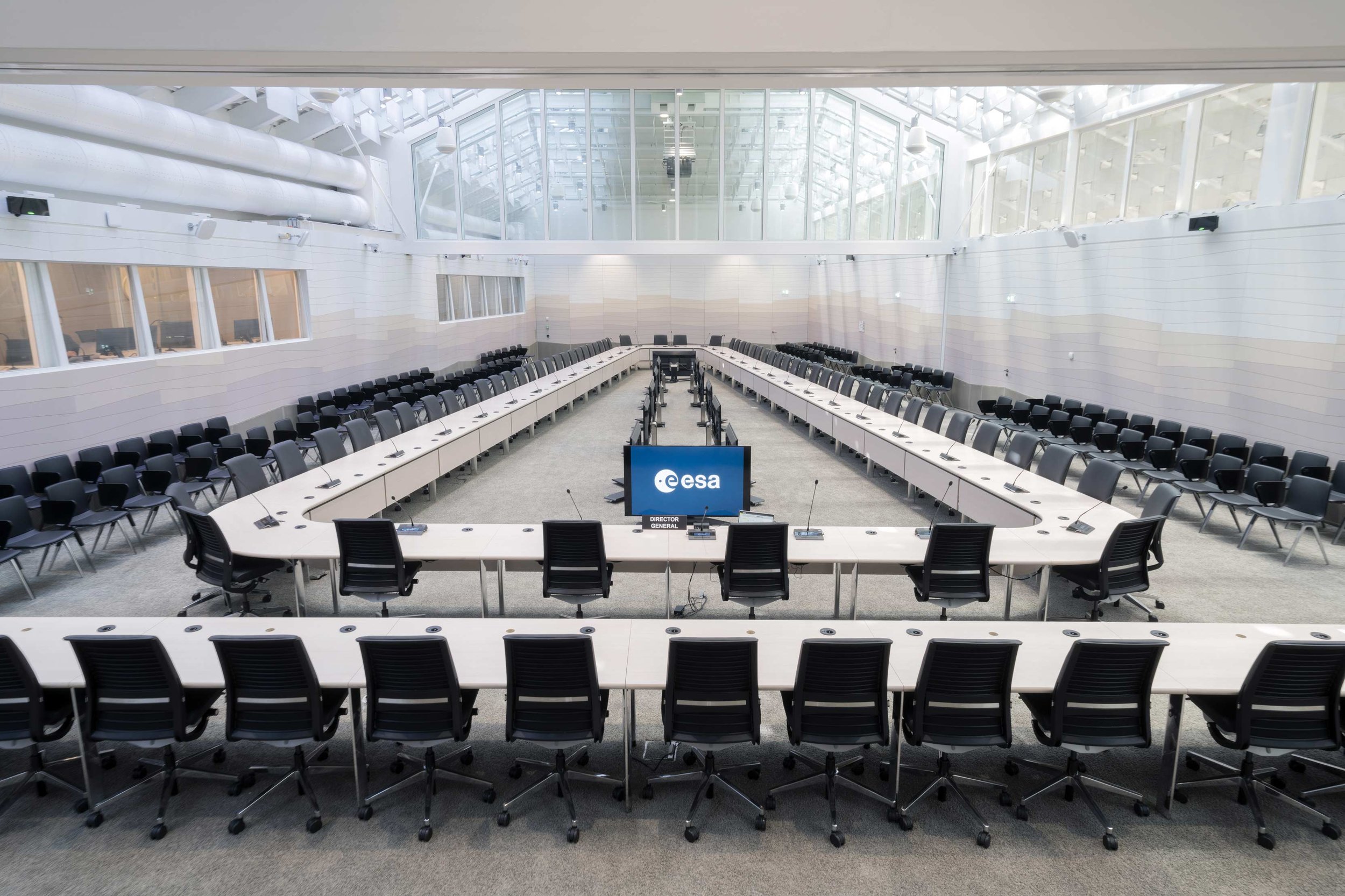
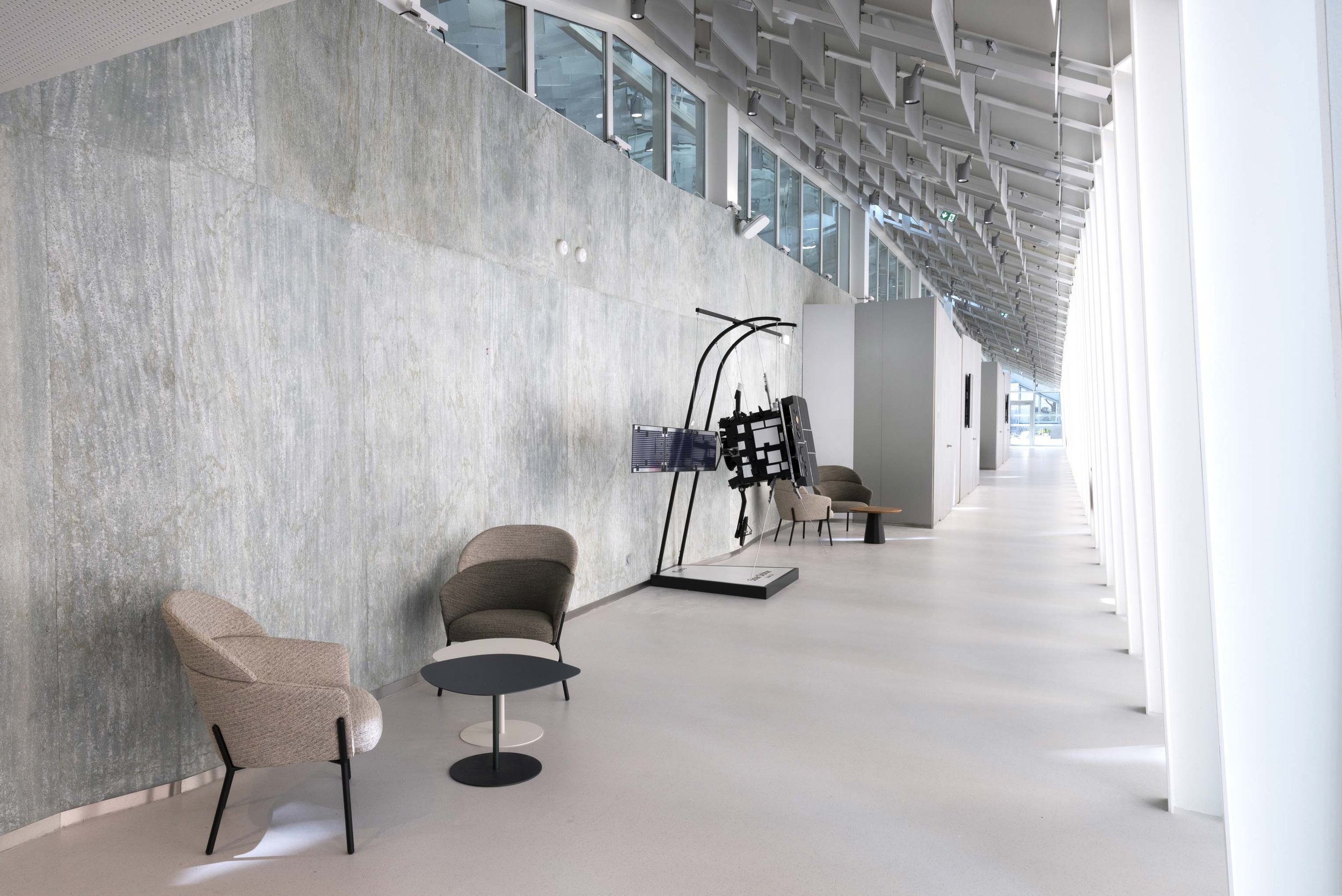
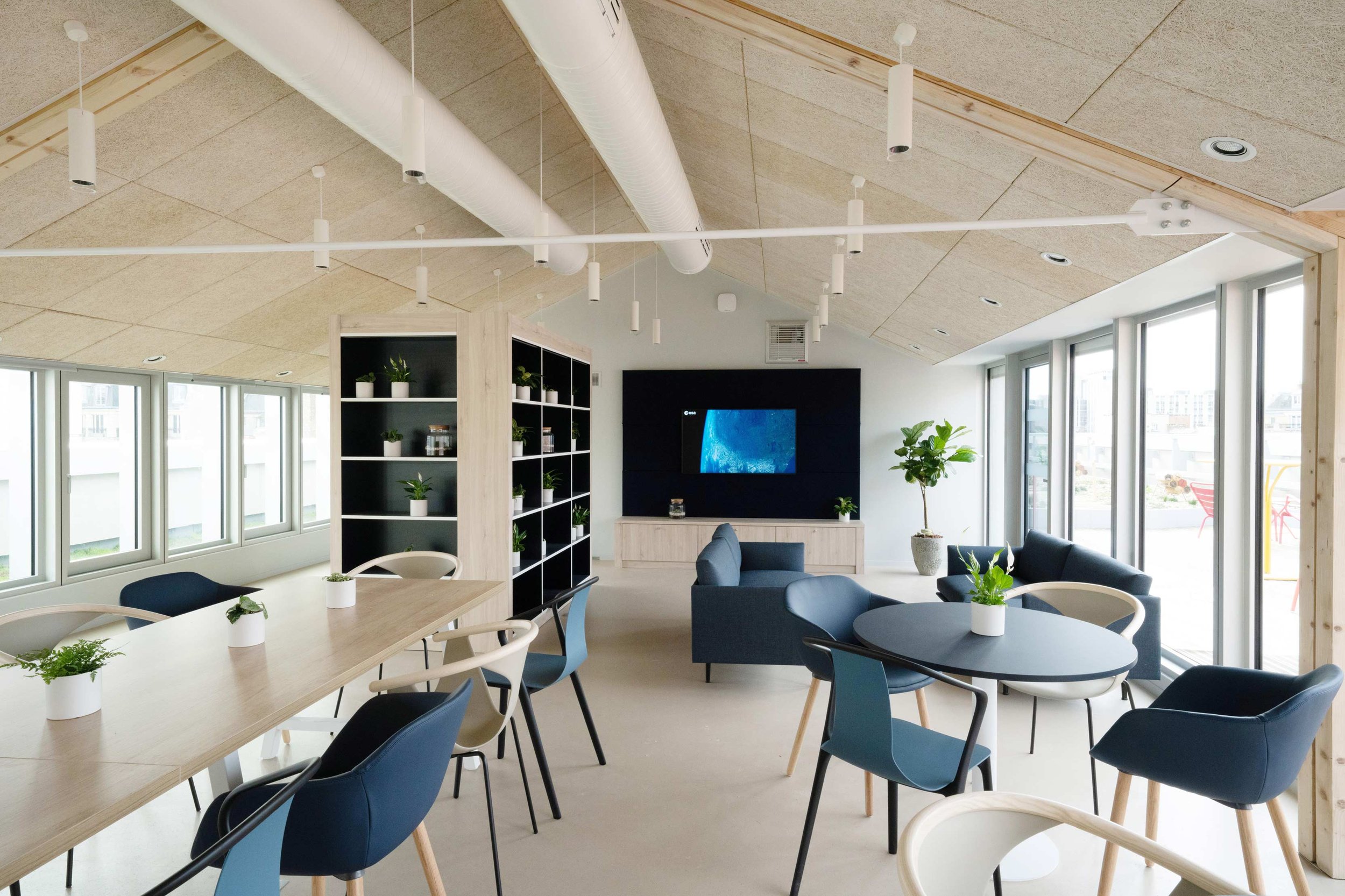
TECHNICAL SPECIFICATIONS
Adress : rue Mario Nikis, Paris 15th
Client : ESA - European Space Agency
Contracting authority support : Colliers
Developer : Sogelym Dixence
Architect and interior designer of commons spaces :
Atelier du Pont (Anne-Cécile Comar & Philippe Croisier)
Contract management : Corelo
Engineering team : AE75 (construction economics), Ingerop (fluides), VP & Green (structure and façades), Le Sommer (sustainable engineering), Peutz (acoustics), Cosil Peutz (light designer), Convergence (kitchen), Omega Al- liance (asbestos removal and demolition), Socotec (control office and SPS) General contractors : Bouygues Construction renovation private
Office layout and furniture : Majorelle
Surface : 11 592 m2
Date : November 2022
Sustainable specifications : HQE Bâtiment Durable Excellent level, Breeam Very Good level, Well Core and Shell Gold level
Photographers : Frédéric Delangle and ESA - European Space Agency
About Atelier du Pont
Founded in 1997, Atelier du Pont is an architecture and interior design firm that today employs 45 people from all walks of life, led by two partners: Anne- Cécile Comar and Philippe Croisier.
The agency works in a wide range of fields: facilities, housing, offices, private homes, hotels, boutiques, restaurants... and questions new ways of living, working and relaxing, to create places that are fair, creative and inspiring, in France and abroad.
His approach is global. Whether its projects take the form of a small 15 m2 boutique or a 10,000 m2 building, Atelier du Pont tackles every aspect: architecture, urban planning, interior design, furniture, art direction, space planning... Each project is a new adventure.
The agency has won numerous French and international awards:
French Design by VIA, Prix Régional de
la Construction Bois, ArchiDesignClub Awards, Trophée Eiffel, S.Arch Awards, The Plan Award, Prix AMO, Geste d’Or...
About ESA
The European Space Agency (ESA) is Europe’s gateway to space.
ESA is an intergovernmental organization founded in 1975 and headquartered in Paris. Its mission is to develop Europe’s space capabilities, ensuring that investment in the space sector benefits citizens in Europe and around the world.
ESA has twenty-two member states: Austria, Belgium, the Czech Republic, Denmark, Estonia, Finland, France, Germany, Greece, Hungary, Ireland, Italy, Luxembourg, the Netherlands, Norway, Poland, Portugal, Romania, Spain, Sweden, Switzerland and the United Kingdom. Other countries have associate member status.
By coordinating the financial and intellectual resources of its members, ESA can undertake programs and activities that go far beyond what any individual country could achieve on its own. In particular, it is cooperating with the EU on the implementation of the Galileo
and Copernicus programs, as well as
with Eumetsat on the development of meteorological missions.
To find out more: www.esa.int / www.esa.fr
Wa House - A Harmonious Blend of Nature and Design
Perched amidst the breathtaking natural landscapes of Wakayama, Gwenael Nicolas's modern fisherman's house stands as an iconic yet unassuming testament to architectural brilliance. Set within the enchanting backdrop of Nanki-Shirahama, a national park renowned for its stunning beauty, this architectural gem seamlessly fuses with its surroundings, creating a harmonious sanctuary that embraces the wild allure of the coast.
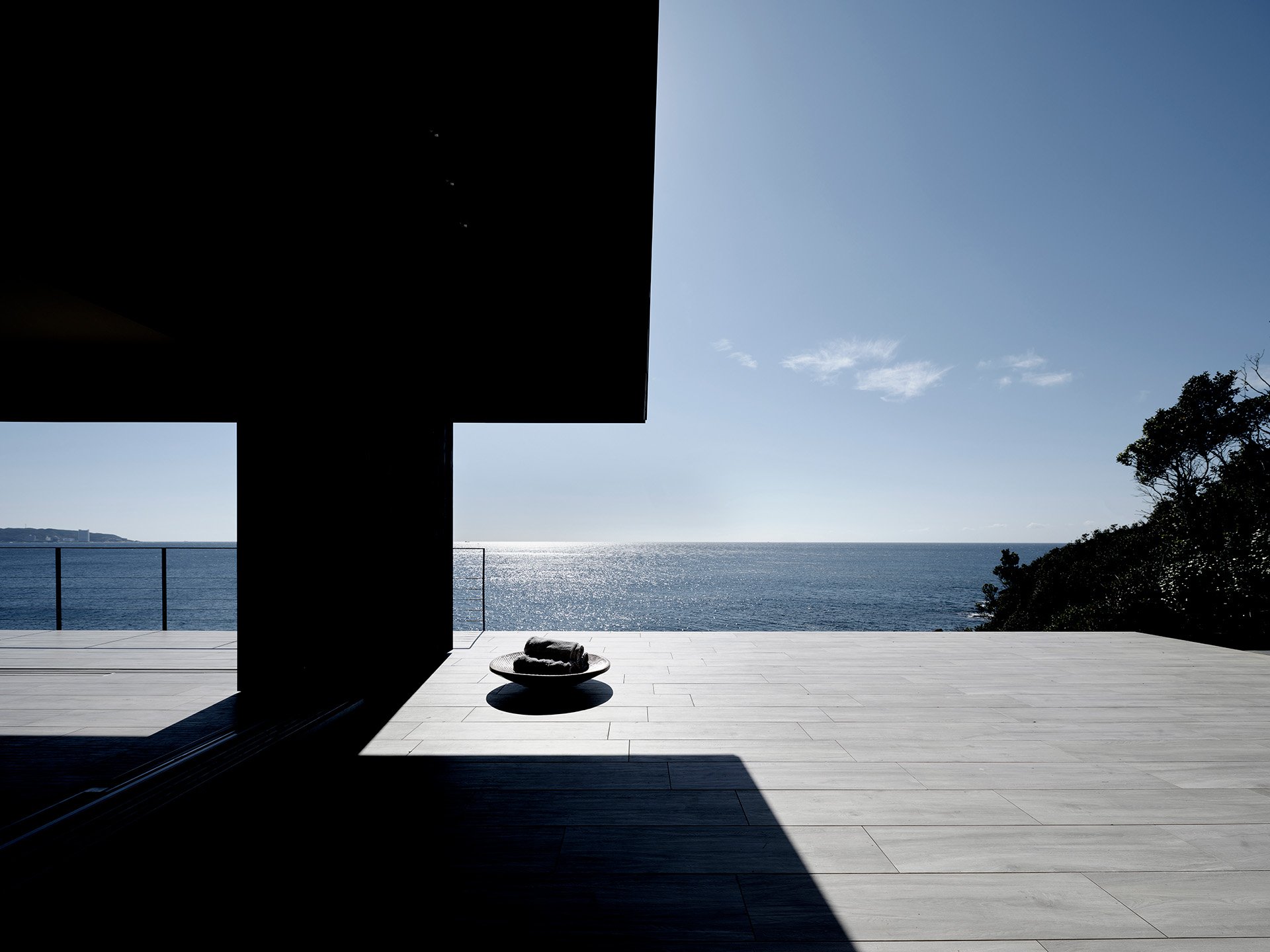
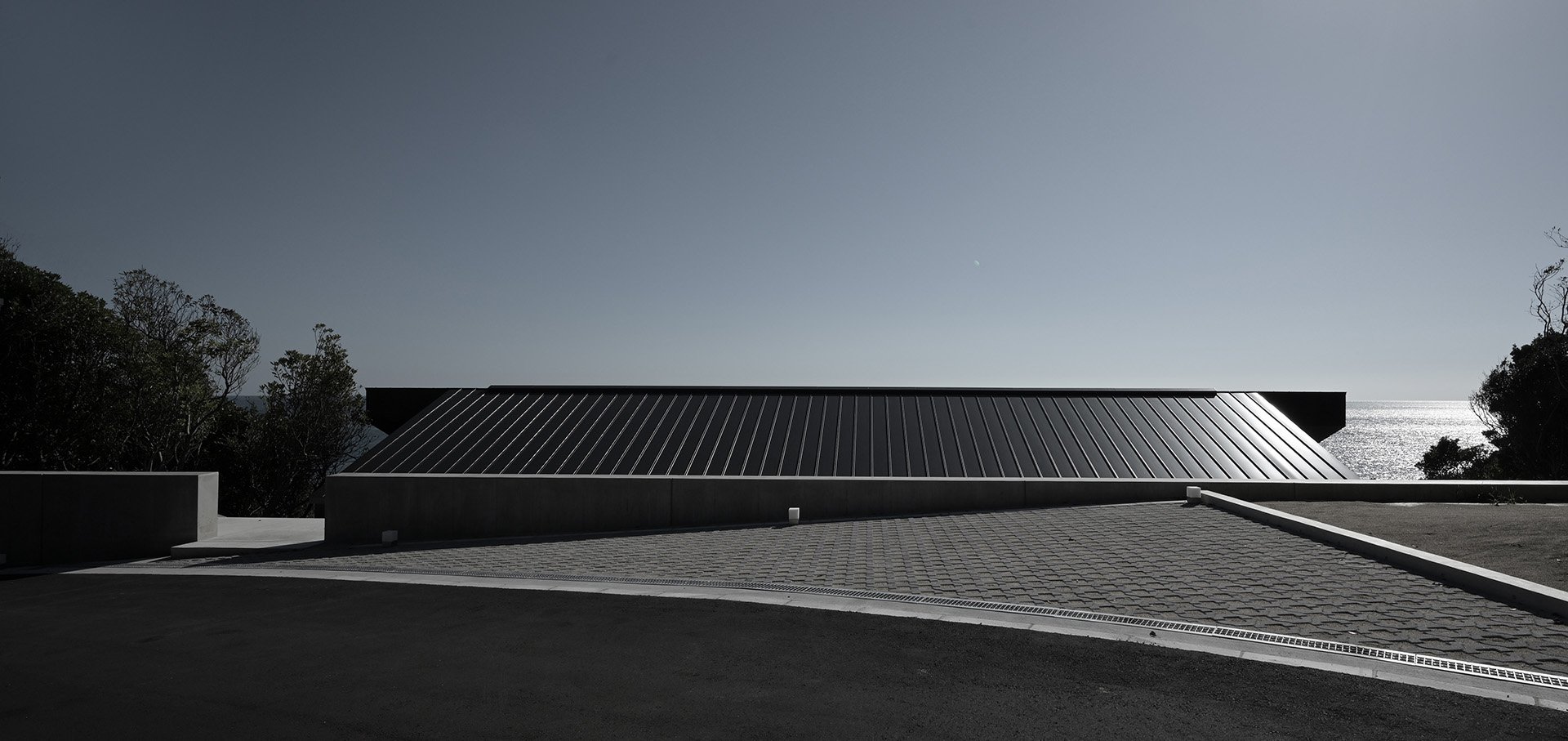
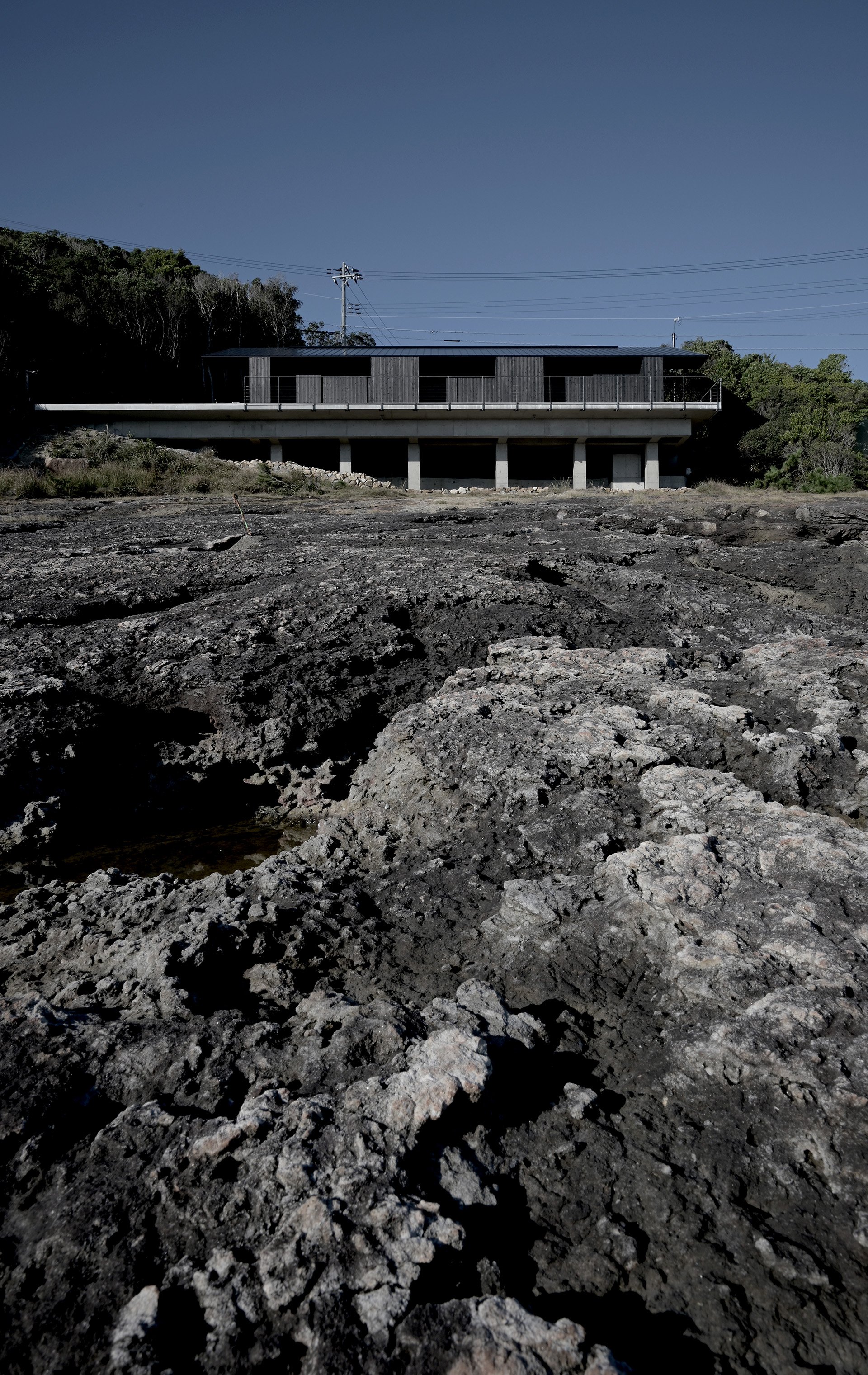
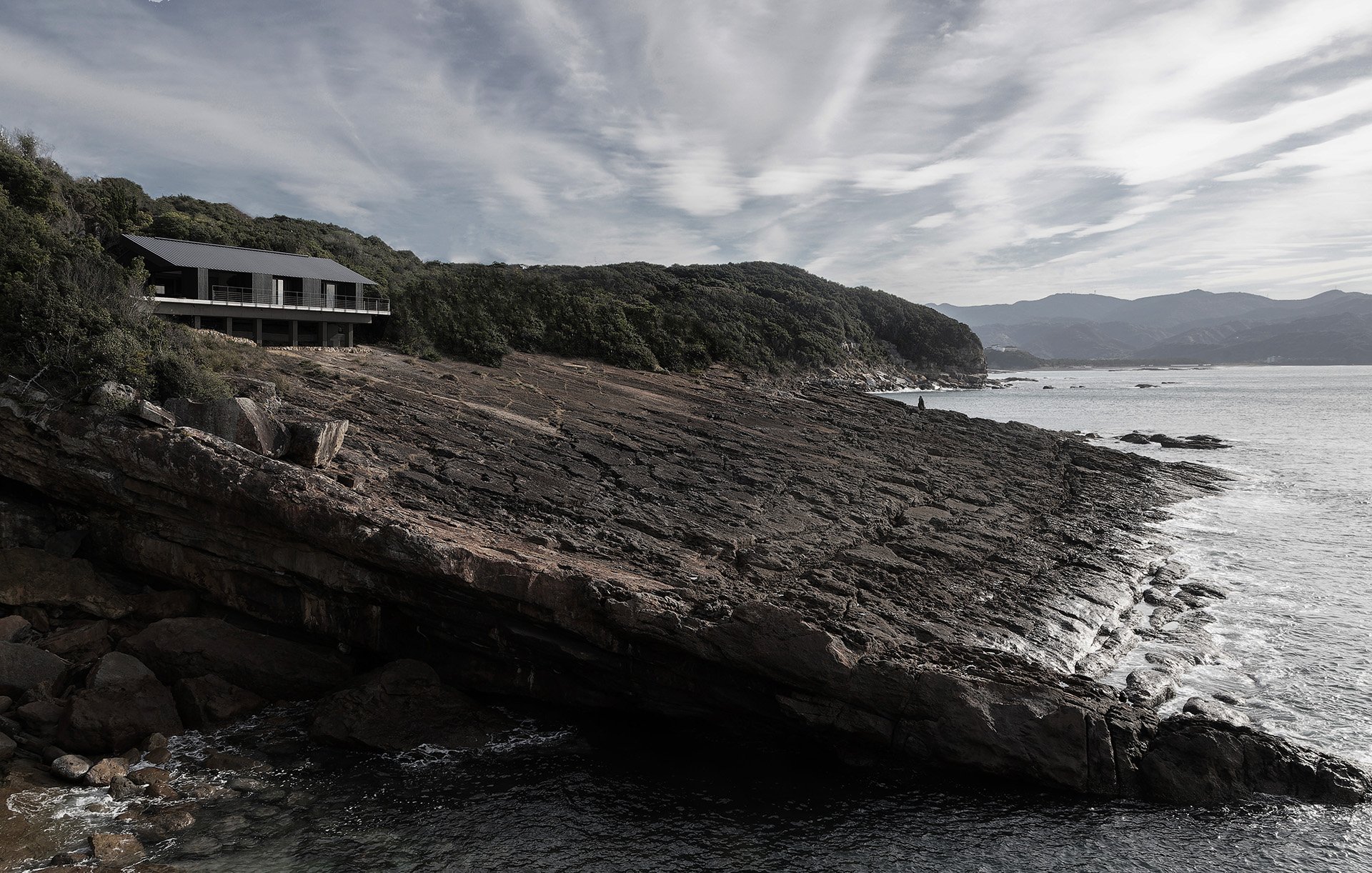
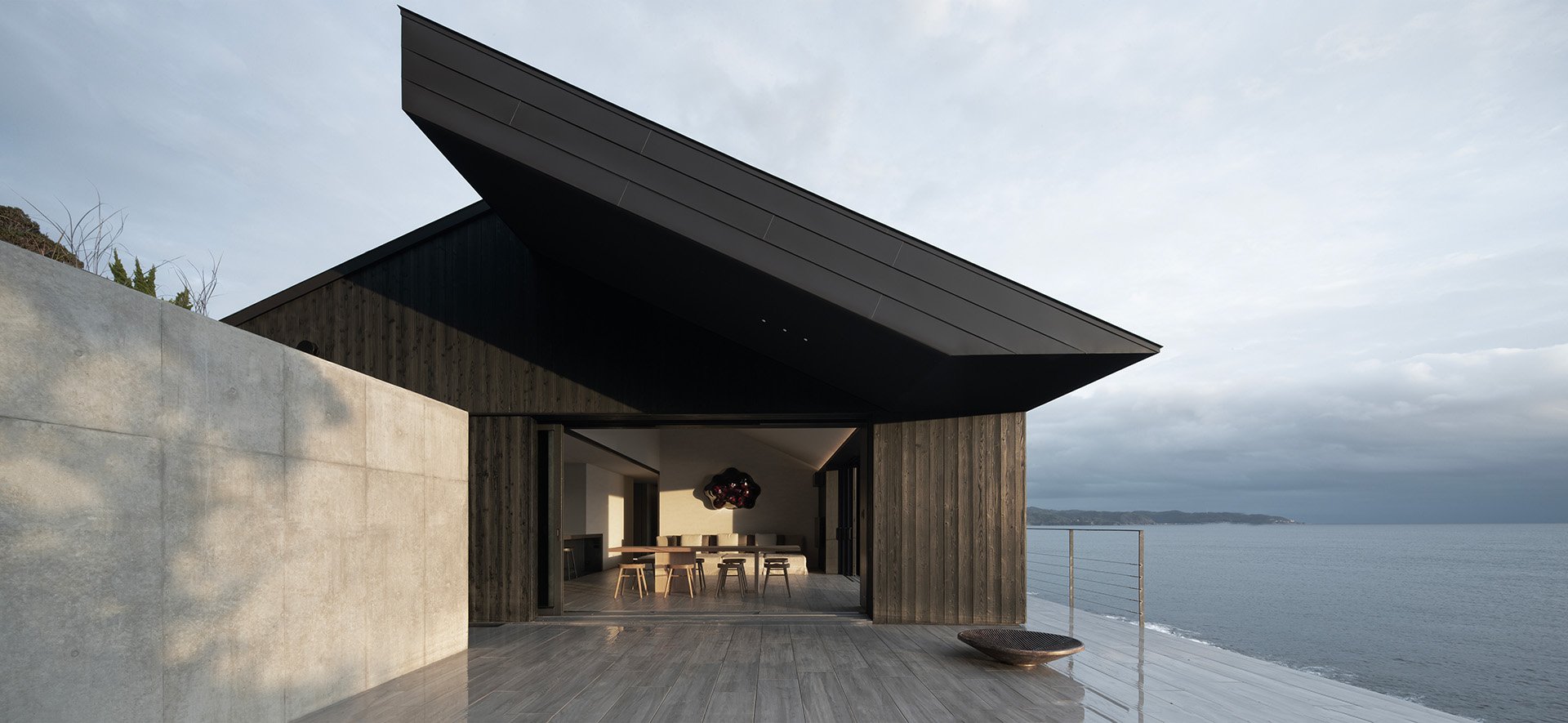
Perched amidst the breathtaking natural landscapes of Wakayama, Gwenael Nicolas's modern fisherman's house stands as an iconic yet unassuming testament to architectural brilliance. Set within the enchanting backdrop of Nanki-Shirahama, a national park renowned for its stunning beauty, this architectural gem seamlessly fuses with its surroundings, creating a harmonious sanctuary that embraces the wild allure of the coast.
Born on the Atlantic shores, Nicolas has drawn inspiration from his upbringing to create a house that boldly confronts nature while respecting its power. In collaboration with Haretoke Architects, every aspect of this carefully crafted dwelling has been thoughtfully considered to ensure a symbiotic relationship between the man-made structure and the untamed environment.
The design of this single-story abode is a delicate dance with nature. Its height is meticulously calculated to mirror the ocean's horizon, allowing the house to blend effortlessly into the coastal panorama. The distinctive wing-like roof, designed to withstand the fierce ocean winds, lends the structure its unique character. The wooden house delicately perches atop a concrete foundation, elevating it above the rocky terrain. In the face of storms, the waves gracefully flow beneath the concrete pillars, ensuring the house remains resilient. Its dark hues seamlessly merge with the natural surroundings and the reef's dark stone, harmonizing the built environment with the coastal ecosystem.
The extended roof serves a dual purpose, providing shade for the terraces while paying homage to the vernacular architecture of the region. Reimagined as a minimalist sculptural object, it embodies the essence of simplicity and functionality. Covered in Yakisugi, burnt cedar wood, the house takes on a rustic yet refined aesthetic, perfectly suited for its extreme location.
Undoubtedly, the house's crowning glory lies in its sweeping 180-degree ocean views. The expansive terrace seemingly floats above the sea, flawlessly merging with the living room to create a seamless transition from indoor to outdoor spaces. To emphasize this continuity, the same flooring material flows throughout the house, blurring the boundaries between nature and interior.
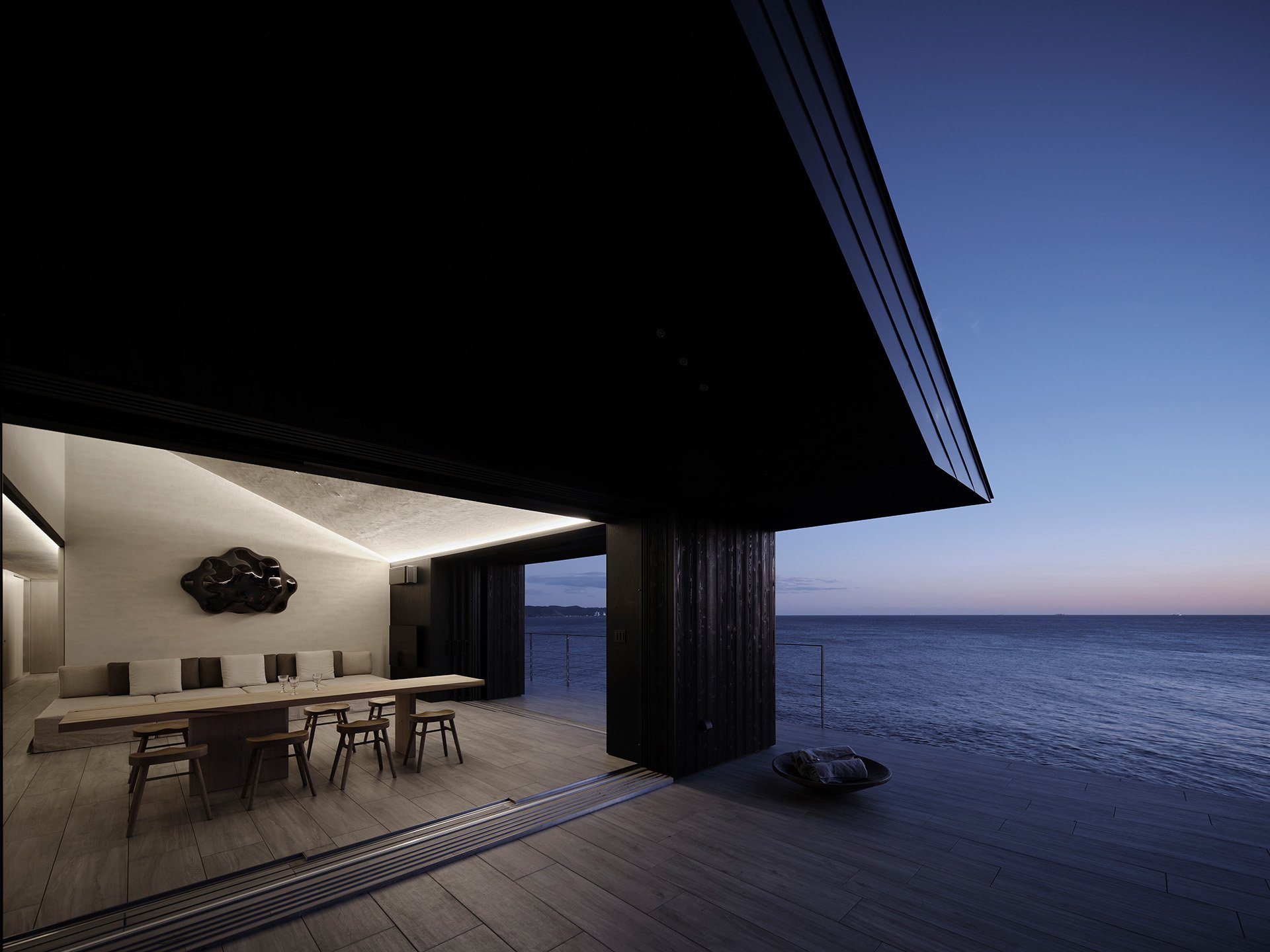
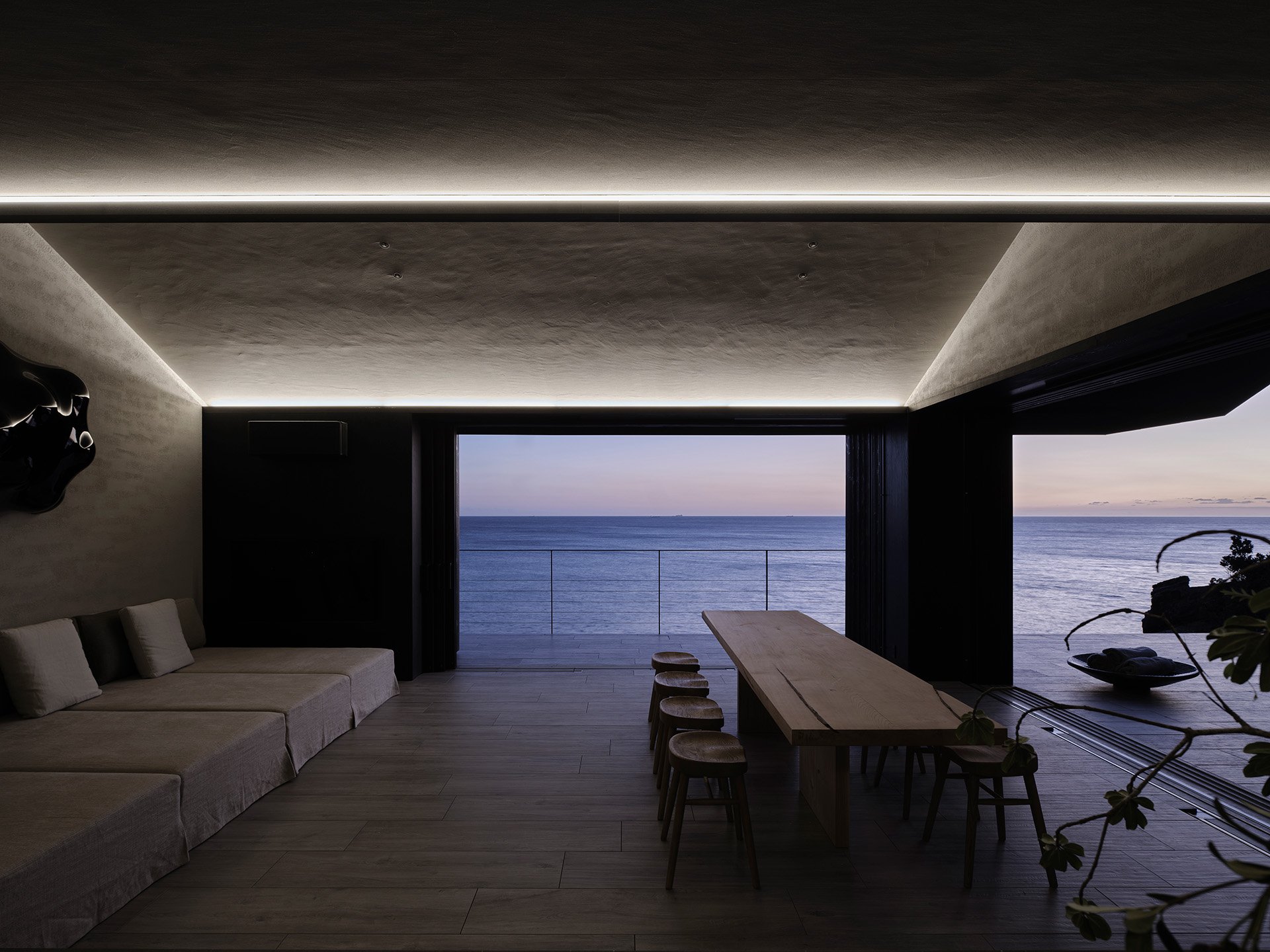
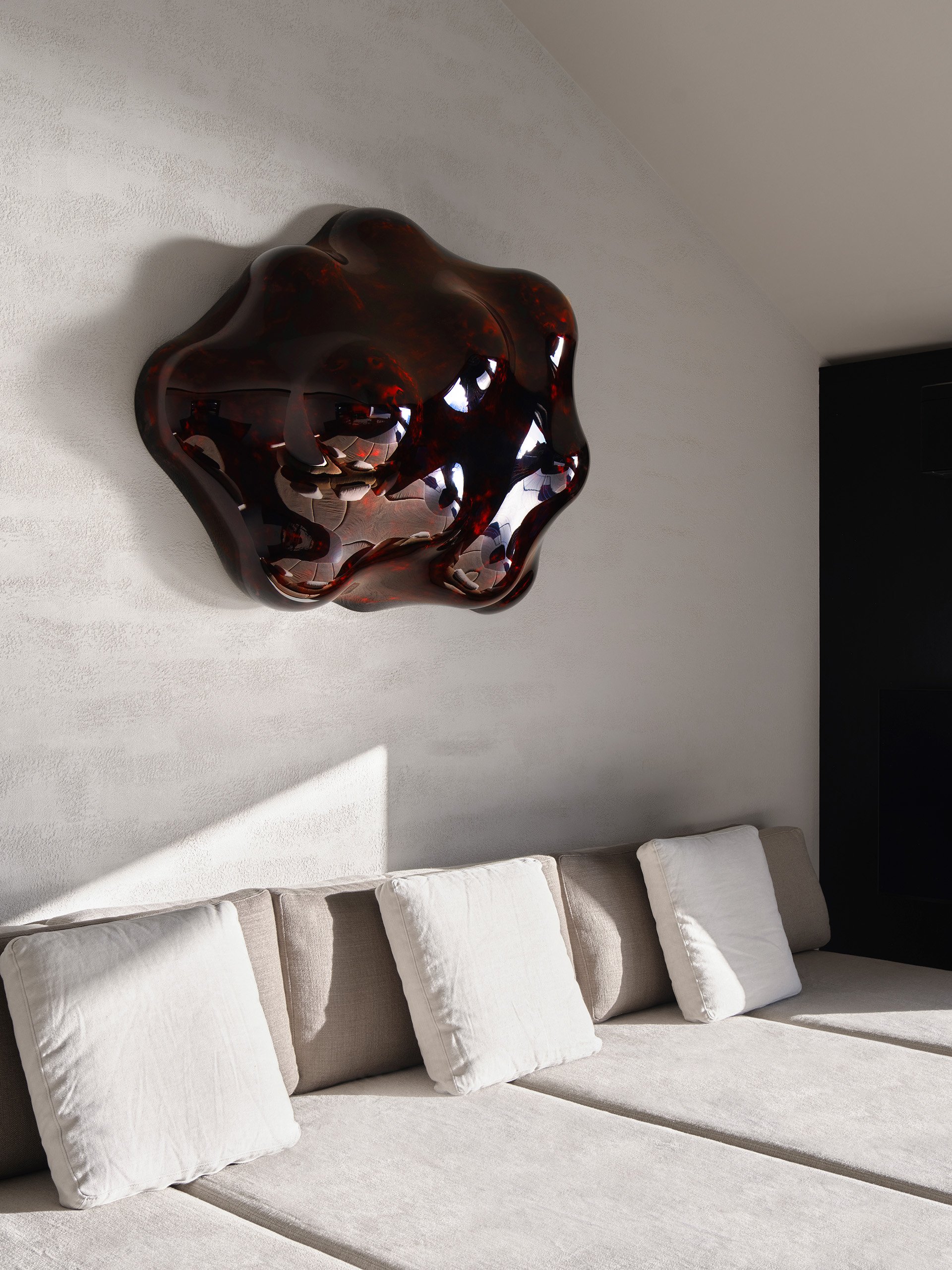
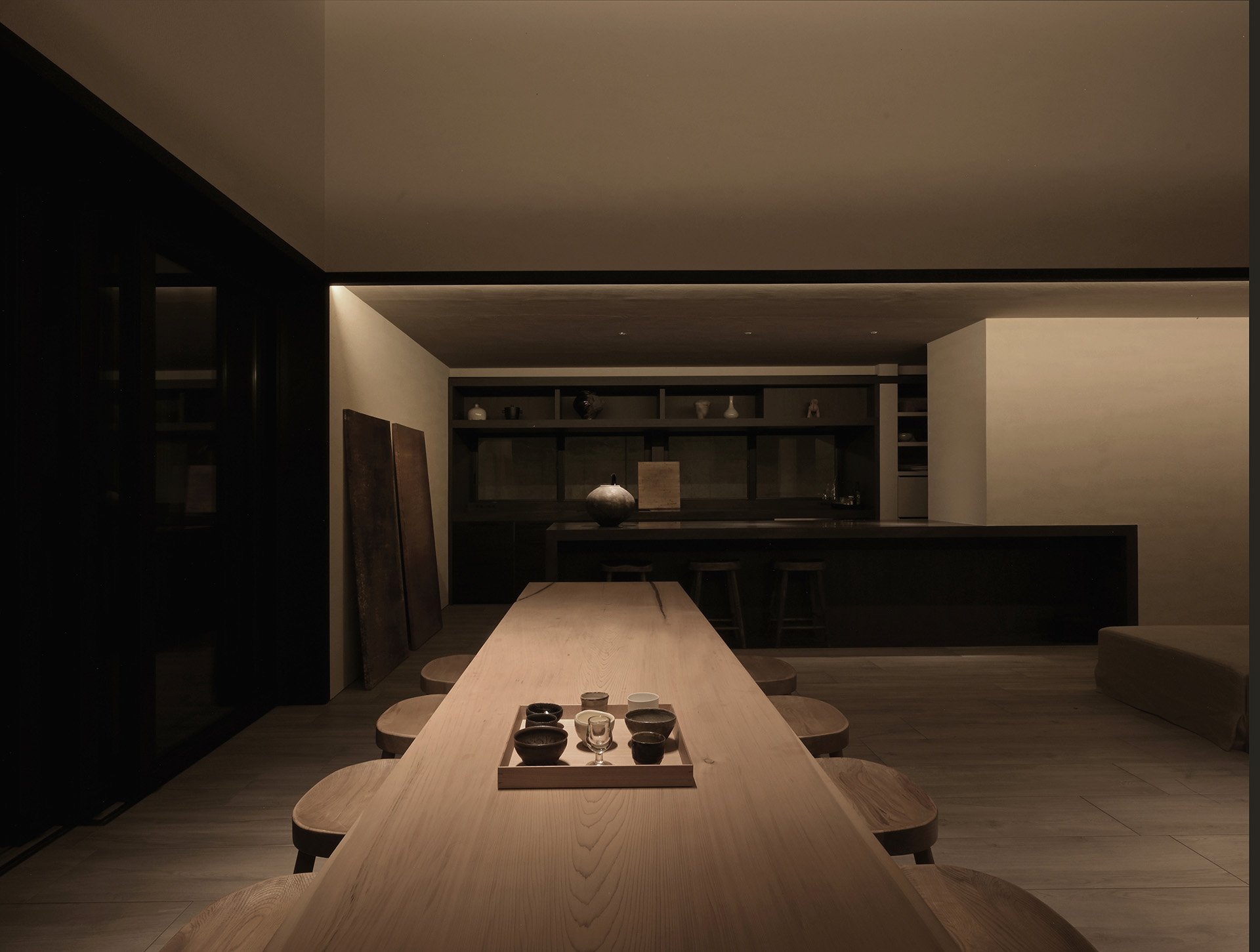
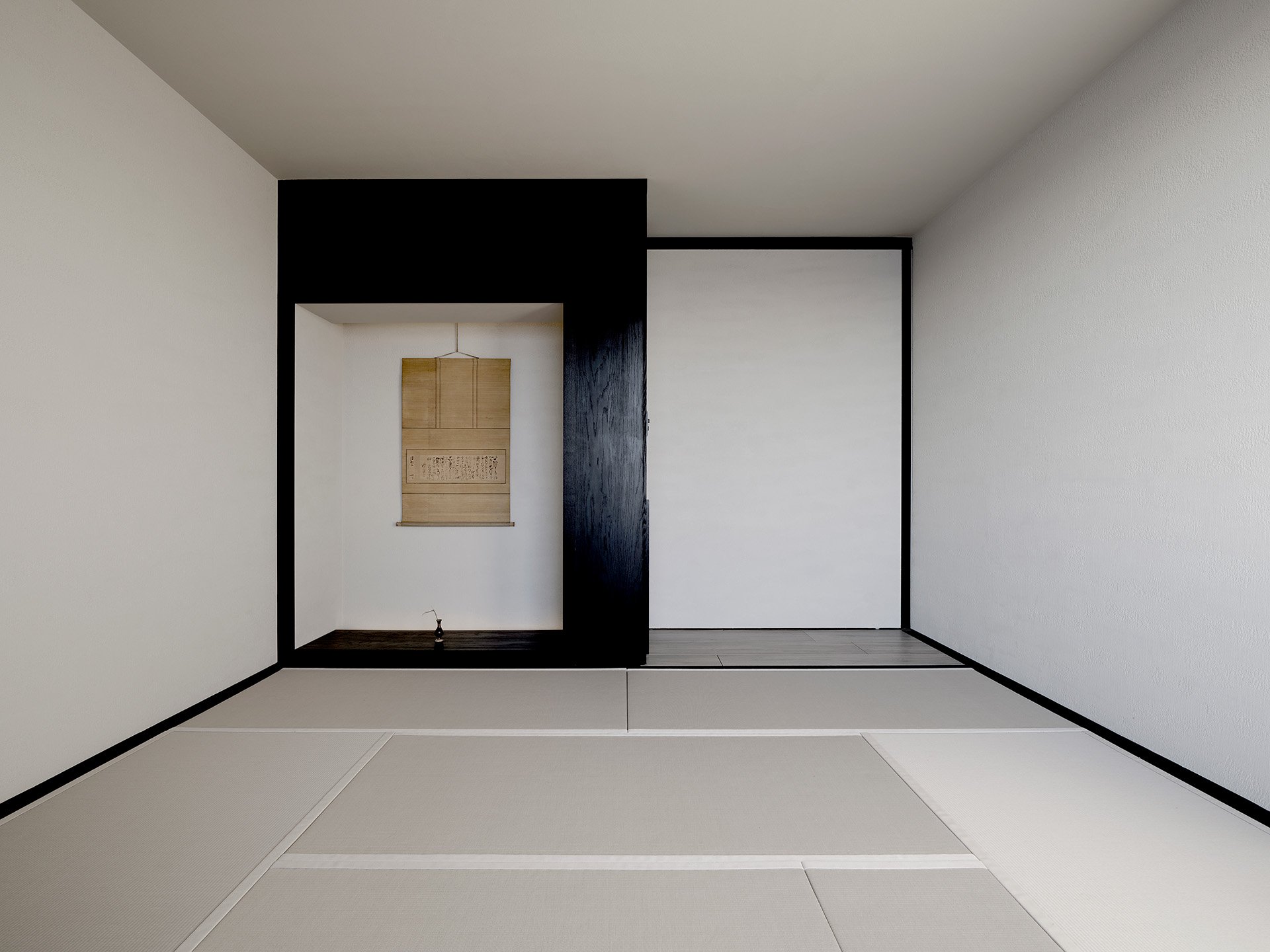
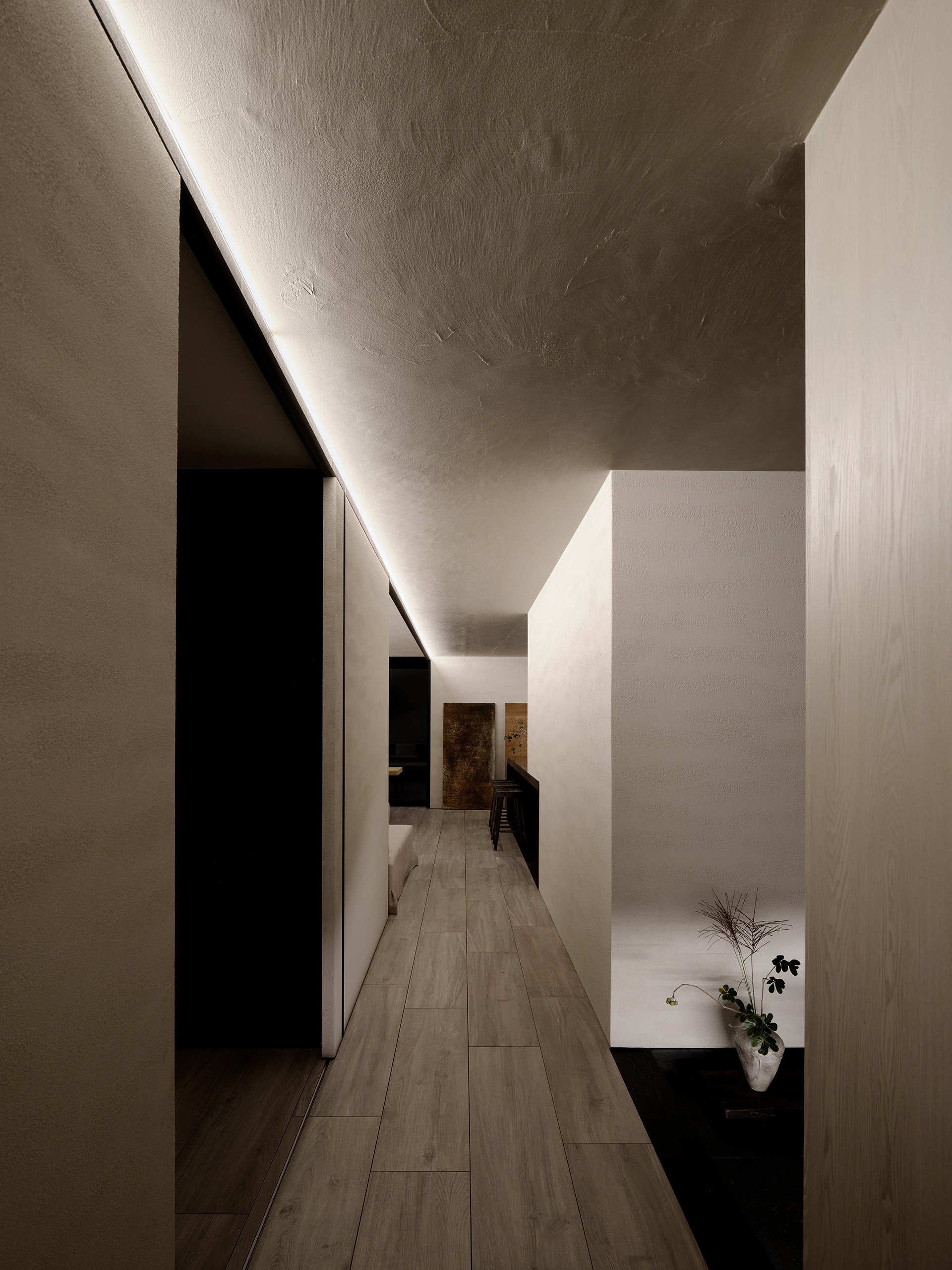
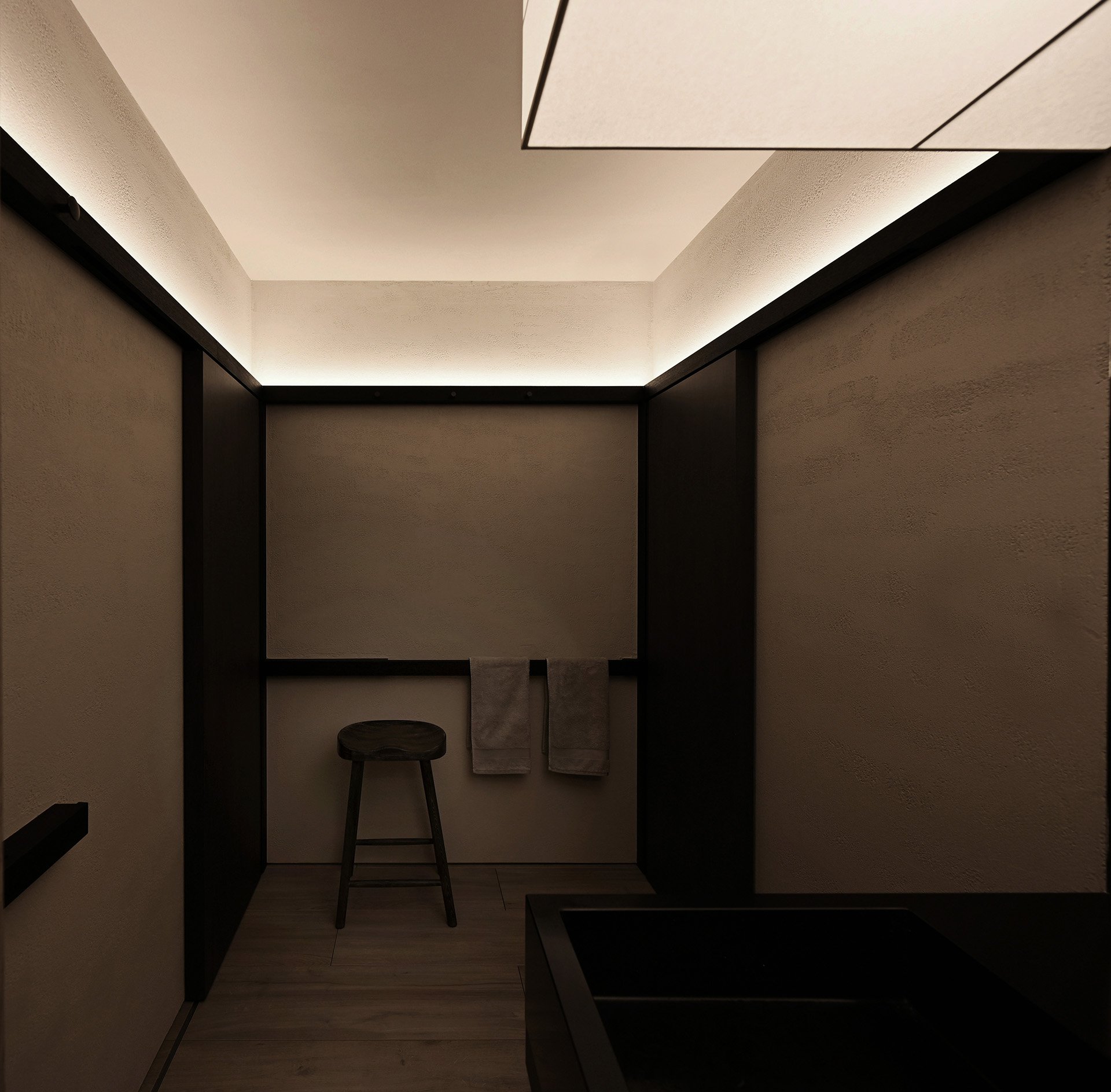
Throughout the house, surprising objects and artworks, reminiscent of marine treasures, punctuate the spaces. Genta Ishizuka's lacquer art above the sofa adds an exquisite touch, drawing on the beauty of the sea. The open kitchen, a monolithic centerpiece in the living room, invites residents to immerse themselves in the outside scenery while entertaining and cooking. Artistic rusty panels, created by nature itself, adorn the space, adding an organic element to the interior. With only two Japanese-style rooms, an atelier, and a spacious living room that opens generously to the ocean, the house's design ensures flexible use, be it for entertaining, tea ceremonies, or simply unwinding.
With a color palette and materials inspired by the natural environment, the house exudes warmth and continuity. From the rough-textured walls to the ceramic tiles and tatami floors, the warm gray tones evoke a sense of spaciousness and harmony. Large sliding doors seamlessly merge with the walls, dissolving the boundaries and inviting the outside in.
The bathroom, designed as a tranquil retreat within the house, immerses residents in an atmosphere of serene intimacy. An oversized suspended shade bathes the vanity area in a gentle and luminous light, offering a sense of comfort and relaxation. The lower bathtub, seemingly carved into the black stone floor, connects inhabitants with the raw sensations of nature, enhancing the house's primitive allure.
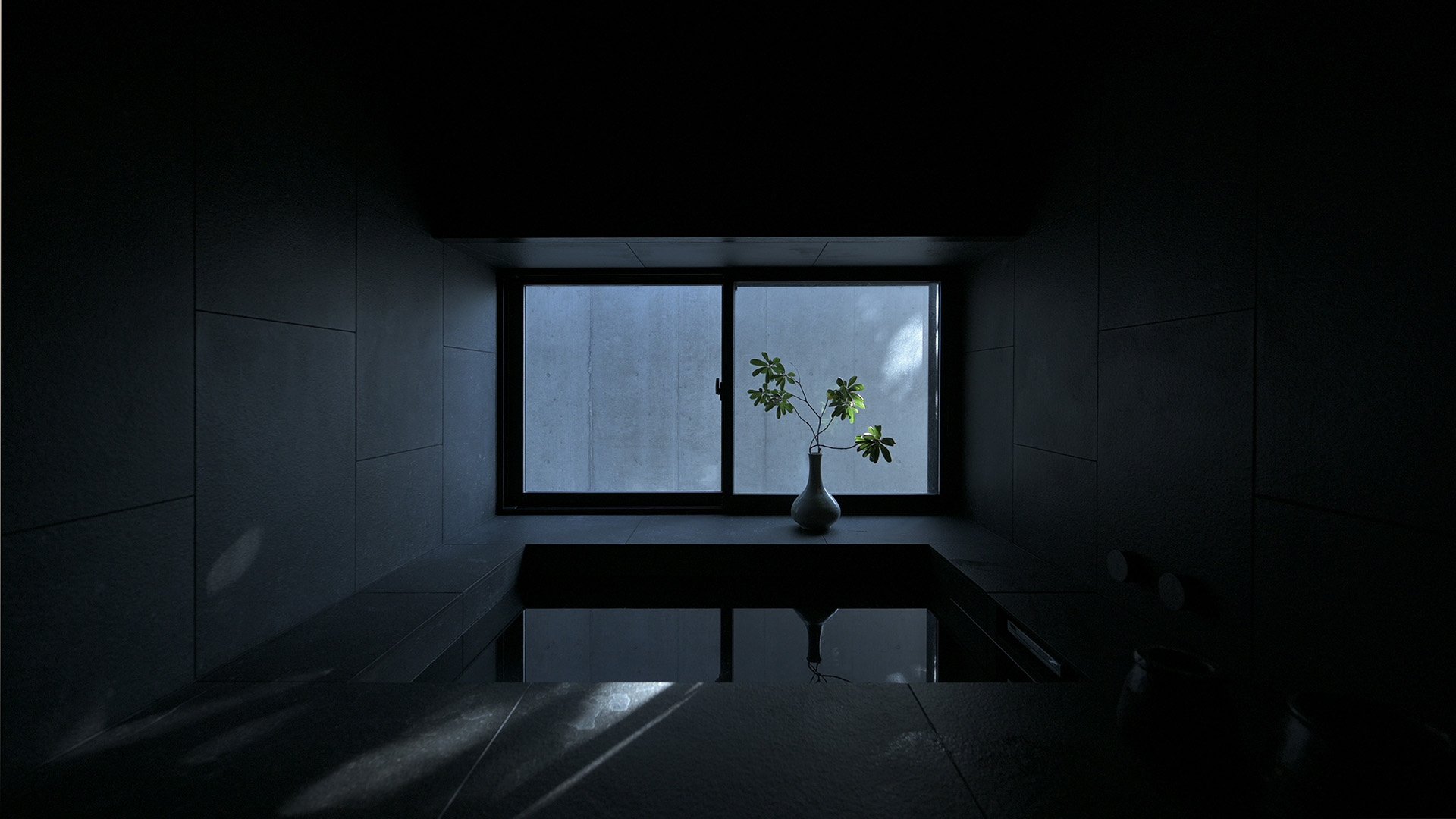
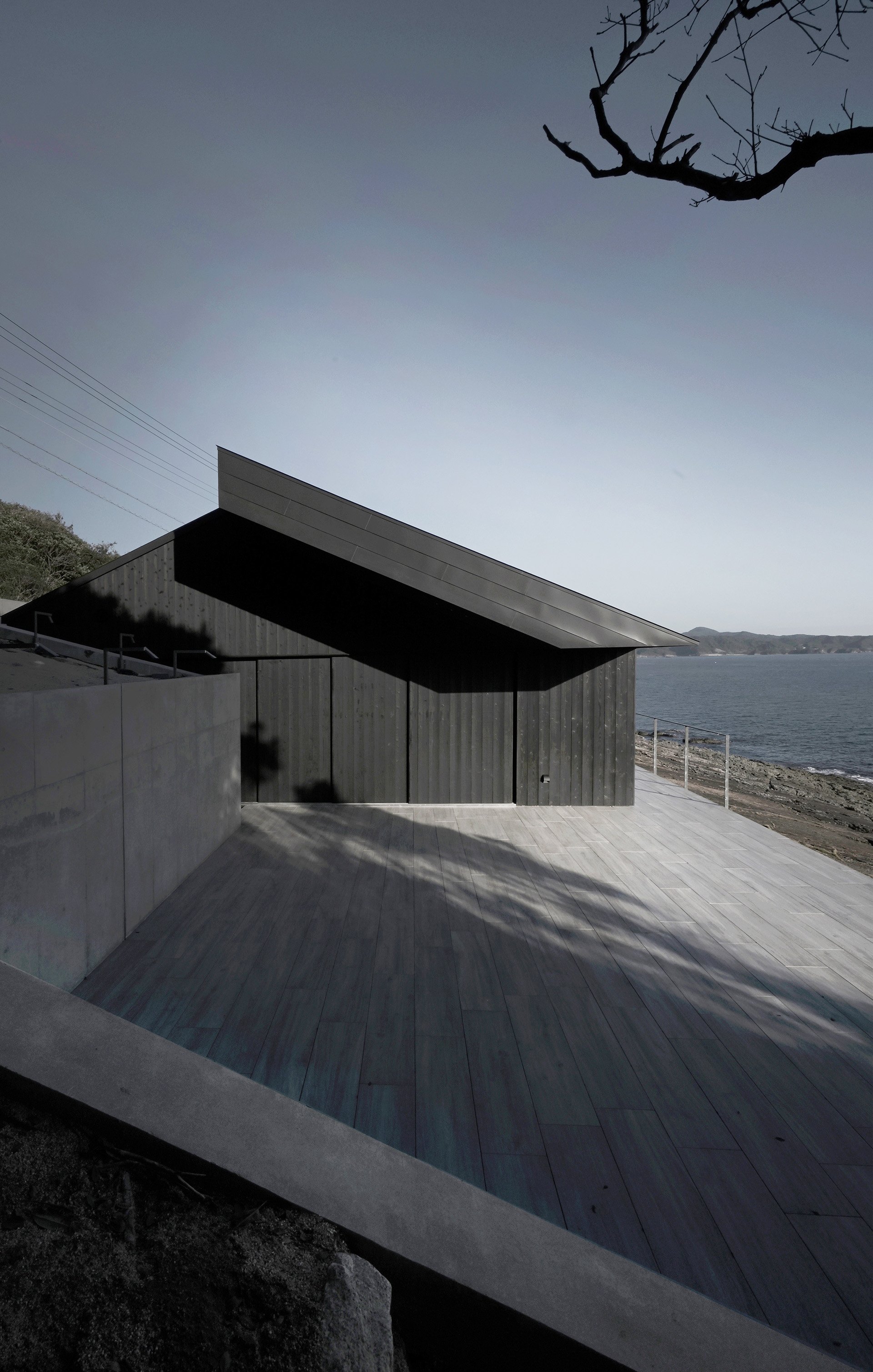
Honoring the tradition of old Japanese houses, Wa House can be completely enclosed with Yakisugi shutters, safeguarding the interior from inclement weather. Through its fusion of vernacular architecture and modern abstract archetypes, the house sparks a captivating dialogue that transcends time and culture.
PHOTO:
YASUTAKA KOJIMA / IKUNORI YAMAMOTO
GWENAEL NICOLAS
Photo courtesy of: CURIOSITY INC. & Atelier HARETOKE
Music Hall in the Sky by Takuro Yamamoto Architects
Takuro Yamamoto Architects won the Bronze Award for Music Hall in the Sky at the Sky Design Awards 2022. In a residential area of Tokyo, Music Hall in the Sky is a small classical music concert hall with about 50 seats. It is surrounded by collective housing and three-story houses, but despite this, you can listen to music in an environment where only the sky can be seen outside the window because the adjacent houses cannot be seen from the hall's windows.
Takuro Yamamoto Architects won the Bronze Award for Music Hall in the Sky at the Sky Design Awards 2022.
In a residential area of Tokyo, Music Hall in the Sky is a small classical music concert hall with about 50 seats. It is surrounded by collective housing and three-story houses, but despite this, you can listen to music in an environment where only the sky can be seen outside the window because the adjacent houses cannot be seen from the hall's windows.
It is common for concert halls to be designed without windows. For staging reasons and sound insulation, concerts are generally separated from everyday life by having no windows in the hall, especially in large halls. A windowless hall, however, is inappropriate for a space that should be relaxing, because it creates a sense of captivity in the audience.
Architect Takuro Yamamoto also believed that if you could see the sky when looking lower than eye level, it would be a very unusual experience similar to looking out the window of a plane, and this would make you feel as if the whole building were surrounded by the sky instead of buildings. The mirror and the top light were combined to create a ribbon window at the foot of the stage. Listeners may enjoy concerts in this hall on a Sunday afternoon and escape everyday life for a while by watching the blue sky and floating clouds.








Drawing & Planning
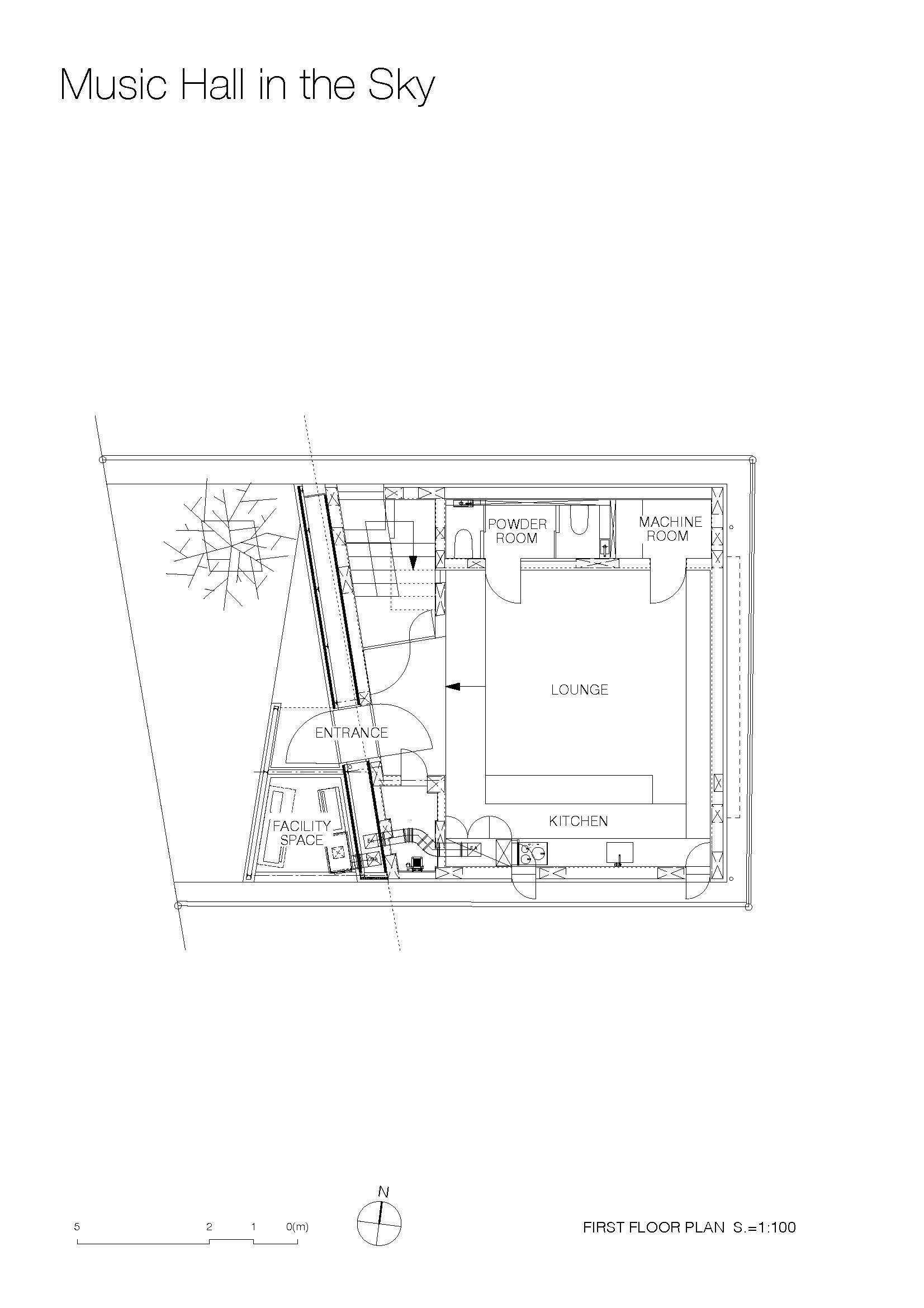
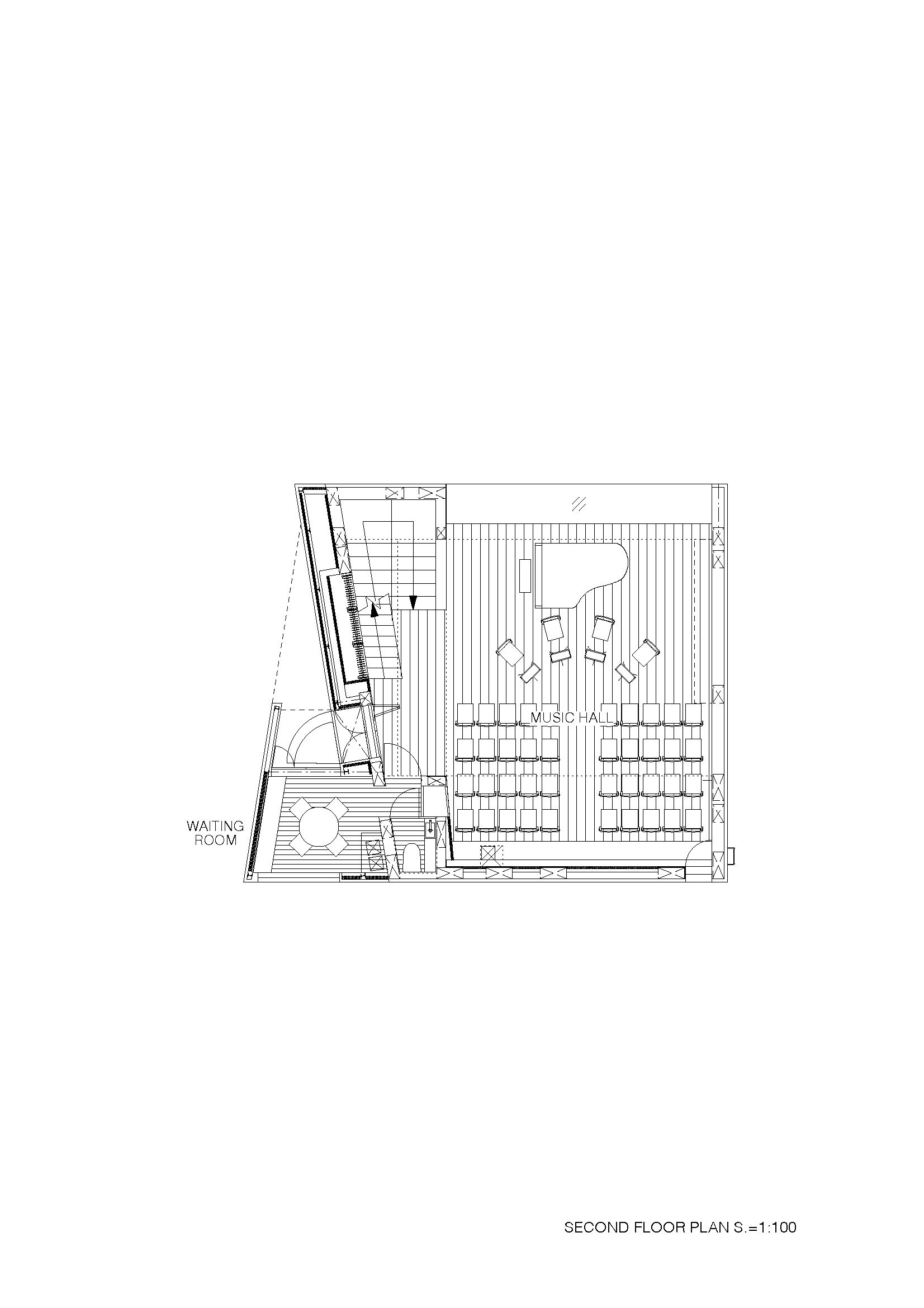
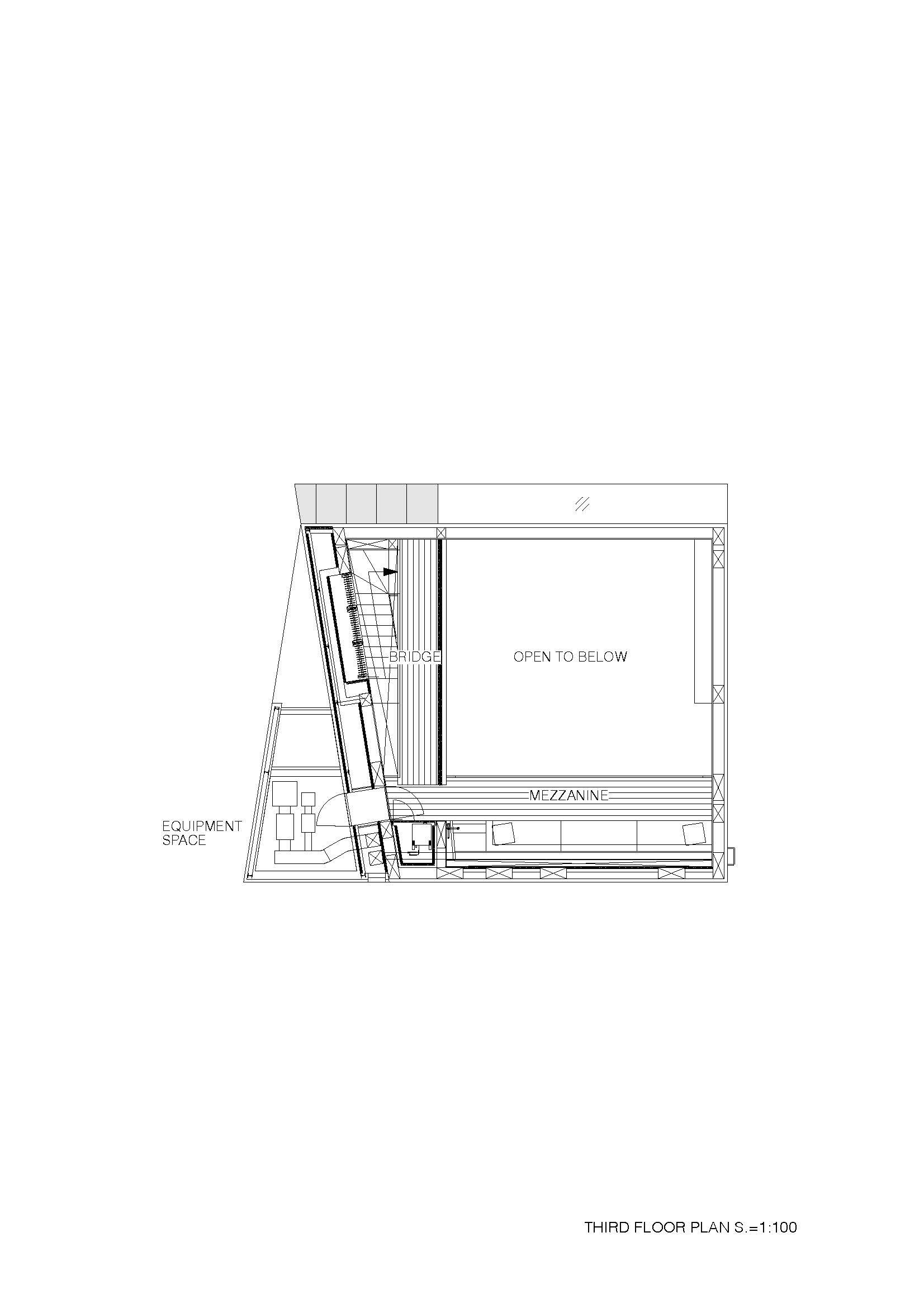
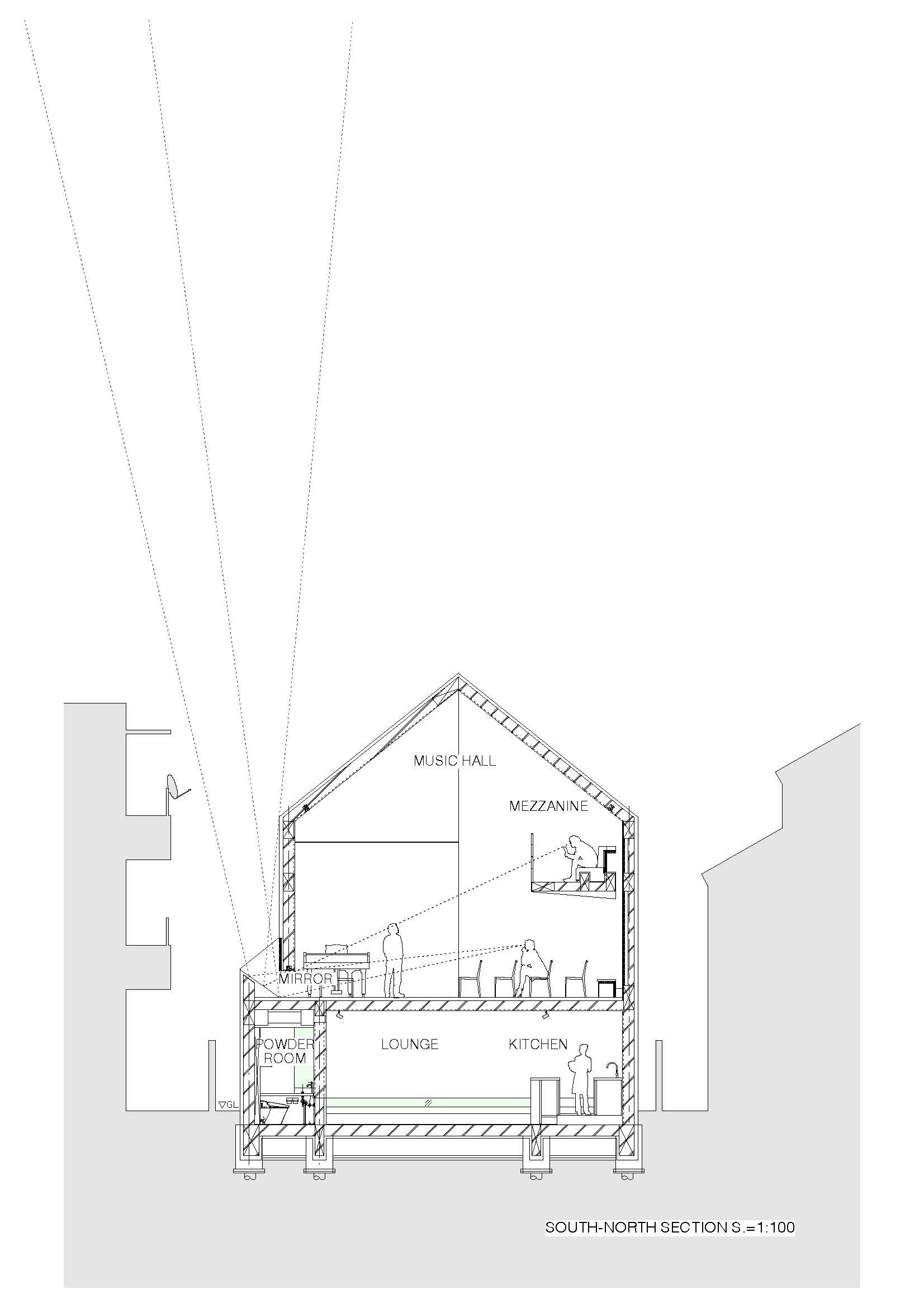
Designer Profile
Takuro Yamamoto
Takuro Yamamoto Architects
Born in Shiga Prefecture in 1973. Though admitted to the Department of Mechanical Engineering, Faculty of Engineering, Kyoto University, intending to design aircraft, he changed his track when he encountered architecture. After working with Nippon Electric Co., Ltd., he enrolled in the Department of Architecture, Faculty of Science and Engineering, Waseda University. Completing the master’s course in 2003, he joined Atelier Bow-Wow. Then, he established Takuro Yamamoto Architects in 2005. Worked as a part-time lecturer at Shibaura Institute of Technology from 2010 to 2014 and at Waseda University from 2013 to 2016.
ARCHITECTURAL SYNOPSIS:
Credits : Takuro Yamamoto Architects
Location :Tokyo
Use : Music Hall
Site Area : 140.57m2
Building Area : 84.16m2
Total Floor Area :188.91m2
Completion : November 2019
Structure : Reinforced Concrete + Steel
Client : a married couple
Architect : Takuro Yamamoto
Structure Design : Takashi Baba Structure Design Office
Acoustic Design : Nagata Acoustics
Construction : Shin Co., Ltd.
For more information: https://takuroyama.jp
VALENTINO’S PINK PP HUE ENTERS THE EVERYDAY WITH PANTONE
A single color, tested and refined, augmented and uplifted. The iconic Pink PP hue - first conceived for Valentino’s Pink PP Fall/Winter 2022-23 Collection - tells a story of exacting standards, extensive research, and undeniable energy. Now, the hue that has taken over billboards and pulsed down the runway is entering a new sphere.
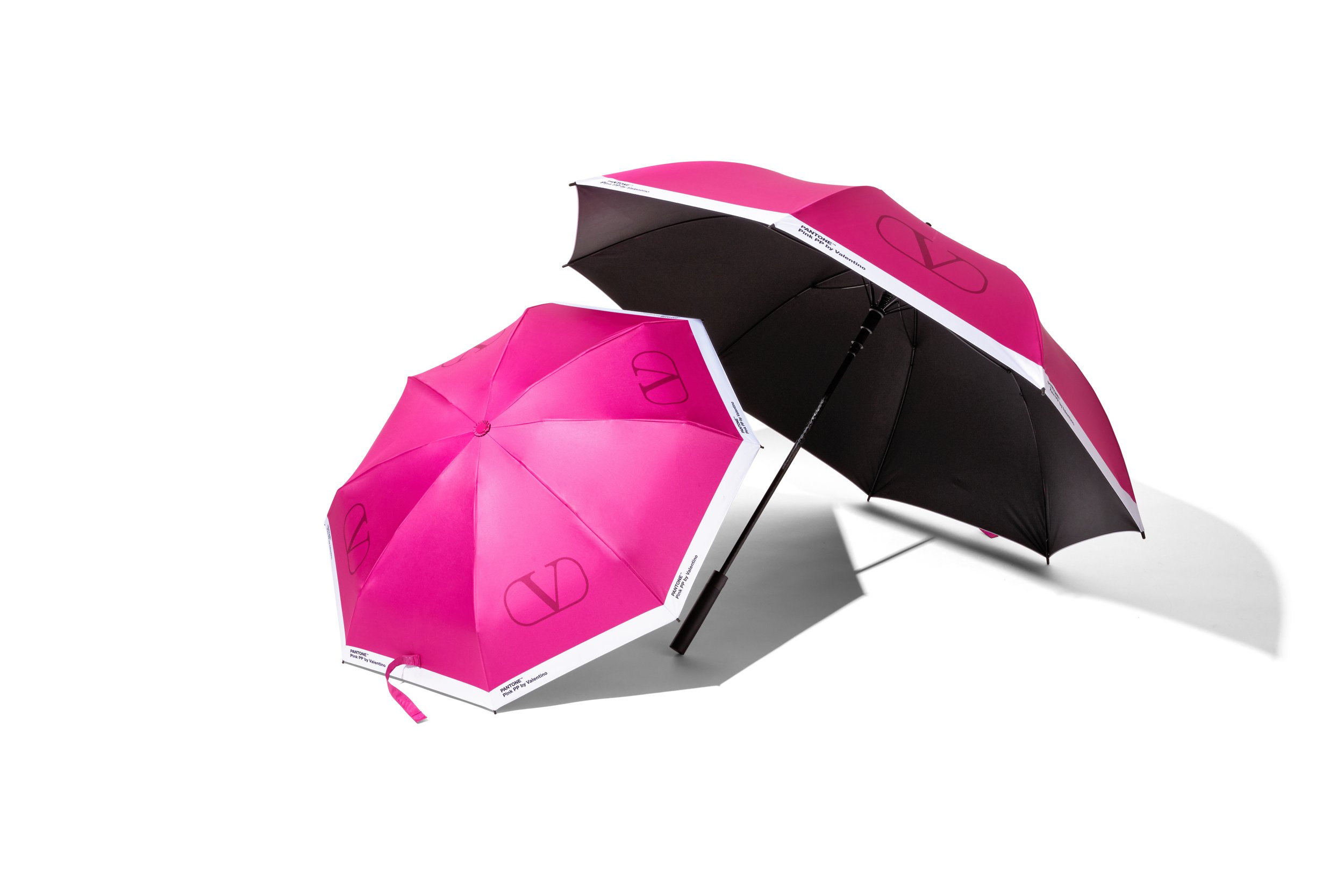
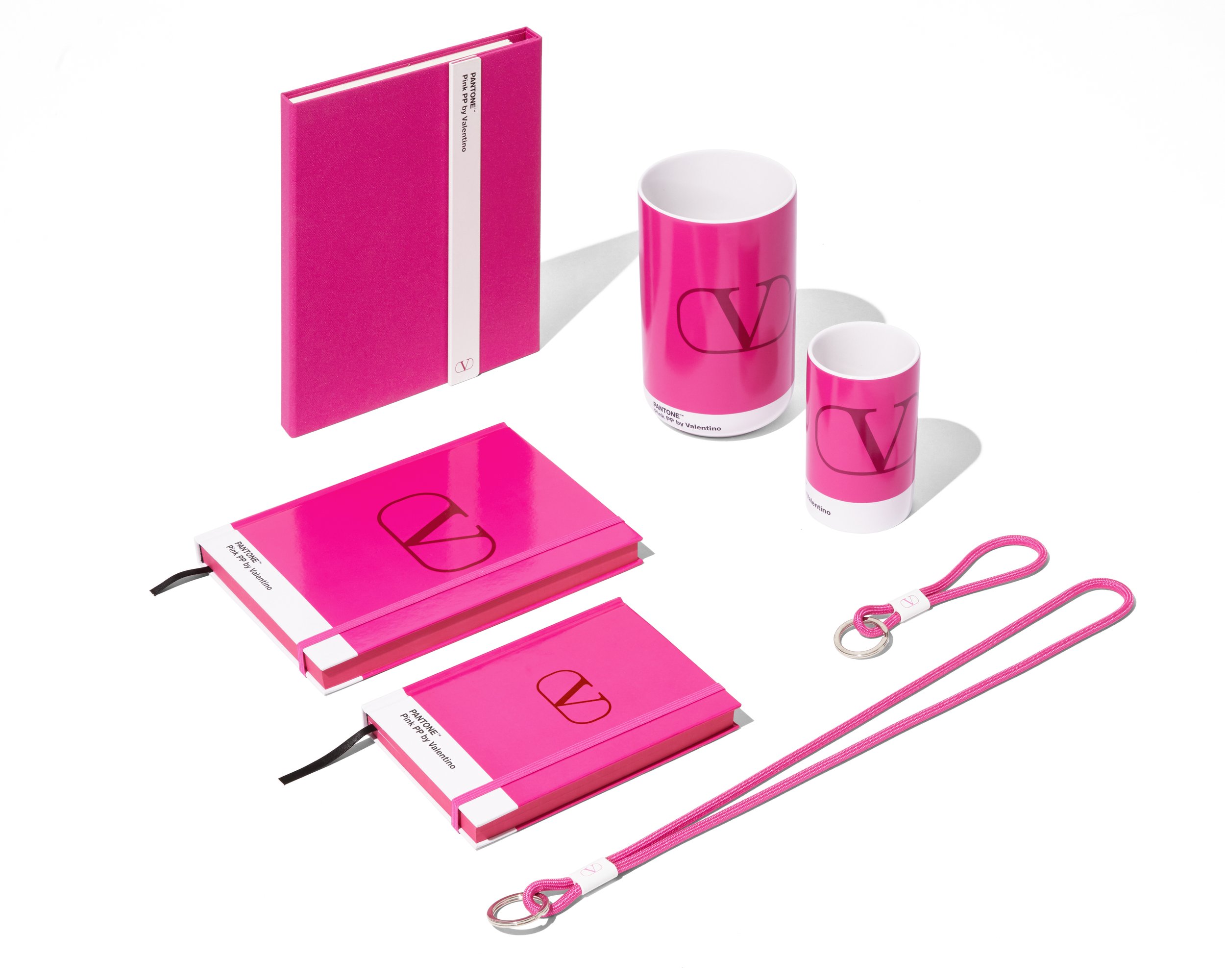
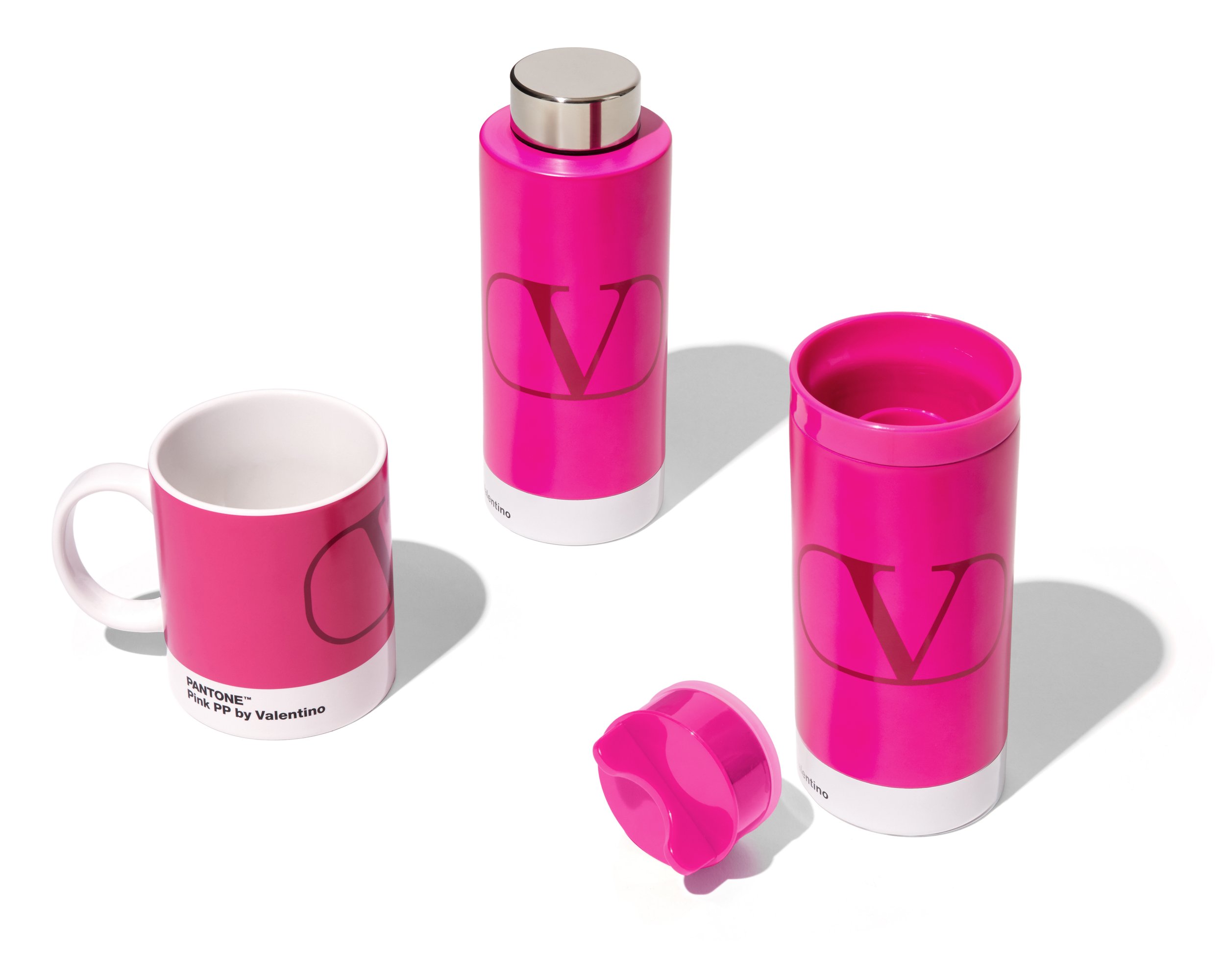
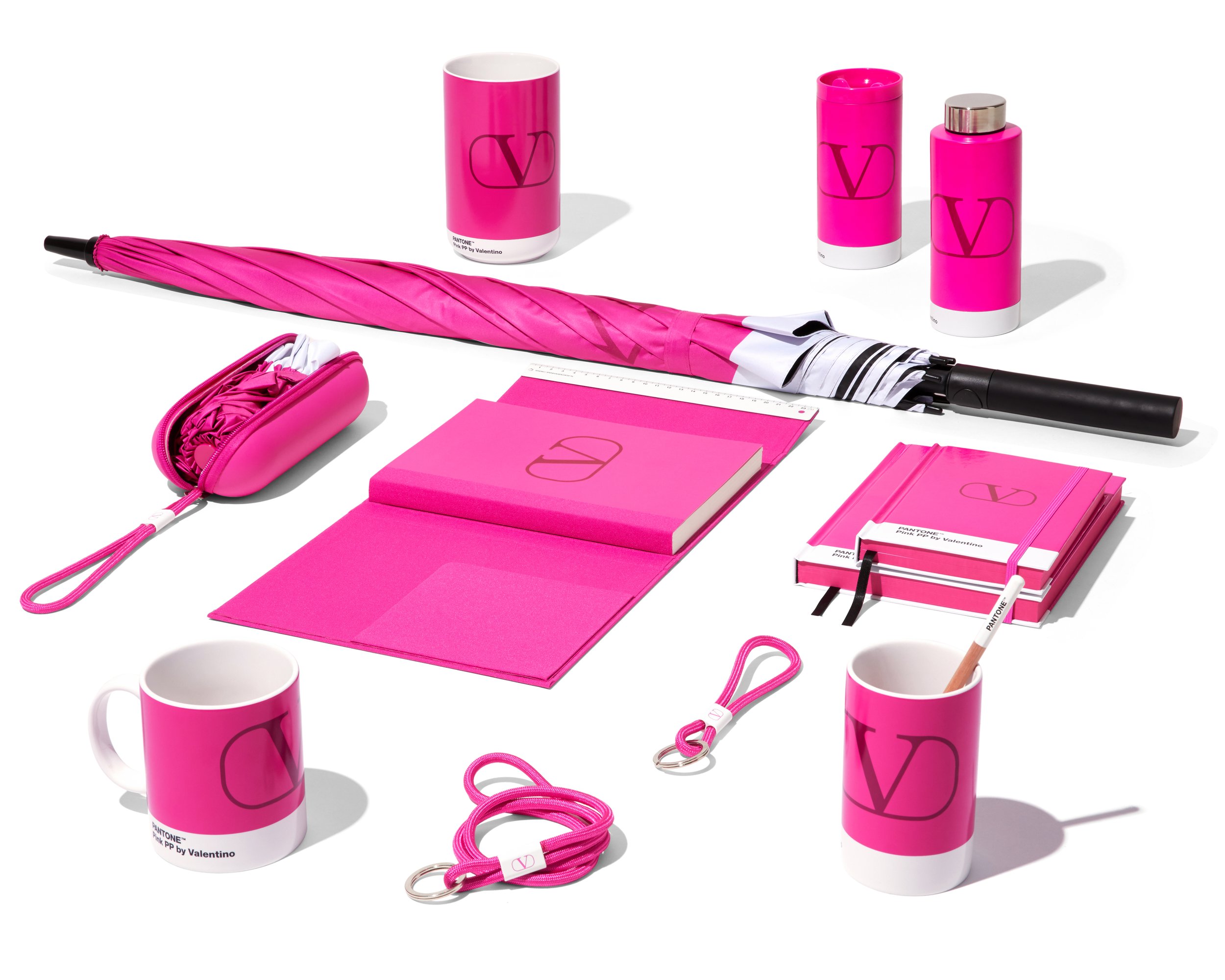

A single color, tested and refined, augmented and uplifted. The iconic Pink PP hue - first conceived for Valentino’s Pink PP Fall/Winter 2022-23 Collection - tells a story of exacting standards, extensive research, and undeniable energy. Now, the hue that has taken over billboards and pulsed down the runway is entering a new sphere.
As the first European luxury fashion brand to partner with Pantone, on a signature brand color vision, the collaboration highlights the Maison’s mastery of color, forever inscribing Creative Director Pierpaolo Piccioli’s carefully studied hue into the lexicon of design. With the special-edition items, customers can bring a piece of Pink PP into their lives, living alongside an evocative color that forever represents a pioneering vision of fashion.
Together with the Pantone Color Institute - the definitive authority on all-things color - Valentino is releasing a selection of limited-edition objects in Pink PP, brought to life by Danish object developer Copenhagen Design ApS. Individual and unrepeatable, the color can now be seen on 11 items, ranging from to-go mugs and keychains to notebooks, jars, and even a logoed umbrella. Crafted in premium materials, each item echoes the design of the iconic Pantone chip, featuring the Pink PP by Valentino color, along with the Maison’s storied logo.
To celebrate the collaboration, special pop-ups and pop- ins will be launched throughout the world in October. Entrenched in the Pink PP world, pop-ins at Valentino boutiques in Italy, France, Middle East, Singapore, Japan and more will see boutique corners drenched in the bright pink shade and sporting the 11 items. Meanwhile, special pop-ups in Tokyo’s Ginza and Omotesando districts, and in Melbourne’s Chadstone Mall allow the Pink PP effect to find traction through inventive installations.
This month, the Pink PP shade will also find itself translated into the digital. Developed with Meta’s Spark AR, an experience will bring users face to face with the iconic color on Instagram. Through this new digital effect, the face camera will transport users into a fully pink world, while the back camera will conjure up a digital puddle onto any surface, from which collection items will arise, giving way to a mixed reality experience. This innovative AR experience will be available to users globally starting from 10th Oct 2022 through Valentino’s Instagram account.
Color holds an immense and emotive power. Through the Maison’s latest collaborations, its signature hue can enter into our daily lives, leaving a carefully crafted mark on the objects we know and love.
For more information, please visit: https://www.valentino.com/en-hk/experience/pantone-and-valentino-pink-pp
The Hotel Seiryu Kyoto Kiyomizu has conserved and re-concerned the aesthetics of Japan and design by Nomura Co., Ltd A.N.D
Hotel Seiryu Kyoto Kiyomizu is a renovation initiative that aimed to preserve and re-recognize the Japanese beauty of the former Kiyomizu Elementary School with a 90-year history in Kyoto. It will have 4 floors and 6,800 square meters in total floor area.
The Hotel is located on the mountain slope with picturesque views in a district with many historical sites including significant Kyoto cultural assets, which have been nurtured by eons of history.
Hotel Seiryu Kyoto Kiyomizu is a renovation initiative that aimed to preserve and re-recognize the Japanese beauty of the former Kiyomizu Elementary School with a 90-year history in Kyoto. It will have 4 floors and 6,800 square meters in total floor area.
The Hotel is located on the mountain slope with picturesque views in a district with many historical sites including significant Kyoto cultural assets, which have been nurtured by eons of history.




The hotel's name combines two elements: Tokyo Kiyomizu, one of the world's most popular tourist destinations, and Seiryu, a legendary guardian god of Higashiyama that embodies the spirit of this one-and-only hotel built from the remnants of an historic elementary school.
There are many delicate details in the school building. The interior of the building features not only Spanish tiles, arched windows, and double-width tiles, but also decorative haunch beams, wood spandrel walls, and mosaic tile finishing.
Design by Nomura Co., Ltd A.N.D from Japan. By combining nostalgia with newness, our team made sure to pay utmost homage to western architecture. To enhance the historic details of stairs, beams, and corridors, an inorganic, black-and-white, and semi-glossy material was selected.



The Design Team converted gymnasiums and auditoriums formerly used by schoolchildren into restaurants and spas. A significant rooftop bar has been reborn on the former roof of the school building which overlooks Kyoto city. Guests can experience the old times by viewing the same Yasaka Pagoda, scenic mountains and city of Kyoto that former school children looked at.
The A.N.D team designed a space where guests can view photographs, documents, and records from the elementary school's history in order to realize the concept of "Imprint memories and connect to the future." The assemblance of spaces re-assigned with different stories creates a resounding "heritage hotel" where history, culture, and architecture come together.
This project plays an instrumental role in how we view the future for future generations, both according to the design team and the hotel. In this way, Japanese culture is passed on to them as well as their sense of regionality and sociality from their parents.
Designer Profiles
Left: 株式会社乃村工藝社 A.N.D. 小坂竜 A.N.D., Nomura Co., Ltd. Ryu Kosaka
Top Left: 株式会社乃村工藝社 A.N.D. 浦田 晶平 A.N.D., Nomura Co., Ltd. Shohei Urata
Top Right: 株式会社乃村工藝社 A.N.D. 安田 紘基 A.N.D., Nomura Co., Ltd. Hiroki Yasuda
Lower Left: 株式会社乃村工藝社 萠抜 徹 Nomura Co., Ltd. Toru Haenuki
Lower right: 株式会社乃村工藝社 西川 裕之 Nomura Co., Ltd. Hiroyuki Nishikawa
This project won the Bronze award in the interior design division of Sky Design Awards www.skydesignawards.com in 2021.
For more information about 株式会社乃村工藝社 A.N.D, please visit:
Kyushu Voice in Japan, Design by Jindesign Co., Ltd
In order to revitalize the economy and culture of Kyushu, Kyushu Voice aims to promote Kyushu products in Japan and around the world. As a home base for the project, this building fulfills three purposes, including serving as a new symbol of Kyushu's history and nature. It also serves as a shop selling a variety of products made in Kyushuin along with a workshop developed with local producers and citizens.
In order to revitalize the economy and culture of Kyushu, Kyushu Voice aims to promote Kyushu products in Japan and around the world. As a home base for the project, this building fulfills three purposes, including serving as a new symbol of Kyushu's history and nature. It also serves as a shop selling a variety of products made in Kyushuin along with a workshop developed with local producers and citizens.
Kyushu Voice's base is located in Dazaifu, the most suitable city for this project because of its history and popularity as a central city of Kyushu. From ancient times until the Heian period, Dazaifu was the imperial office in charge of Kyushu. There are around ten million tourists visiting this historical city every year, both from inside and outside the country.
At the core of this project, it is imperative to demonstrate modern Japanese architecture that incorporates tradition and innovation. As such, it was not necessary to construct a bespoke building, but rather to renovate an existing structure with a long history. Tokyotaka Aoki, principal architect of Jindesign Co., Ltd. from Japan, chose a wooden old folk house around 100 years old that was located on Kotoriishoji. It was 2 minutes away from Dazaifu Tenmangu shrine because of its condition and location.
Moreover, Mr. Aoki designed the building to display the latest Japanese architecture and function as a shop and a community center in the area.






In keeping with the tradition of the building, the designer decided to conserve the tile roof. Aside from this, it is located along a tasteful street, so its façade needed to match the historic Dazaifu. To design its façade, Mr. Aoki drew inspiration from a traditional Japanese warehouse, "Kura". "Kura" has the character of a massive white wall of plaster, similar to the White Cube, an architectural element associated with Modernism. In addition, its traditional elements were applied to its façade design.
The designer further emphasized the modernist theme by inserting white volumes with a columnless open space, similar to the Kura pattern. A row of wooden frames shaped like gates was arranged in order to remind us of a shrine's main entrance. As a result of the construction and reinforcement of the 5.5m span columnless space, the lighting in the frames provided opportunities for people to enter.
"Kyushu Voice" is the silver winning project of Sky Design Awards 2022 in the "The New Black" architecture division,
*The New Black is a new award designed to discover and recognise young architects and designers, or small projects such as pop-up, residential, or retail shops with project sizes up to 50m2 (540 ft²).
*The New Black entrants must be either under 38 years of age OR the project submitted must be less than 50m2 (with no age limitation).
For more information about this project, please visit: https://www.jindesign.co.jp/ or visit the www.skydesignawards.com
R100 Tokyo promotes the cross-cultural aspects of Opus Arisugawa in Japan
With the "R100 TOKYO" brand, Rebita offers essential living in a direct location in the heart of Tokyo with over 100 square meters of exclusive living space. This unit has been designed according to the concepts of "CROSS-CULTURAL" and "COMPELLING MINIMALISM", and OEO Studio, long inspired by Japan, has added a new proposal based on the sensibilities of Scandinavia and Japan.
Through collaboration with OEO studio, With the collaboration of OEO studios, R100 Tokyo promotes Opus Arisugawa's cross-cultural aspects in Japan
Over a 100 square-meter unit has been developed by Rebita Corporation in cooperation with NTT Urban Development Corporation (Head Office: Chiyoda-ku, Tokyo; President: Junichi Kawashima.), developed within Opus Arisugawa, a leading Tokyo condominium . The unit was designed by Copenhagen, Denmark-based OEO Studio as the first residential design available for sale.
Rebita is proud to announce that they have teamed up with the design firm, OEO studio, to create a new concept for living in Tokyo. This unit has been designed according to the concepts of "CROSS-CULTURAL" and "COMPELLING MINIMALISM", and OEO Studio, long inspired by Japan, has added a new proposal based on the sensibilities of Scandinavia and Japan.
The result is R100 TOKYO - a 100 square meter unit that provides essential living in a direct location in the heart of Tokyo through collaboration between two cultures. OEO Studio is a design company that specializes in creating products and spaces that are both compelling and minimalistic. The company's signature approach is to express a simple yet compelling narrative through the use of materials and subtle, precise details. Through this partnership, R100 hopes to promote cultural similarities between Scandinavia and Japan while observing Japan from a slightly different perspective.
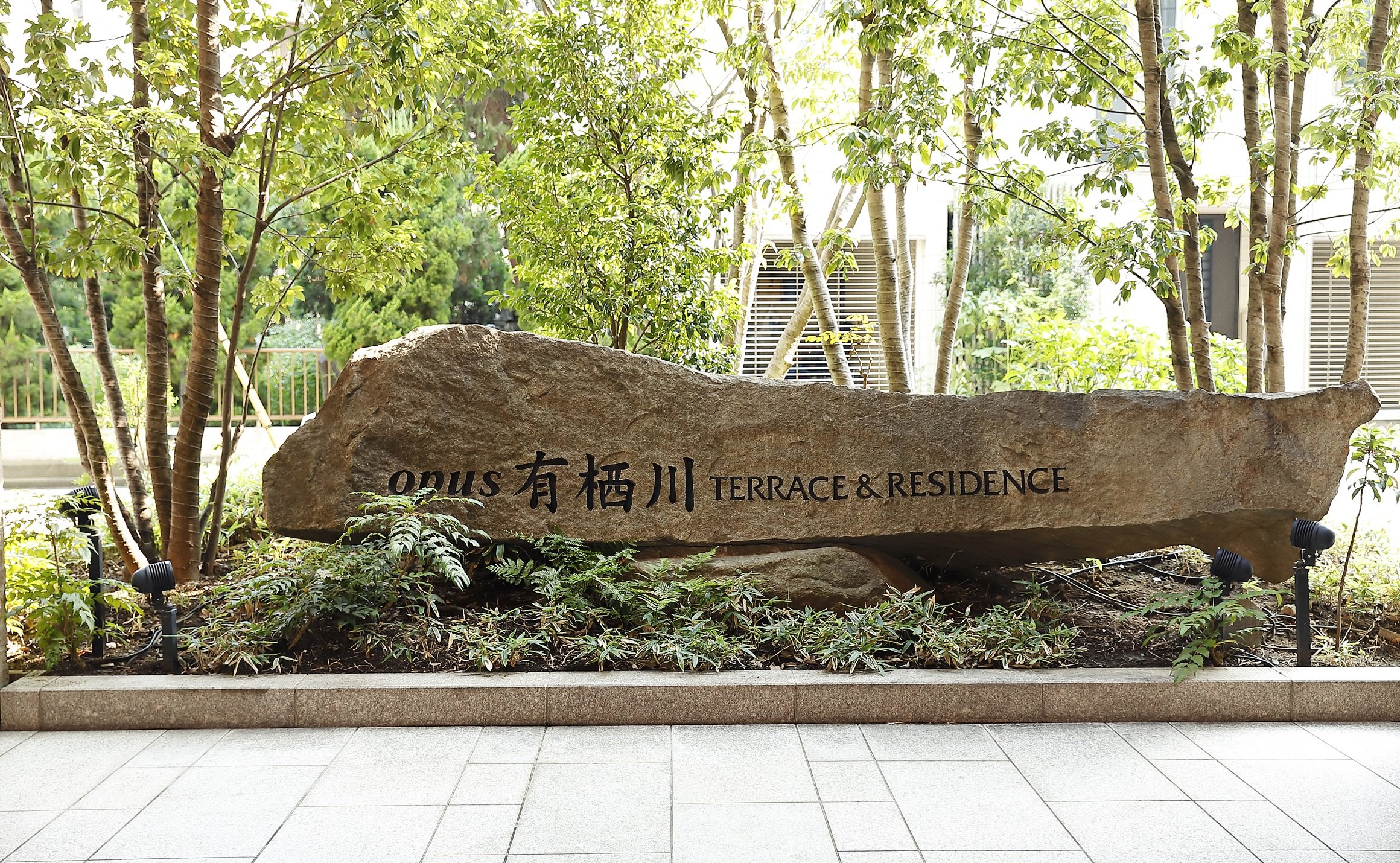
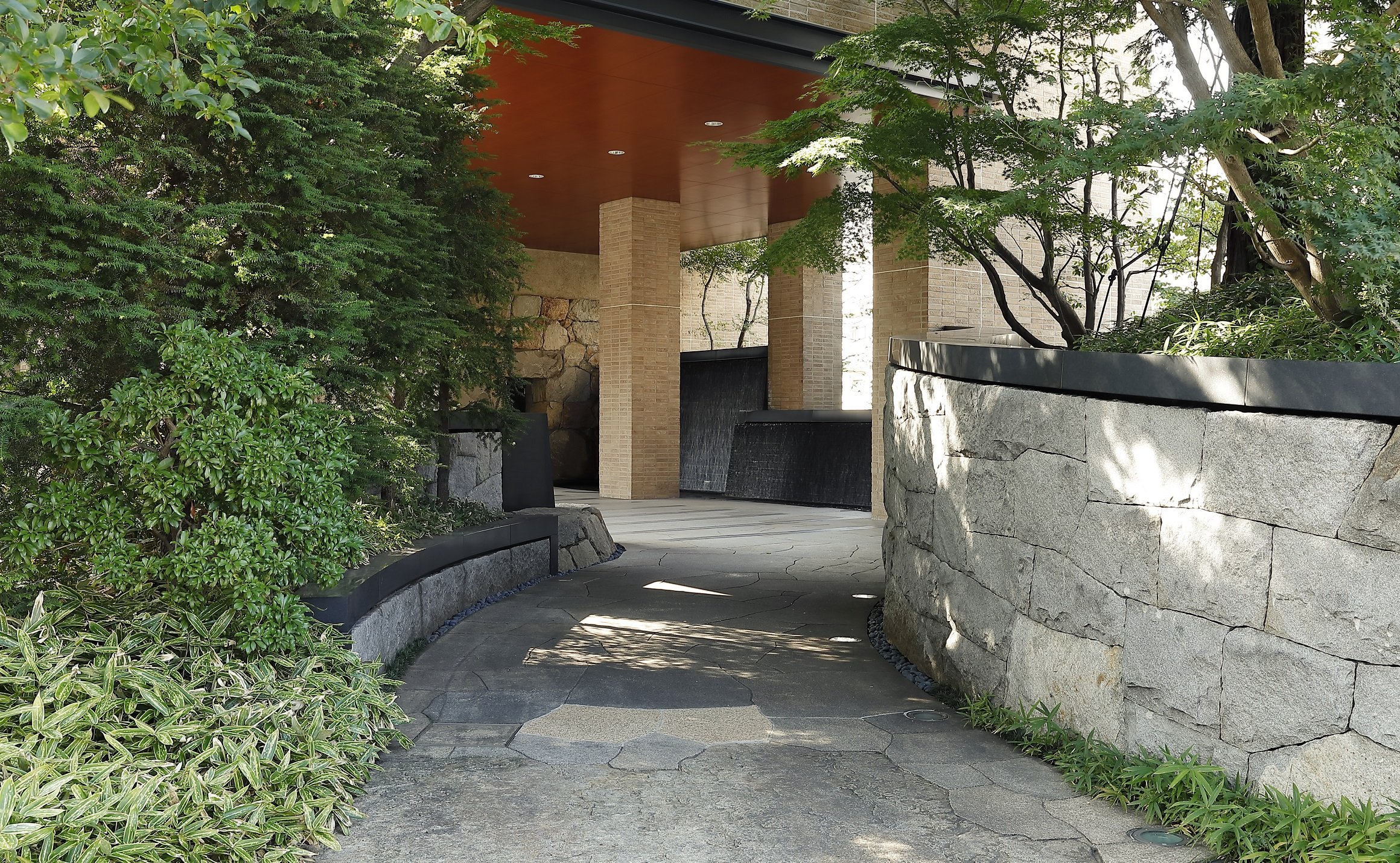
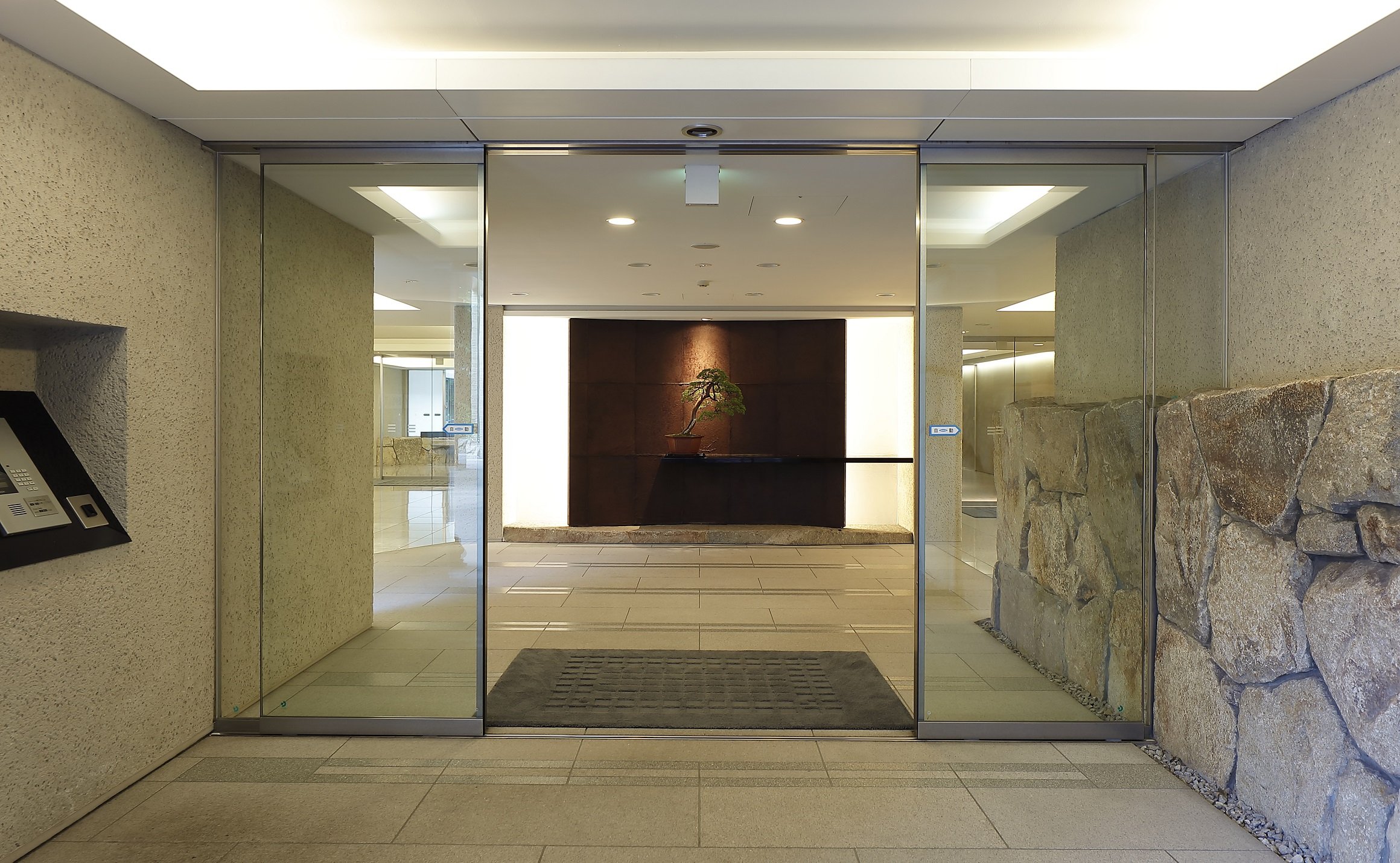
About the Concept

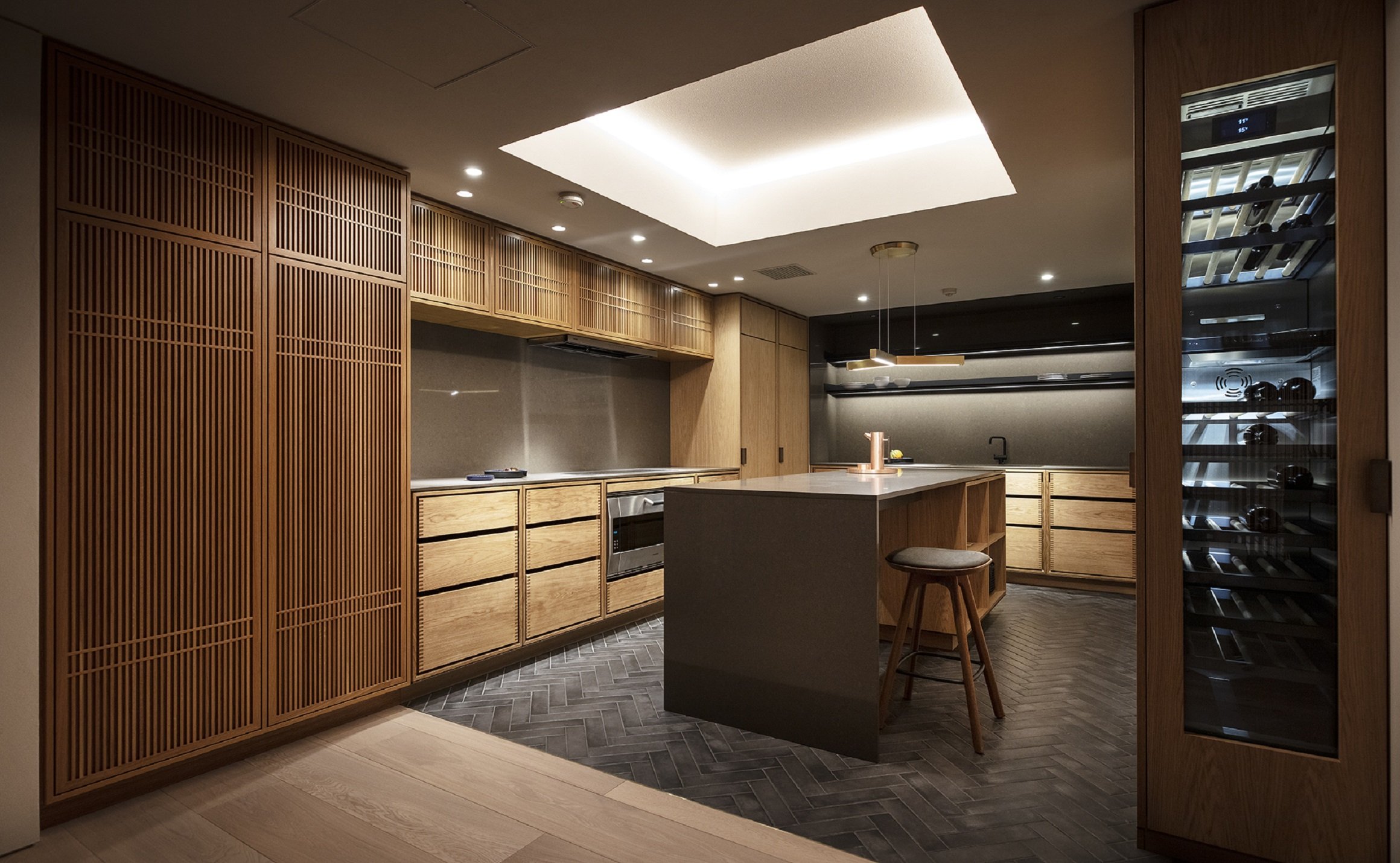



Above images: A variety of natural materials are used in the design of natural spaces
Scandinavian and Japanese cultures share a sense of natural materials, and the units draw extensively on natural elements. The oil finish is given to solid wood as much as possible so that it can change even more beautifully over time. Garde Hvalsøe (also written as Garde Vels), a Danish kitchen workshop, designed and constructed the large wooden kitchen, which is the first of its kind ever to be shown to the public. As it is used more and more, the solid wood will become a symbol of the residence because it is reminiscent of Danish cabinetry from the 1950s. With this property, you will be able to experience Scandinavian and Japanese cultures at the same time, and as you live there longer, the more blessings you will reap.
Background of Planning Recent growth in the urban luxury condominium market has occurred along with the emergence of a new group of buyers, including young entrepreneurs and executives, and there is a growing demand for homes that exceed traditional values such as real estate market prices and features of homes. Located in the heart of Tokyo's city center, R100 TOKYO from Rebita International offers one-of-a-kind residences designed by numerous architects and designers in order to provide "homes that look forward 100 years".
With the acquisition of Opus Arisugawa, a superior urban residence in terms of both location and specifications, we aim to offer a one-of-a-kind residence that will maximally express what R100 TOKYO wishes to offer, which led us to design this residence.
Japanese people have respected nature for thousands of years, taking in the surrounding scenery and sunlight, blending it with materials that make up their homes, and experiencing the changes and beauty of the four seasons each day. With their fusion, Japanese culture and Scandinavian values would enhance and sublimate each other. The design of this unit is a collaboration between R100 Tokyo and OEO Studio, a Danish architectural firm with deep cultural knowledge of Japanese design and culture, with the goal of creating a "cross-cultural" design based on Japanese culture.
Please visit: https://r100tokyo.com/sales/akasaka-aoyama-azabu/opus3rdflooroeostudio/ for more information
Or stay tuned with our Upcoming new publication of “One Story” for the story of R100 Tokyo.
OEO Studio has designed interiors, furniture, and products around the world, in addition to a number of projects in Japan, including the Kaikado Cafe, a collaboration with a Kyoto craftsman, as well as the interior design for the INUA restaurant in Tokyo.
Left: Thomas Lykke, Head of Design & Founding Partner at OEO Studio
Right: Anne-Marie Buemann, Managing Partner at OEO Studio
Apartment with Six Void in Fudomae, Japan
A city with a dense population in Japan has many small houses and apartments. Fudomaw's apartment with six voids was designed by Akira Koyama from Key Operations Inc. This project won the bronze award in the architecture category in the 2021 Sky Design Awards.
In an area near the entrance to Meguro Fudoson, a Buddhist temple, a five-storey apartment complex with 14 units was built. In order to develop a parcel relatively deep with an extremely tight frontage in central Tokyo, the main theme for the design was to provide daylight and airflow wherever possible. The design also maintained density, thereby optimizing rental rates. Additionally, voids were established to meet the local ordinance requirement of an evacuation route.
A city with a dense population in Japan has many small houses and apartments. Fudomaw's apartment with six voids was designed by Akira Koyama from Key Operations Inc. This project won the bronze award in the architecture category in the 2021 Sky Design Awards.
In an area near the entrance to Meguro Fudoson, a Buddhist temple, a five-storey apartment complex with 14 units was built. In order to develop a parcel relatively deep with an extremely tight frontage in central Tokyo, the main theme for the design was to provide daylight and airflow wherever possible. The design also maintained density, thereby optimizing rental rates. Additionally, voids were established to meet the local ordinance requirement of an evacuation route.
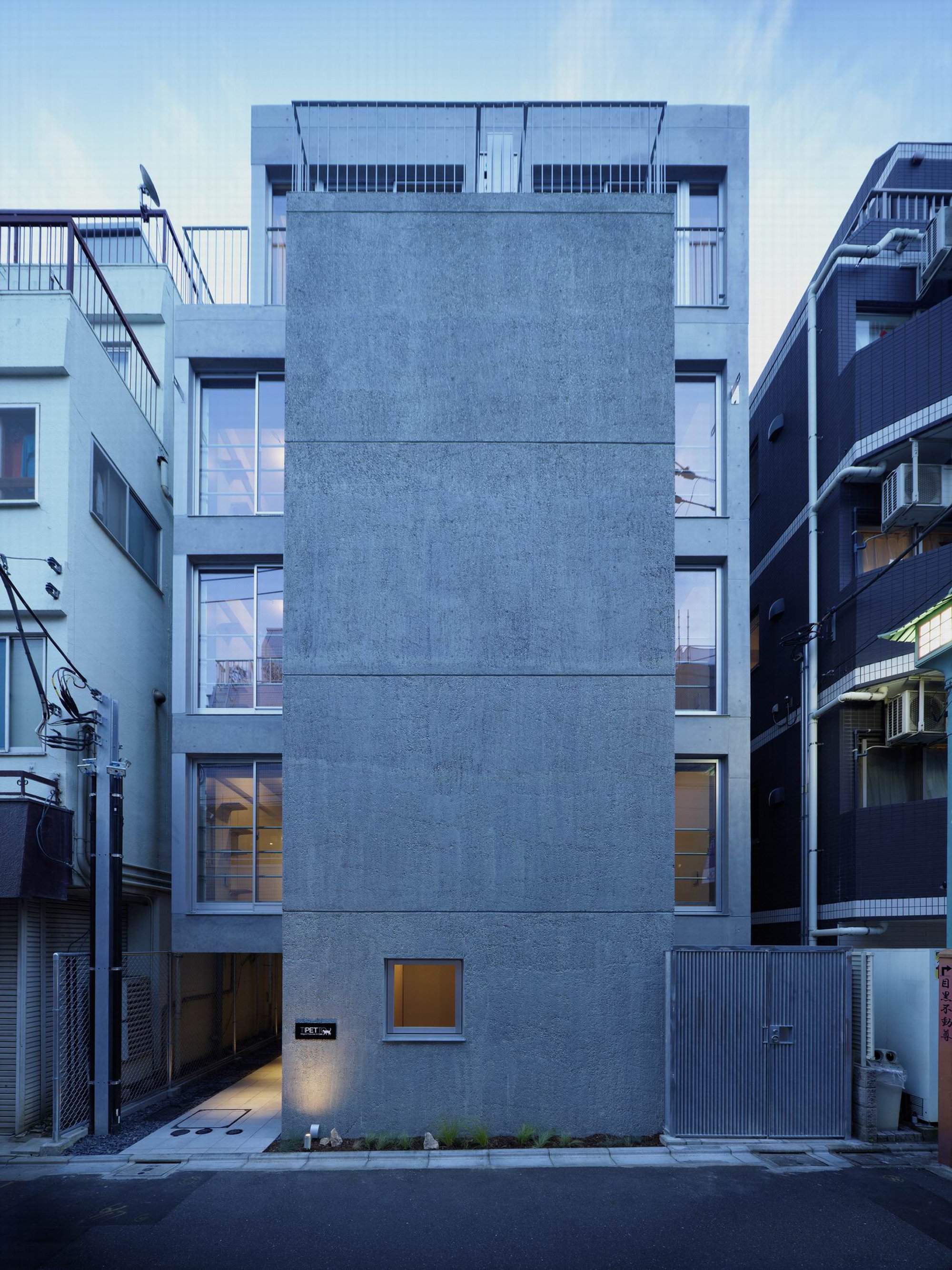
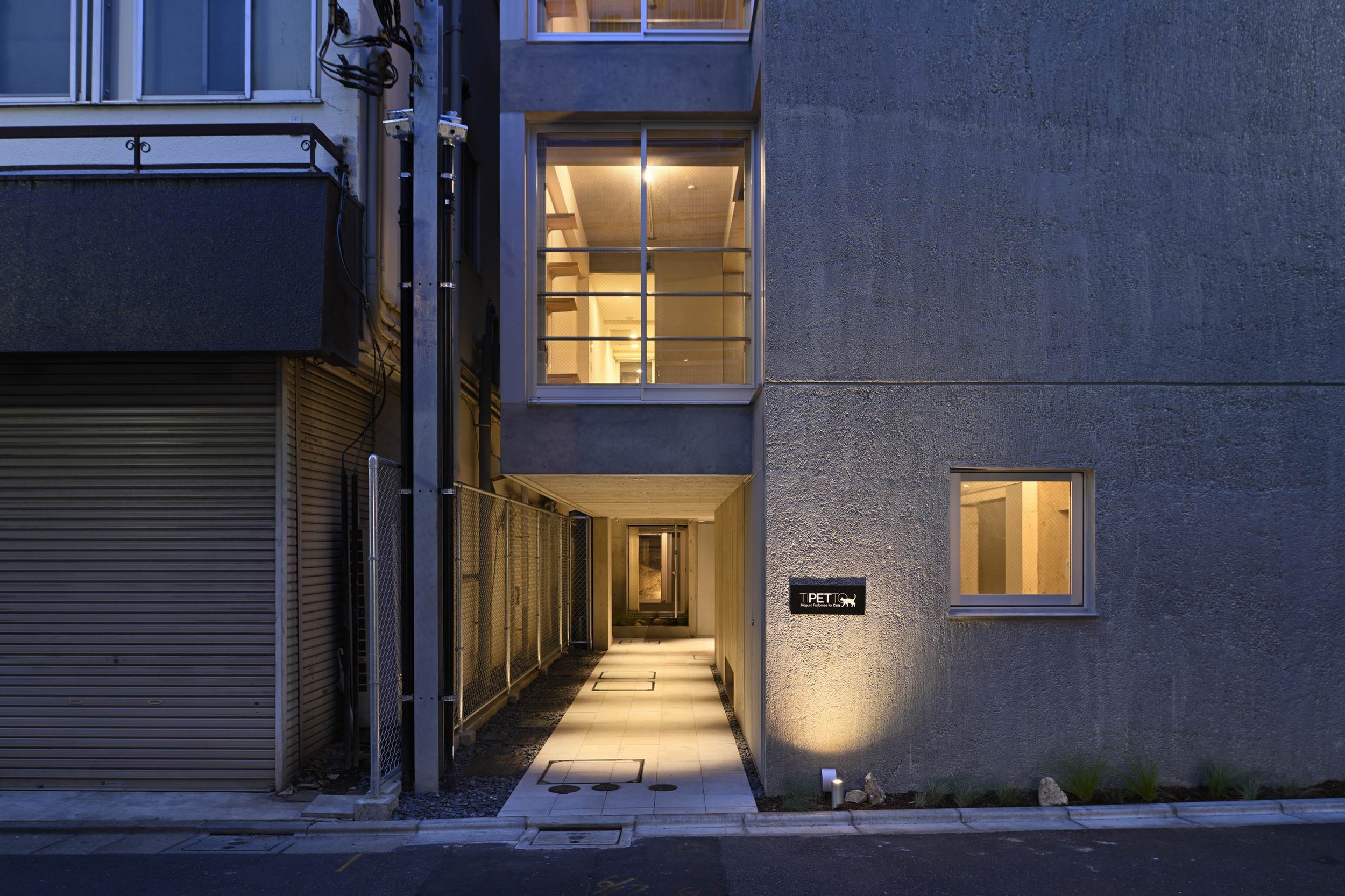
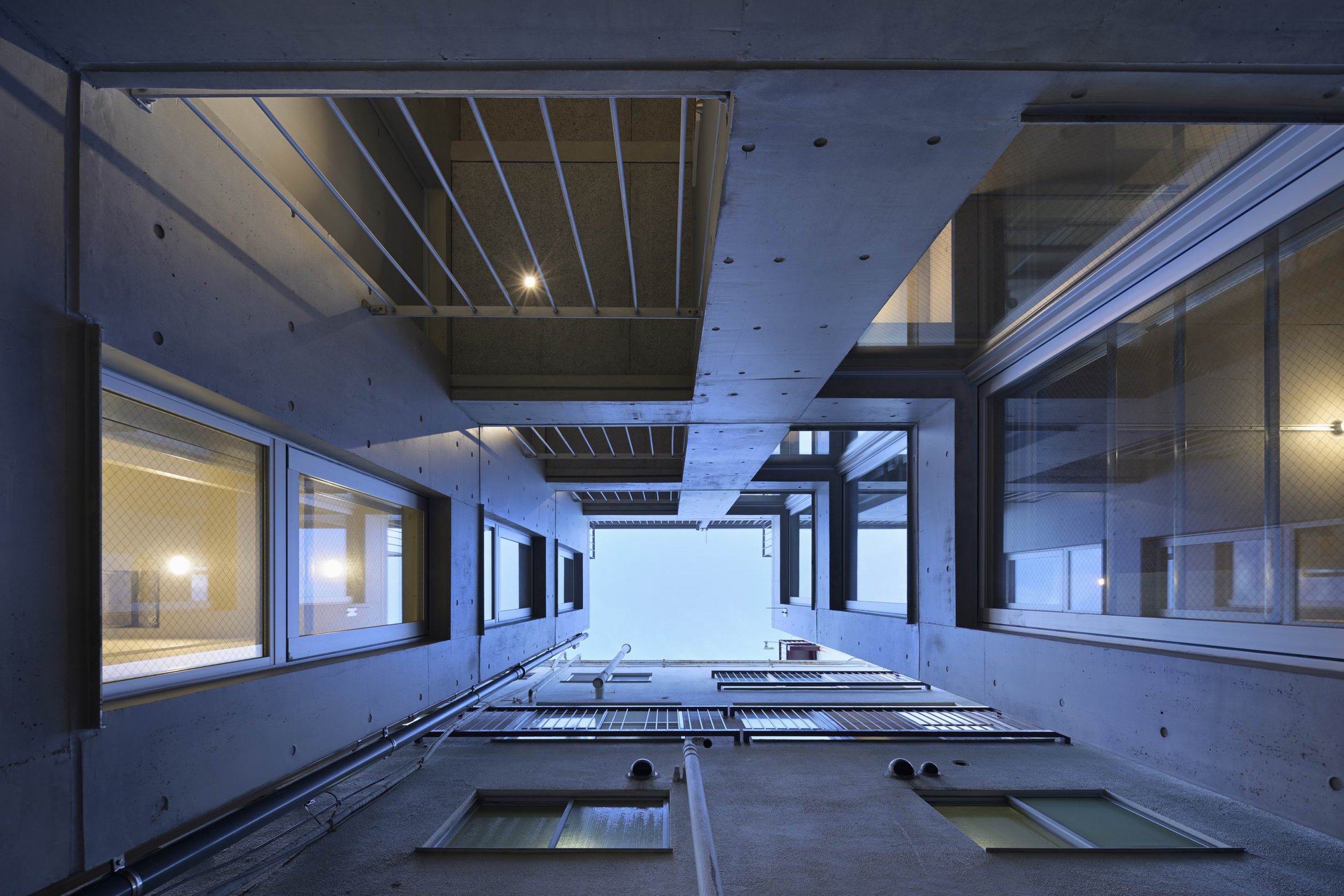
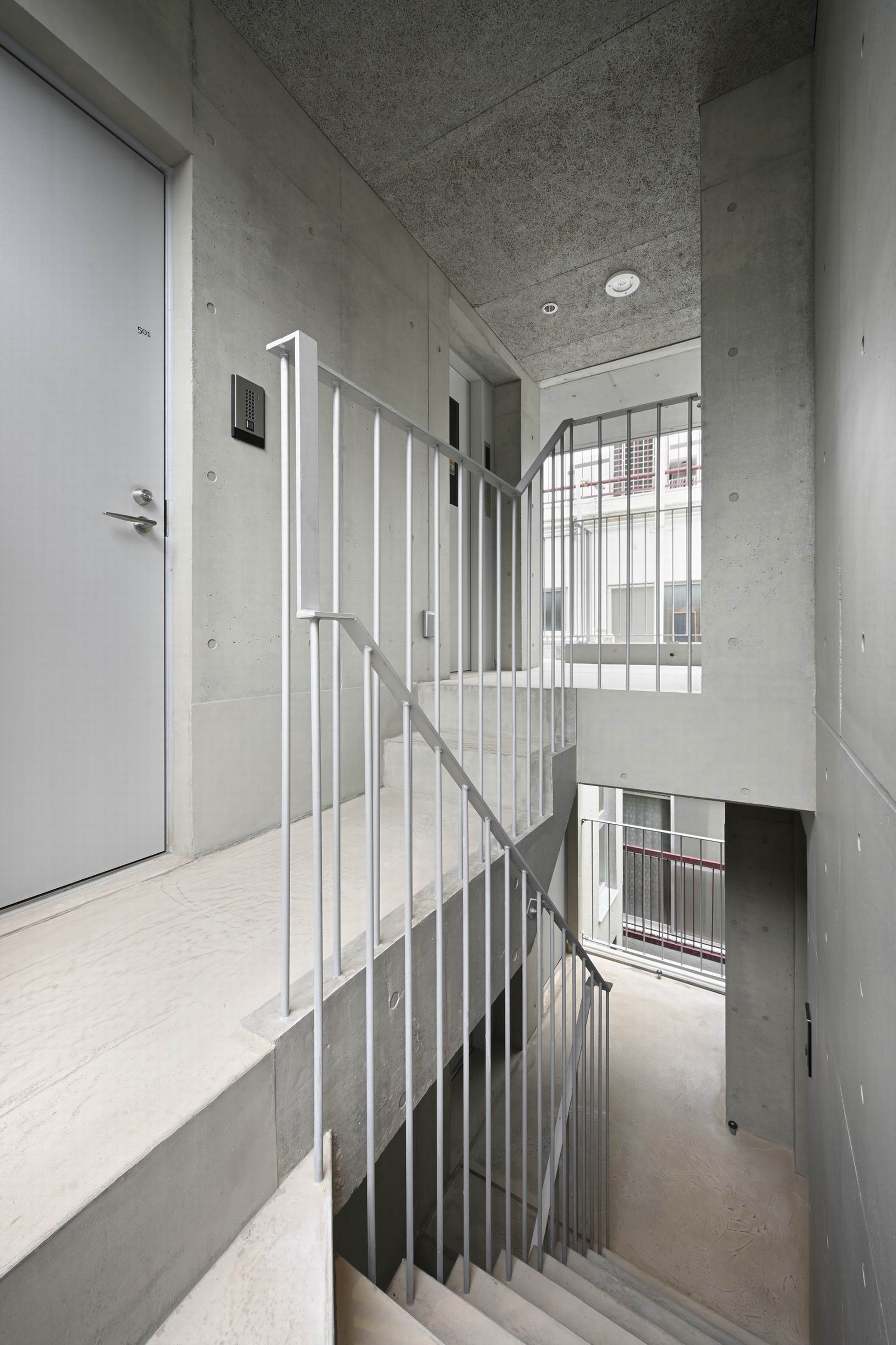
The completed building consists of two volumes, front and rear, separated by open corridors and stairs ascending to all floors. There are six vertical voids in each volume that focus light downward for a comfortable indoor environment. Each volume is notch-notched to reveal six vertical voids. In this complex, studio flats are arranged so that the bathrooms are at the center of the volume and the corridor runs along the exterior wall. Internally, the corridors serve to provide natural ventilation through the six voids from the front to the back. Similarly, the one-bedroom flats of the rear volume have bath areas at the core and can also be traversed past the entry and kitchen to the living room or bedroom, so a circular path can be followed around the entire perimeter of the apartment. Within the vicinity of windows facing the voids, there is a loft and stairs for cats. While humans relax in the same area, cats can bask in the sun and explore outside. On the whole, the indoor environment is conducive for humans and cats.
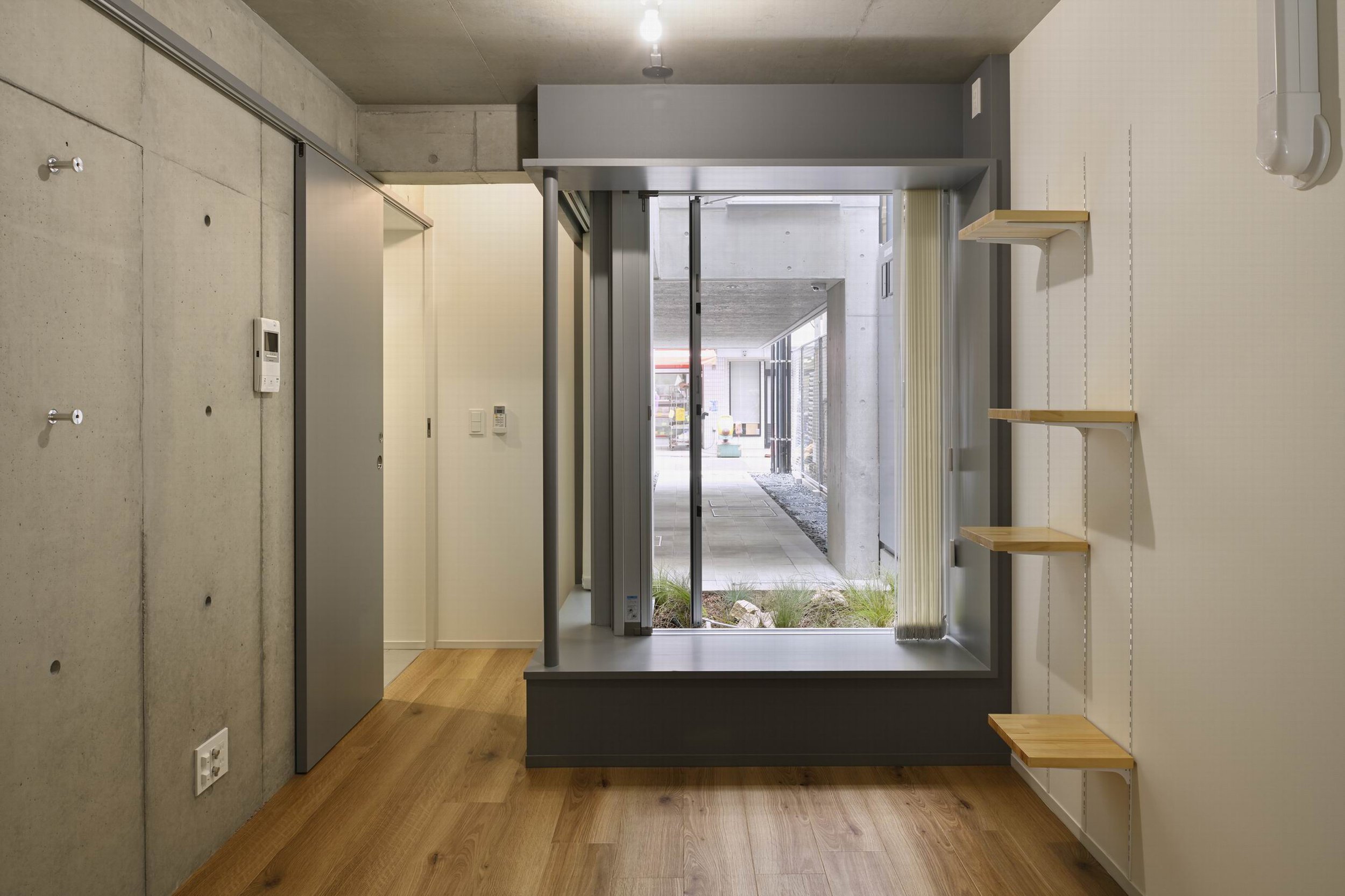
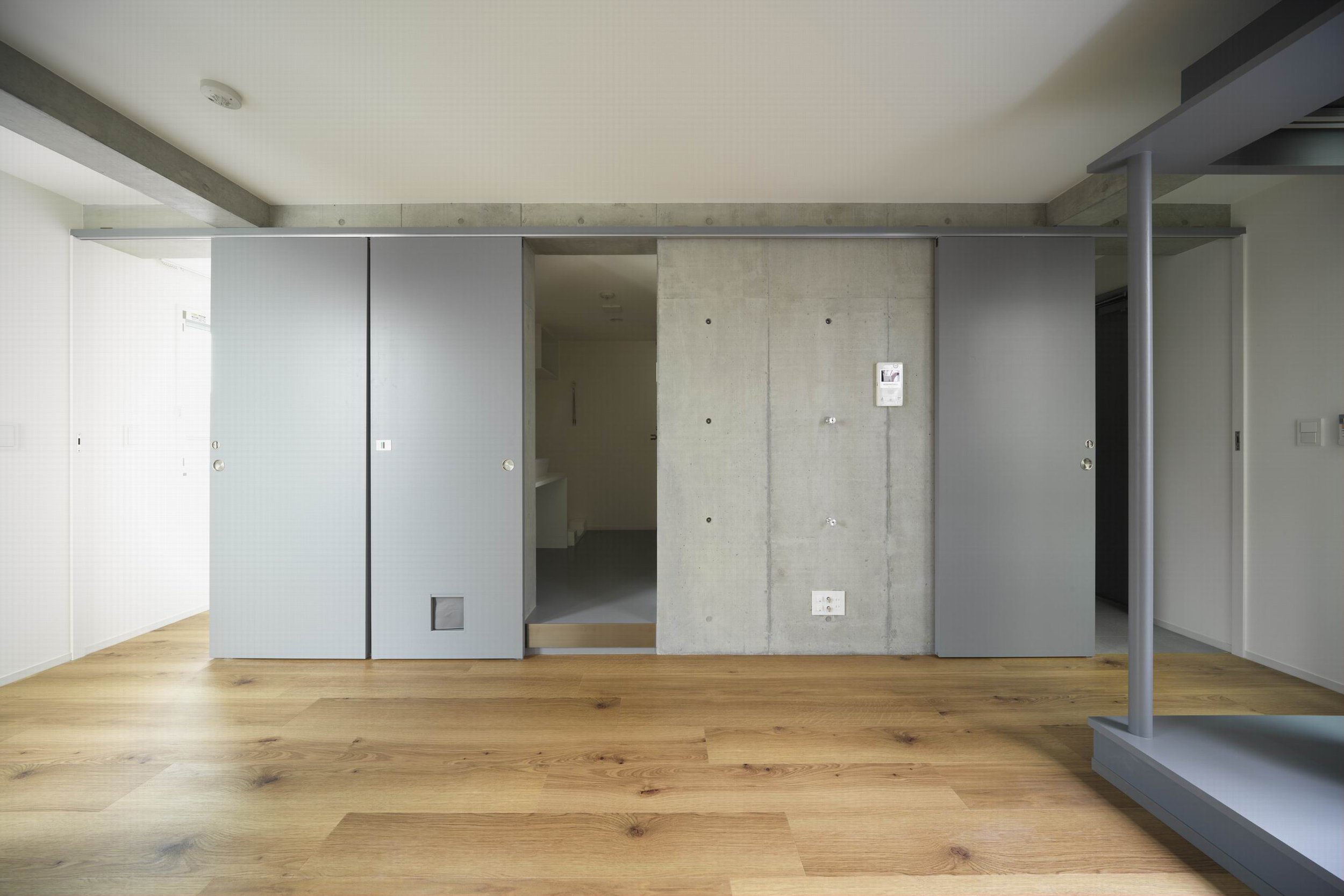
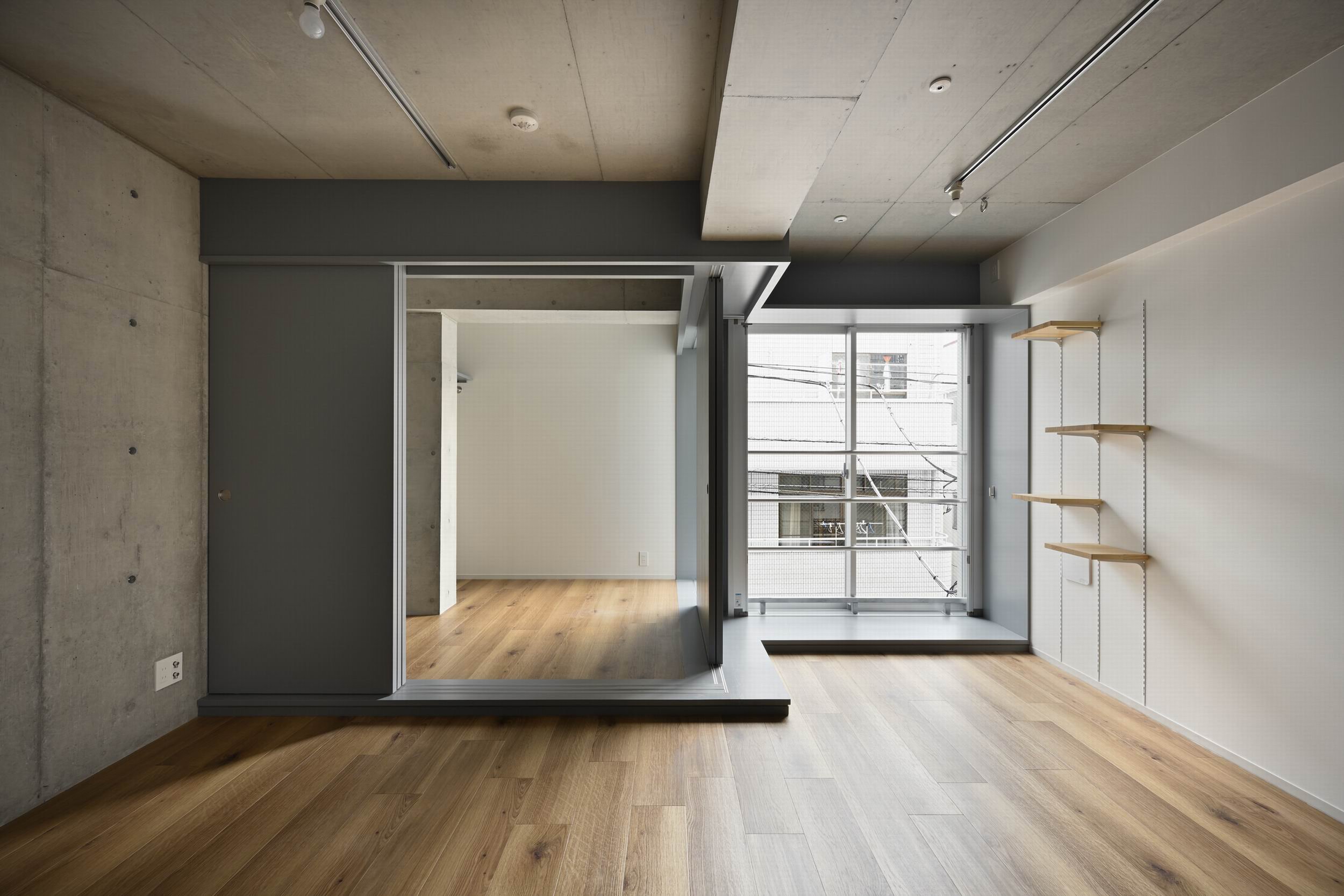
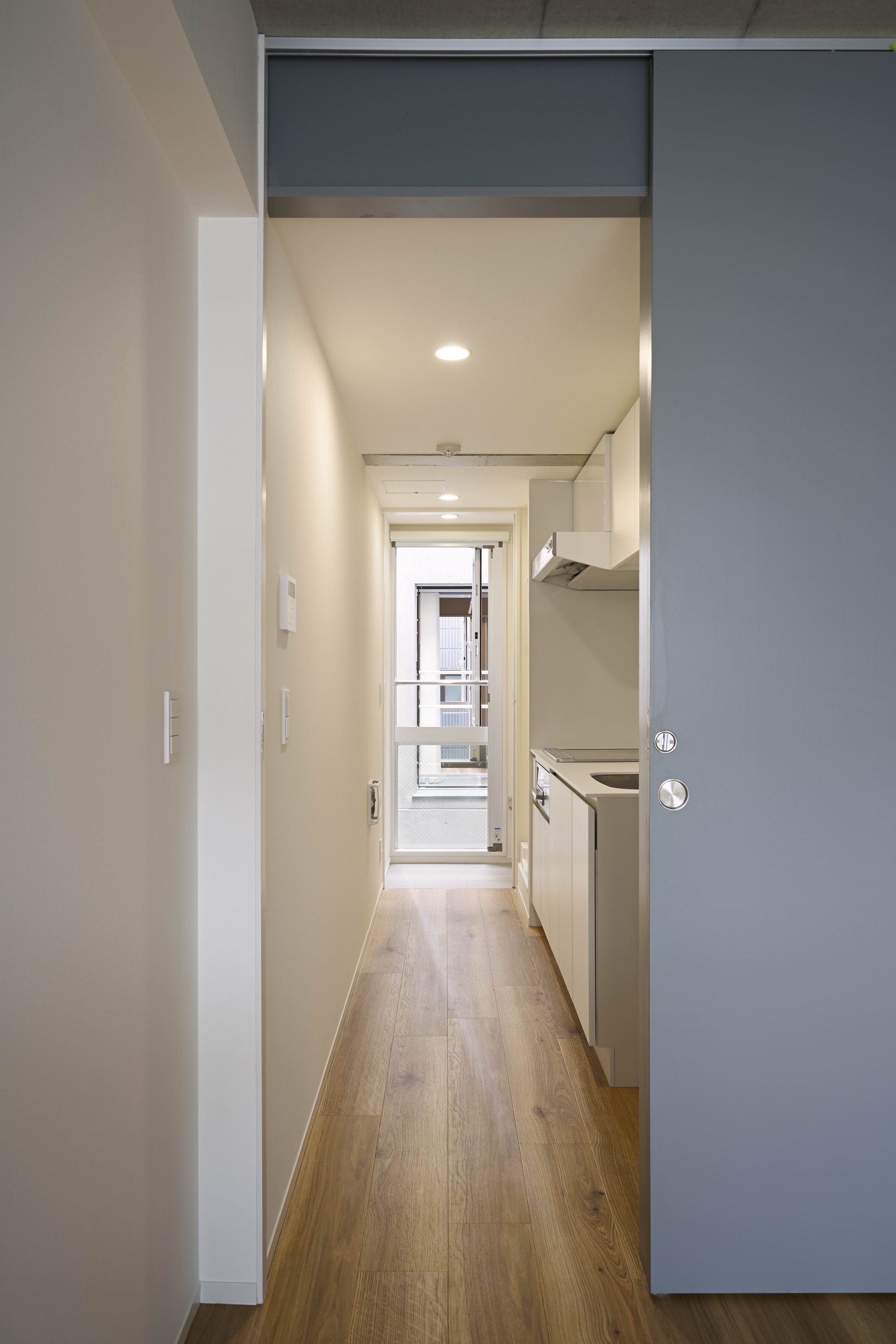
The COVID-19 experience highlights the importance of including outdoor spaces in the design, like windows, balconies, rooftops, and courtyards, as well as plazas, parks, and other open spaces. Within this flat complex, there are voids which create poor airflow to the back to ensure natural ventilation.
Although a studio layout was initially requested for the larger flats designed for two occupants, the final plan establishes two mutually separate, comfortable living spaces connected by corridors along the full perimeter of the building. Separate "meeting" rooms are available to both residents if they are both working at home and provide quiet work environments without having to worry about noise from the other. Furthermore, accommodations provide comfort through pets to the "post Coronavirus" generation.
Drawing/ Planning
